Iucn red list near threatened Stock Photos and Images
(1,356)See iucn red list near threatened stock video clipsQuick filters:
Iucn red list near threatened Stock Photos and Images
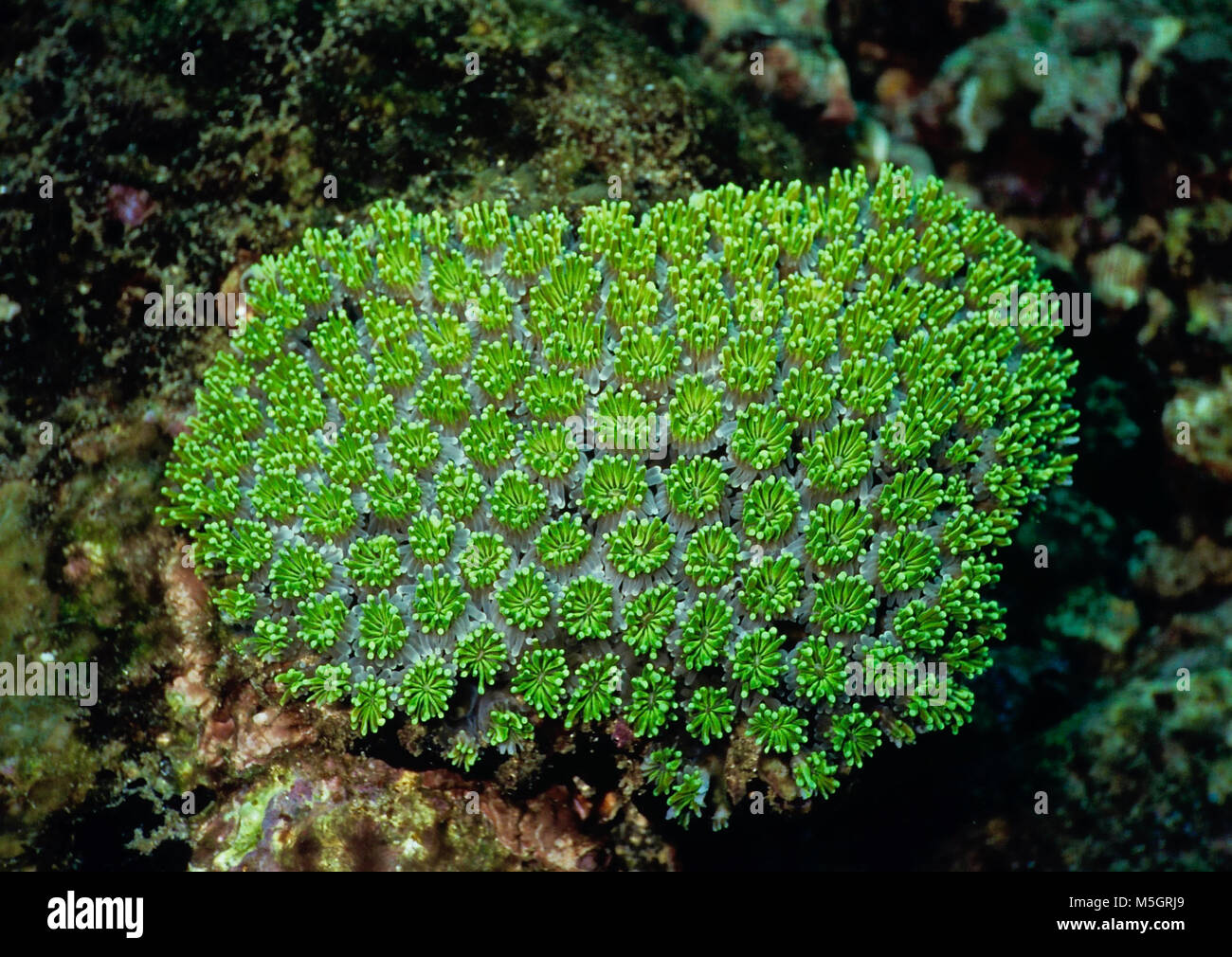 Colonies of this hard stony green coral (Monastrea annuligera: each polyp 2 cms.) can form sizeable boulders. It used to be seen quite frequently in tropical reefs in many parts of the world. However, it has suffered significant population reduction during the last twenty years, mainly because of reef degradation due to pollution and the effects of global warming - but also because it is considered particularly beautiful and so is harvested for the aquarium trade. The IUCN Red List indicates that it is a near threatened species. Photographed off Hurghada in the Egyptian Red Sea. Stock Photohttps://www.alamy.com/image-license-details/?v=1https://www.alamy.com/stock-photo-colonies-of-this-hard-stony-green-coral-monastrea-annuligera-each-175546737.html
Colonies of this hard stony green coral (Monastrea annuligera: each polyp 2 cms.) can form sizeable boulders. It used to be seen quite frequently in tropical reefs in many parts of the world. However, it has suffered significant population reduction during the last twenty years, mainly because of reef degradation due to pollution and the effects of global warming - but also because it is considered particularly beautiful and so is harvested for the aquarium trade. The IUCN Red List indicates that it is a near threatened species. Photographed off Hurghada in the Egyptian Red Sea. Stock Photohttps://www.alamy.com/image-license-details/?v=1https://www.alamy.com/stock-photo-colonies-of-this-hard-stony-green-coral-monastrea-annuligera-each-175546737.htmlRFM5GRJ9–Colonies of this hard stony green coral (Monastrea annuligera: each polyp 2 cms.) can form sizeable boulders. It used to be seen quite frequently in tropical reefs in many parts of the world. However, it has suffered significant population reduction during the last twenty years, mainly because of reef degradation due to pollution and the effects of global warming - but also because it is considered particularly beautiful and so is harvested for the aquarium trade. The IUCN Red List indicates that it is a near threatened species. Photographed off Hurghada in the Egyptian Red Sea.
 Marabou Stork (Leptoptilos crumeniferus), perched on a tree, This bird is listed as Near Threatened Stock Photohttps://www.alamy.com/image-license-details/?v=1https://www.alamy.com/marabou-stork-leptoptilos-crumeniferus-perched-on-a-tree-this-bird-is-listed-as-near-threatened-image510005575.html
Marabou Stork (Leptoptilos crumeniferus), perched on a tree, This bird is listed as Near Threatened Stock Photohttps://www.alamy.com/image-license-details/?v=1https://www.alamy.com/marabou-stork-leptoptilos-crumeniferus-perched-on-a-tree-this-bird-is-listed-as-near-threatened-image510005575.htmlRM2MHMN8R–Marabou Stork (Leptoptilos crumeniferus), perched on a tree, This bird is listed as Near Threatened
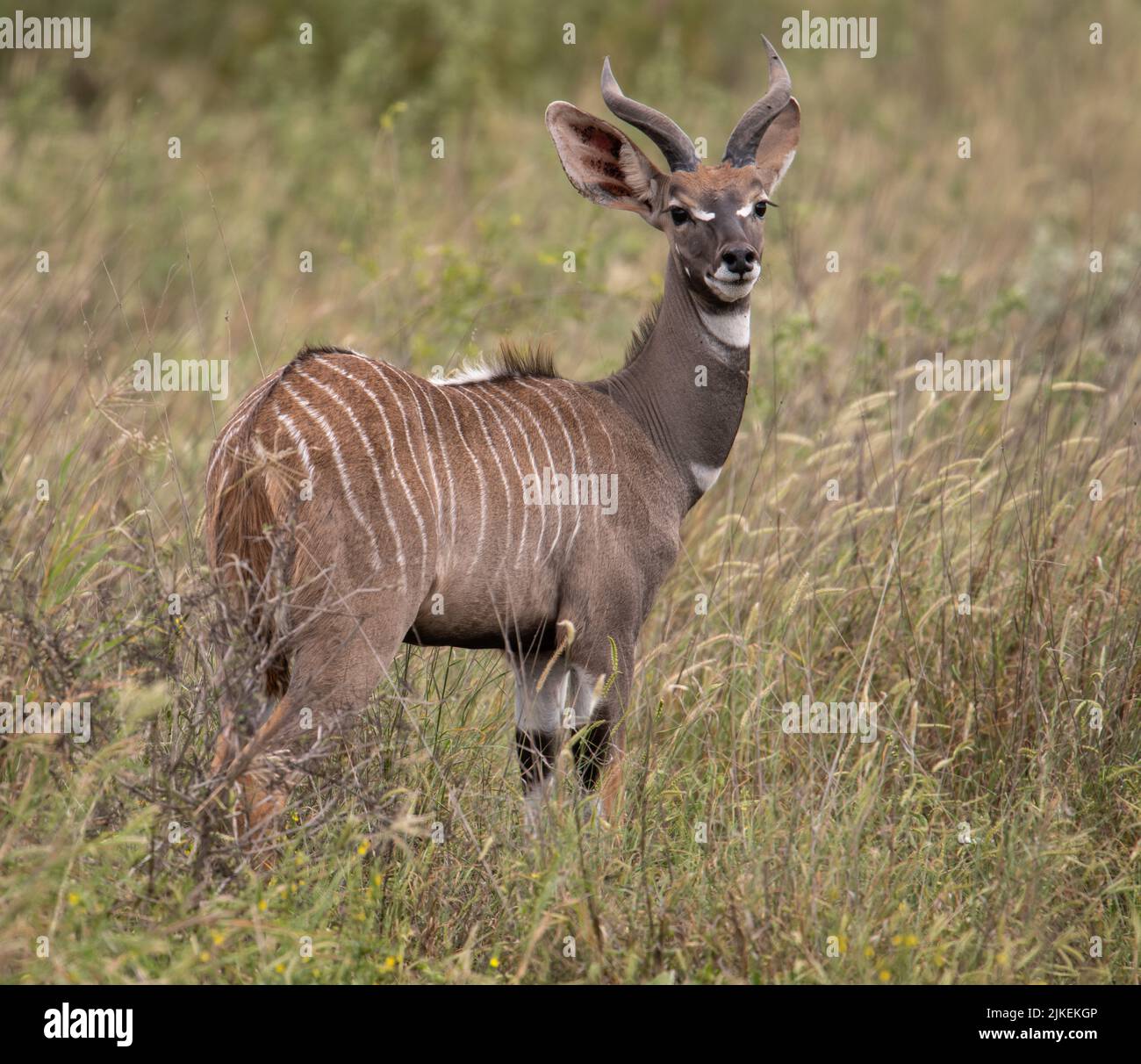 Lesser male kudu standing in the tall grass of the forest of Tsavo West, Kenya. Stock Photohttps://www.alamy.com/image-license-details/?v=1https://www.alamy.com/lesser-male-kudu-standing-in-the-tall-grass-of-the-forest-of-tsavo-west-kenya-image476681094.html
Lesser male kudu standing in the tall grass of the forest of Tsavo West, Kenya. Stock Photohttps://www.alamy.com/image-license-details/?v=1https://www.alamy.com/lesser-male-kudu-standing-in-the-tall-grass-of-the-forest-of-tsavo-west-kenya-image476681094.htmlRF2JKEKGP–Lesser male kudu standing in the tall grass of the forest of Tsavo West, Kenya.
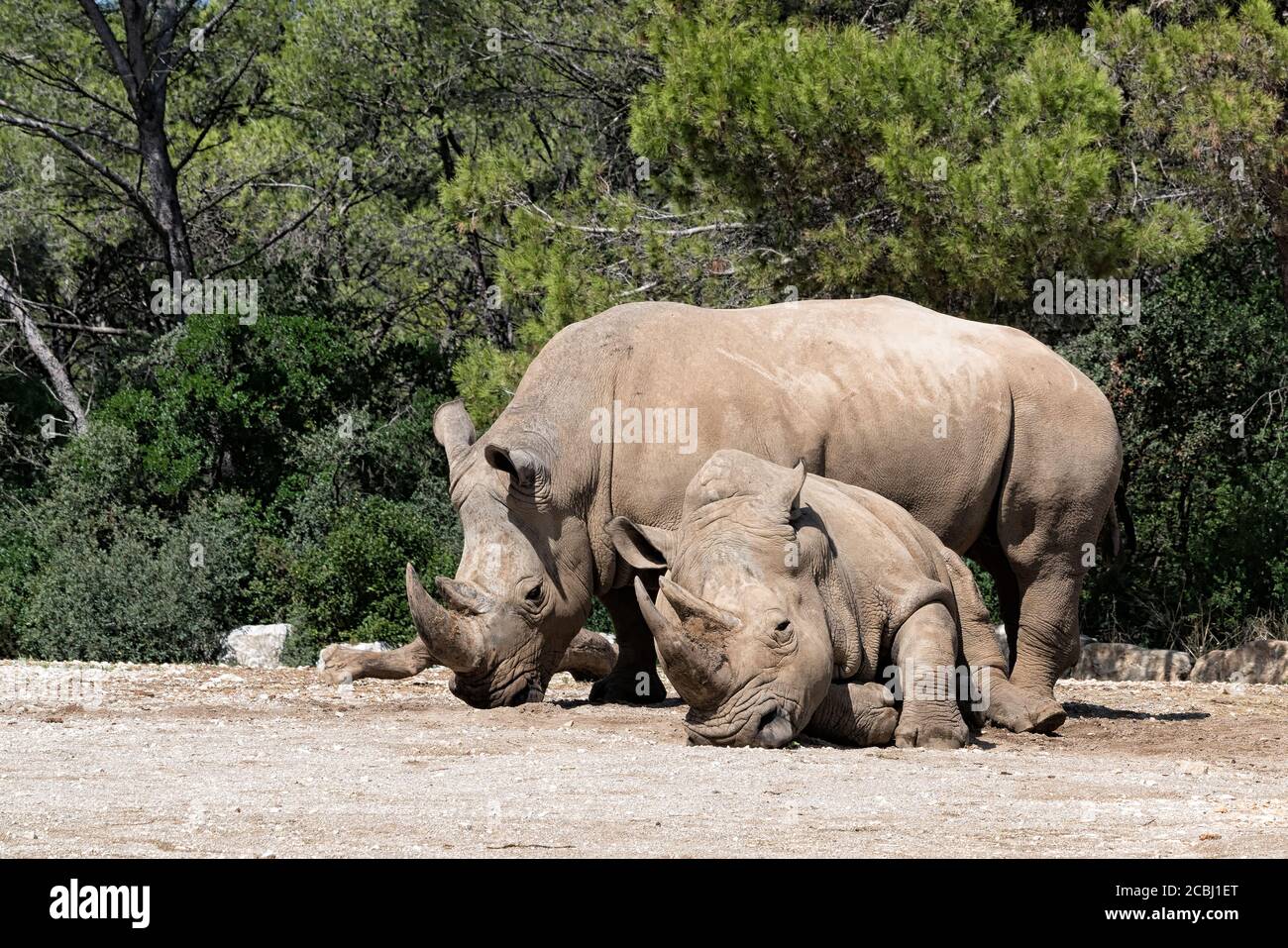 A Southern White Rhino stands behind it's napping mate in the bright sun. Stock Photohttps://www.alamy.com/image-license-details/?v=1https://www.alamy.com/a-southern-white-rhino-stands-behind-its-napping-mate-in-the-bright-sun-image368575280.html
A Southern White Rhino stands behind it's napping mate in the bright sun. Stock Photohttps://www.alamy.com/image-license-details/?v=1https://www.alamy.com/a-southern-white-rhino-stands-behind-its-napping-mate-in-the-bright-sun-image368575280.htmlRM2CBJ1ET–A Southern White Rhino stands behind it's napping mate in the bright sun.
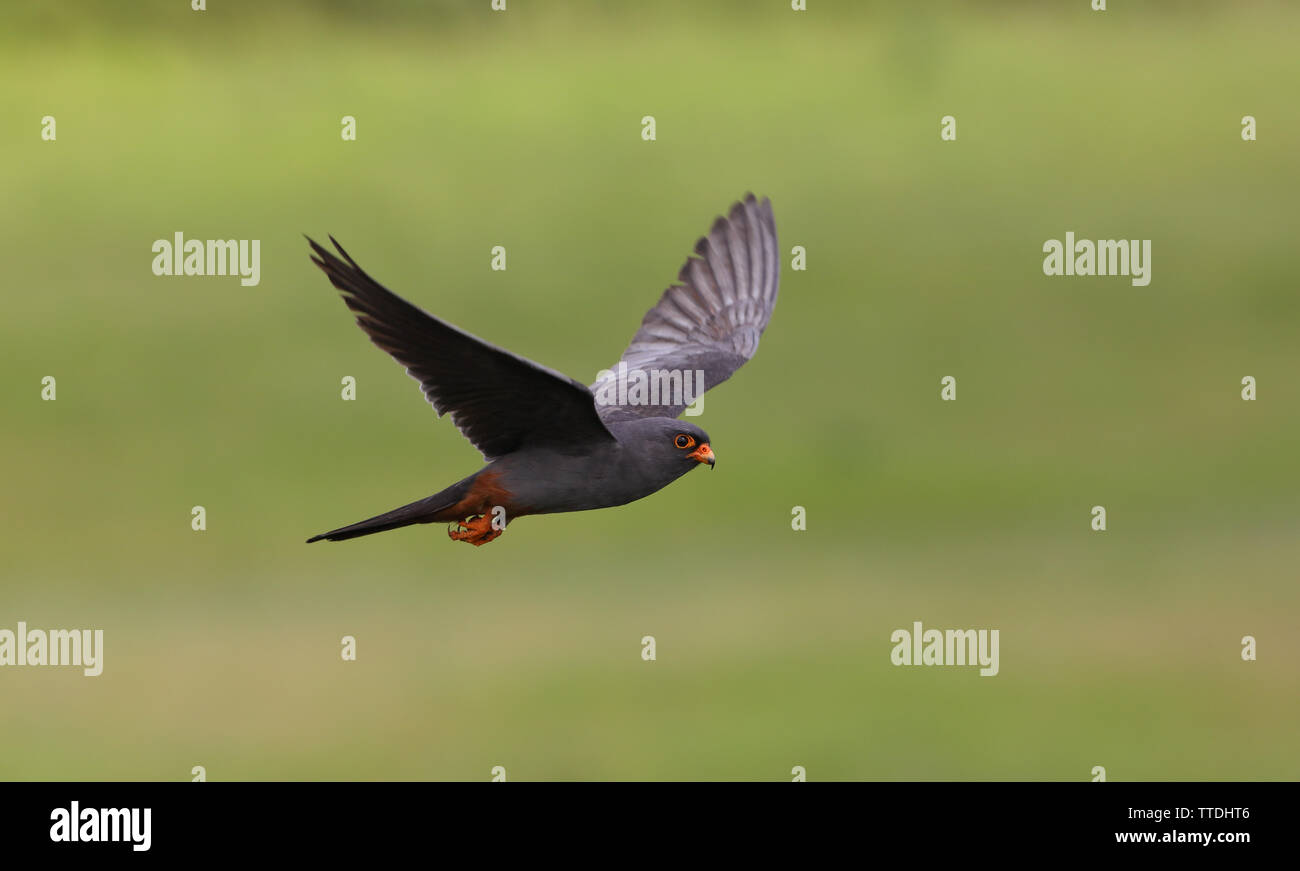 Male Red-footed falcon (Falco vespertinus) in flight. The species is listed as Near Threatened on the IUCN Red List. Photographed in Hortobagy, HU Stock Photohttps://www.alamy.com/image-license-details/?v=1https://www.alamy.com/male-red-footed-falcon-falco-vespertinus-in-flight-the-species-is-listed-as-near-threatened-on-the-iucn-red-list-photographed-in-hortobagy-hu-image255996278.html
Male Red-footed falcon (Falco vespertinus) in flight. The species is listed as Near Threatened on the IUCN Red List. Photographed in Hortobagy, HU Stock Photohttps://www.alamy.com/image-license-details/?v=1https://www.alamy.com/male-red-footed-falcon-falco-vespertinus-in-flight-the-species-is-listed-as-near-threatened-on-the-iucn-red-list-photographed-in-hortobagy-hu-image255996278.htmlRMTTDHT6–Male Red-footed falcon (Falco vespertinus) in flight. The species is listed as Near Threatened on the IUCN Red List. Photographed in Hortobagy, HU
 The markhor (Capra falconeri) is a large Capra species native to Central Asia, the Karakoram, and the Himalayas. It is listed on the IUCN Red List as Near Threatened. The markhor is the national animal of Pakistan and is regarded as the king of wild goats. This animal is diurnal and is mainly active in the early morning and late afternoon. A markhor mother and her fawns (baby) are at the conservation and breeding centre Padmaja Naidu Himalayan Zoological Park (PNHZP) in Darjeeling, West Bengal, India. Stock Photohttps://www.alamy.com/image-license-details/?v=1https://www.alamy.com/the-markhor-capra-falconeri-is-a-large-capra-species-native-to-central-asia-the-karakoram-and-the-himalayas-it-is-listed-on-the-iucn-red-list-as-near-threatened-the-markhor-is-the-national-animal-of-pakistan-and-is-regarded-as-the-king-of-wild-goats-this-animal-is-diurnal-and-is-mainly-active-in-the-early-morning-and-late-afternoon-a-markhor-mother-and-her-fawns-baby-are-at-the-conservation-and-breeding-centre-padmaja-naidu-himalayan-zoological-park-pnhzp-in-darjeeling-west-bengal-india-image474861290.html
The markhor (Capra falconeri) is a large Capra species native to Central Asia, the Karakoram, and the Himalayas. It is listed on the IUCN Red List as Near Threatened. The markhor is the national animal of Pakistan and is regarded as the king of wild goats. This animal is diurnal and is mainly active in the early morning and late afternoon. A markhor mother and her fawns (baby) are at the conservation and breeding centre Padmaja Naidu Himalayan Zoological Park (PNHZP) in Darjeeling, West Bengal, India. Stock Photohttps://www.alamy.com/image-license-details/?v=1https://www.alamy.com/the-markhor-capra-falconeri-is-a-large-capra-species-native-to-central-asia-the-karakoram-and-the-himalayas-it-is-listed-on-the-iucn-red-list-as-near-threatened-the-markhor-is-the-national-animal-of-pakistan-and-is-regarded-as-the-king-of-wild-goats-this-animal-is-diurnal-and-is-mainly-active-in-the-early-morning-and-late-afternoon-a-markhor-mother-and-her-fawns-baby-are-at-the-conservation-and-breeding-centre-padmaja-naidu-himalayan-zoological-park-pnhzp-in-darjeeling-west-bengal-india-image474861290.htmlRM2JGFPBP–The markhor (Capra falconeri) is a large Capra species native to Central Asia, the Karakoram, and the Himalayas. It is listed on the IUCN Red List as Near Threatened. The markhor is the national animal of Pakistan and is regarded as the king of wild goats. This animal is diurnal and is mainly active in the early morning and late afternoon. A markhor mother and her fawns (baby) are at the conservation and breeding centre Padmaja Naidu Himalayan Zoological Park (PNHZP) in Darjeeling, West Bengal, India.
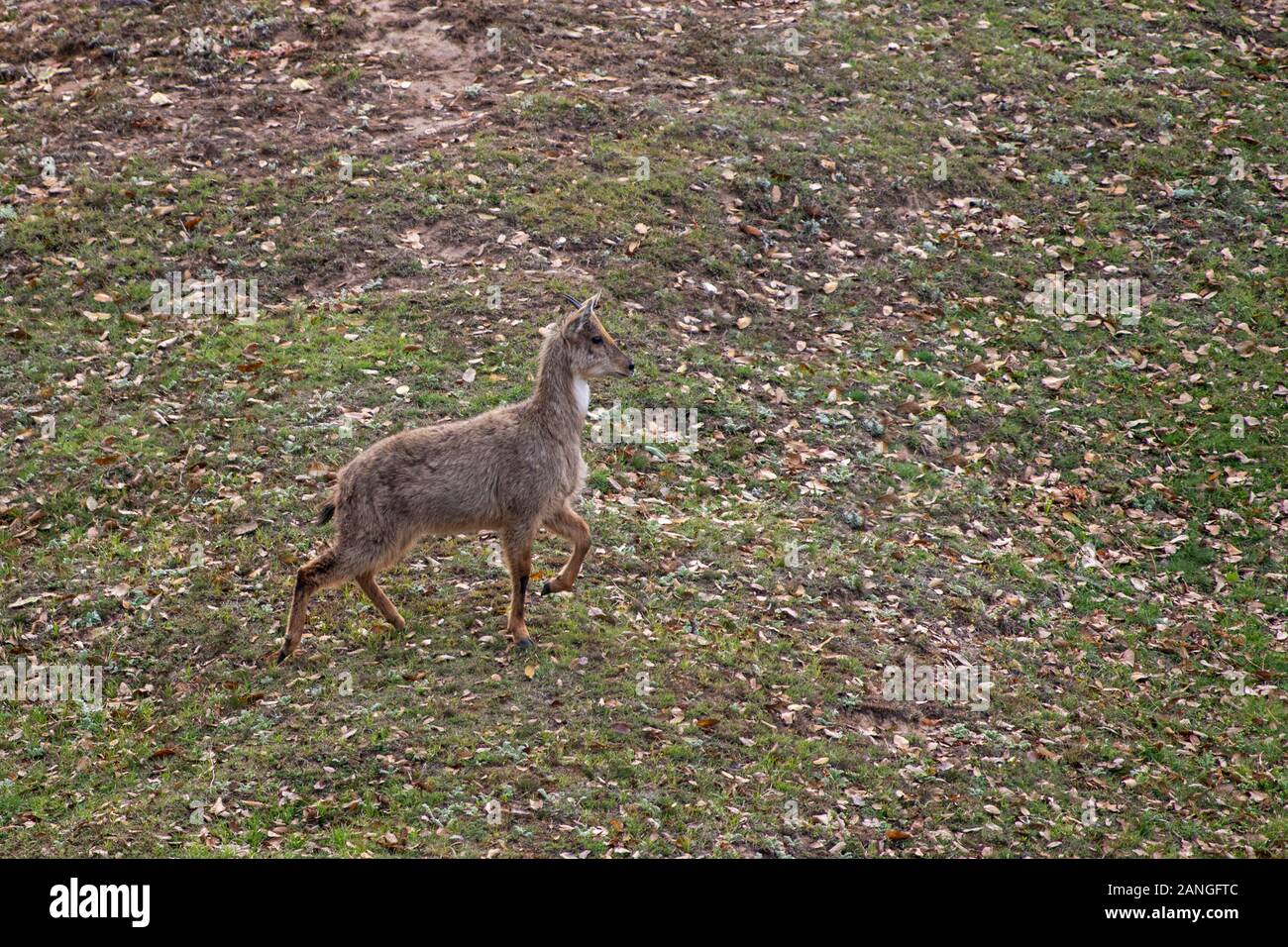 The Himalayan goral, Naemorhedus goral. Listed as Near Threatened on the IUCN Red List , Chopta, Garhwal, Uttarakhand, india Stock Photohttps://www.alamy.com/image-license-details/?v=1https://www.alamy.com/the-himalayan-goral-naemorhedus-goral-listed-as-near-threatened-on-the-iucn-red-list-chopta-garhwal-uttarakhand-india-image340268444.html
The Himalayan goral, Naemorhedus goral. Listed as Near Threatened on the IUCN Red List , Chopta, Garhwal, Uttarakhand, india Stock Photohttps://www.alamy.com/image-license-details/?v=1https://www.alamy.com/the-himalayan-goral-naemorhedus-goral-listed-as-near-threatened-on-the-iucn-red-list-chopta-garhwal-uttarakhand-india-image340268444.htmlRF2ANGFTC–The Himalayan goral, Naemorhedus goral. Listed as Near Threatened on the IUCN Red List , Chopta, Garhwal, Uttarakhand, india
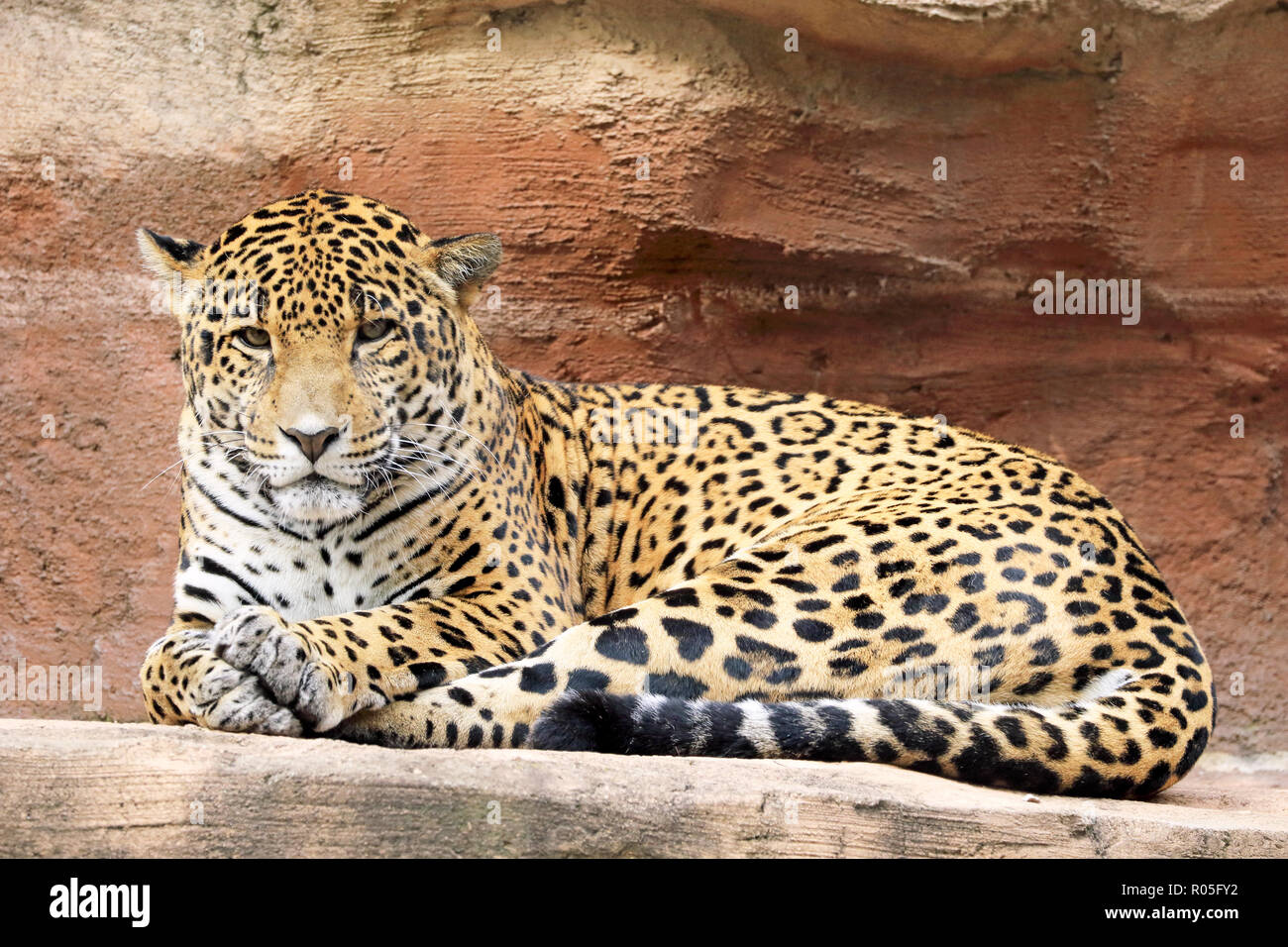 Jaguar, Panthera onca Stock Photohttps://www.alamy.com/image-license-details/?v=1https://www.alamy.com/jaguar-panthera-onca-image223857062.html
Jaguar, Panthera onca Stock Photohttps://www.alamy.com/image-license-details/?v=1https://www.alamy.com/jaguar-panthera-onca-image223857062.htmlRMR05FY2–Jaguar, Panthera onca
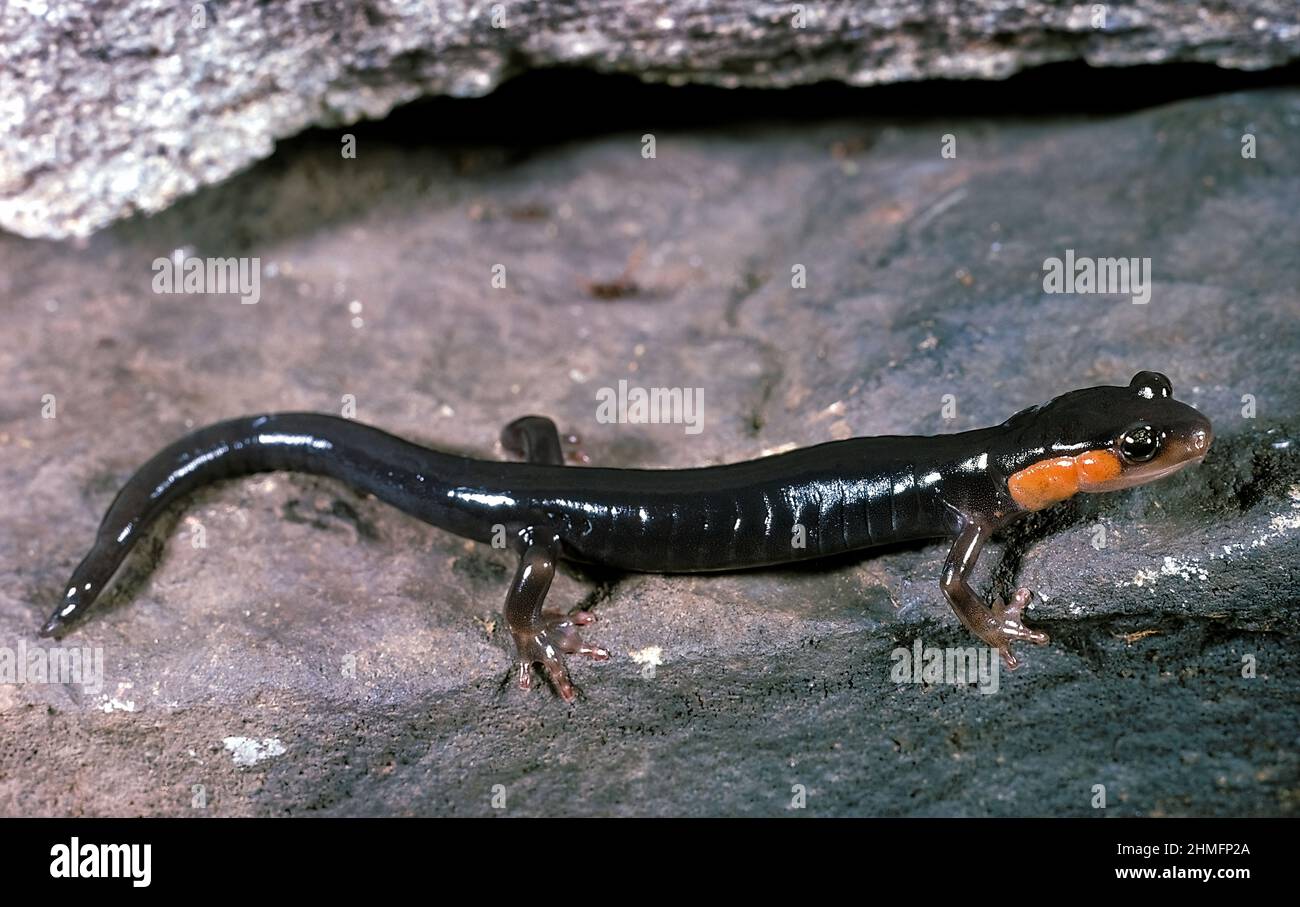 Red-Cheeked Salamander (Plethodon jordani), Appalachian Mountains, USA Stock Photohttps://www.alamy.com/image-license-details/?v=1https://www.alamy.com/red-cheeked-salamander-plethodon-jordani-appalachian-mountains-usa-image460109282.html
Red-Cheeked Salamander (Plethodon jordani), Appalachian Mountains, USA Stock Photohttps://www.alamy.com/image-license-details/?v=1https://www.alamy.com/red-cheeked-salamander-plethodon-jordani-appalachian-mountains-usa-image460109282.htmlRM2HMFP2A–Red-Cheeked Salamander (Plethodon jordani), Appalachian Mountains, USA
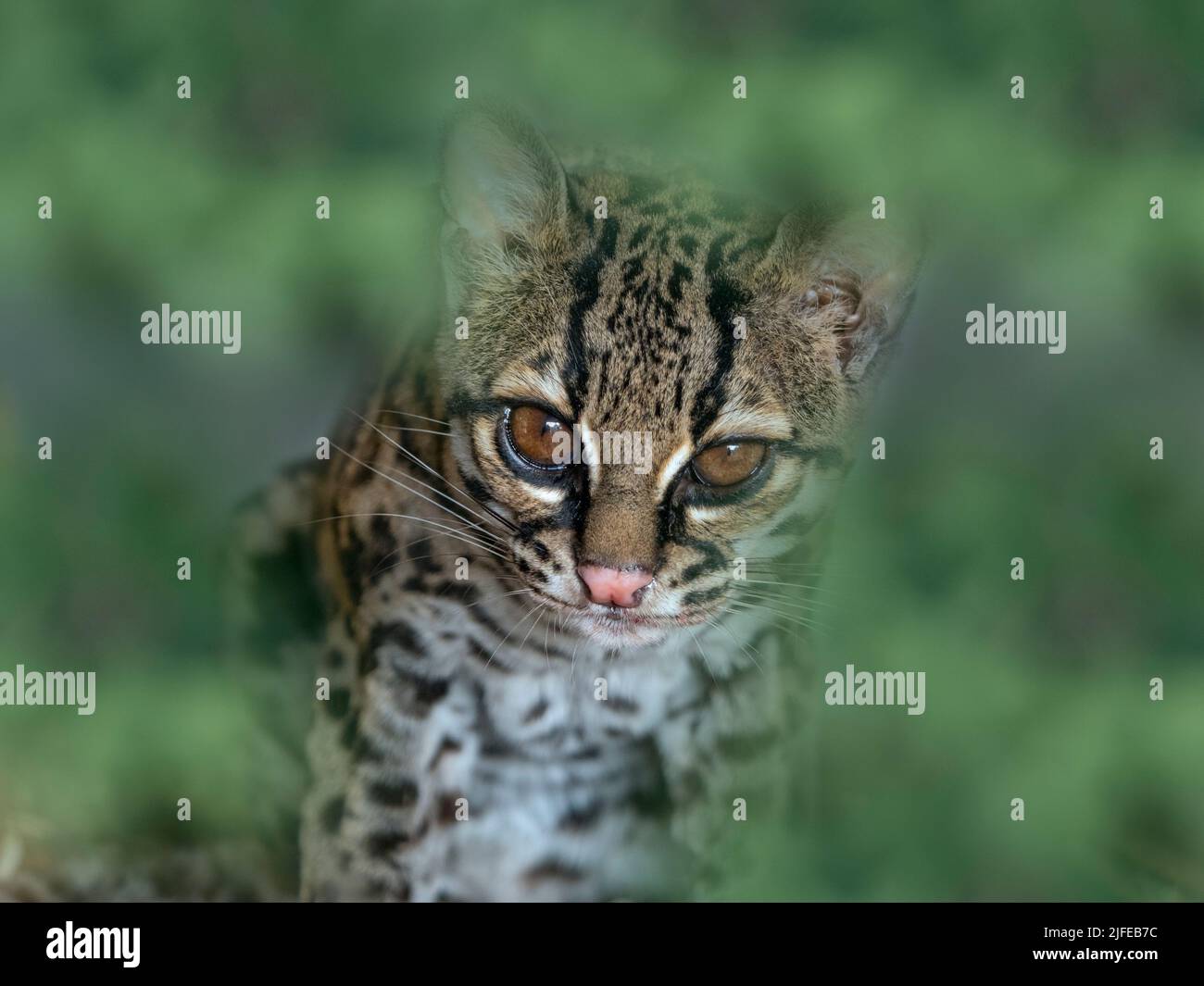 Margay Leopardus wiedii Stock Photohttps://www.alamy.com/image-license-details/?v=1https://www.alamy.com/margay-leopardus-wiedii-image474215936.html
Margay Leopardus wiedii Stock Photohttps://www.alamy.com/image-license-details/?v=1https://www.alamy.com/margay-leopardus-wiedii-image474215936.htmlRM2JFEB7C–Margay Leopardus wiedii
 Buffalo (Syncerus caffer) herd by waterhole, Ant's Hill Reserve, near Vaalwater, Limpopo province, South Africa Stock Photohttps://www.alamy.com/image-license-details/?v=1https://www.alamy.com/buffalo-syncerus-caffer-herd-by-waterhole-ants-hill-reserve-near-vaalwater-limpopo-province-south-africa-image508119915.html
Buffalo (Syncerus caffer) herd by waterhole, Ant's Hill Reserve, near Vaalwater, Limpopo province, South Africa Stock Photohttps://www.alamy.com/image-license-details/?v=1https://www.alamy.com/buffalo-syncerus-caffer-herd-by-waterhole-ants-hill-reserve-near-vaalwater-limpopo-province-south-africa-image508119915.htmlRM2MEJT3R–Buffalo (Syncerus caffer) herd by waterhole, Ant's Hill Reserve, near Vaalwater, Limpopo province, South Africa
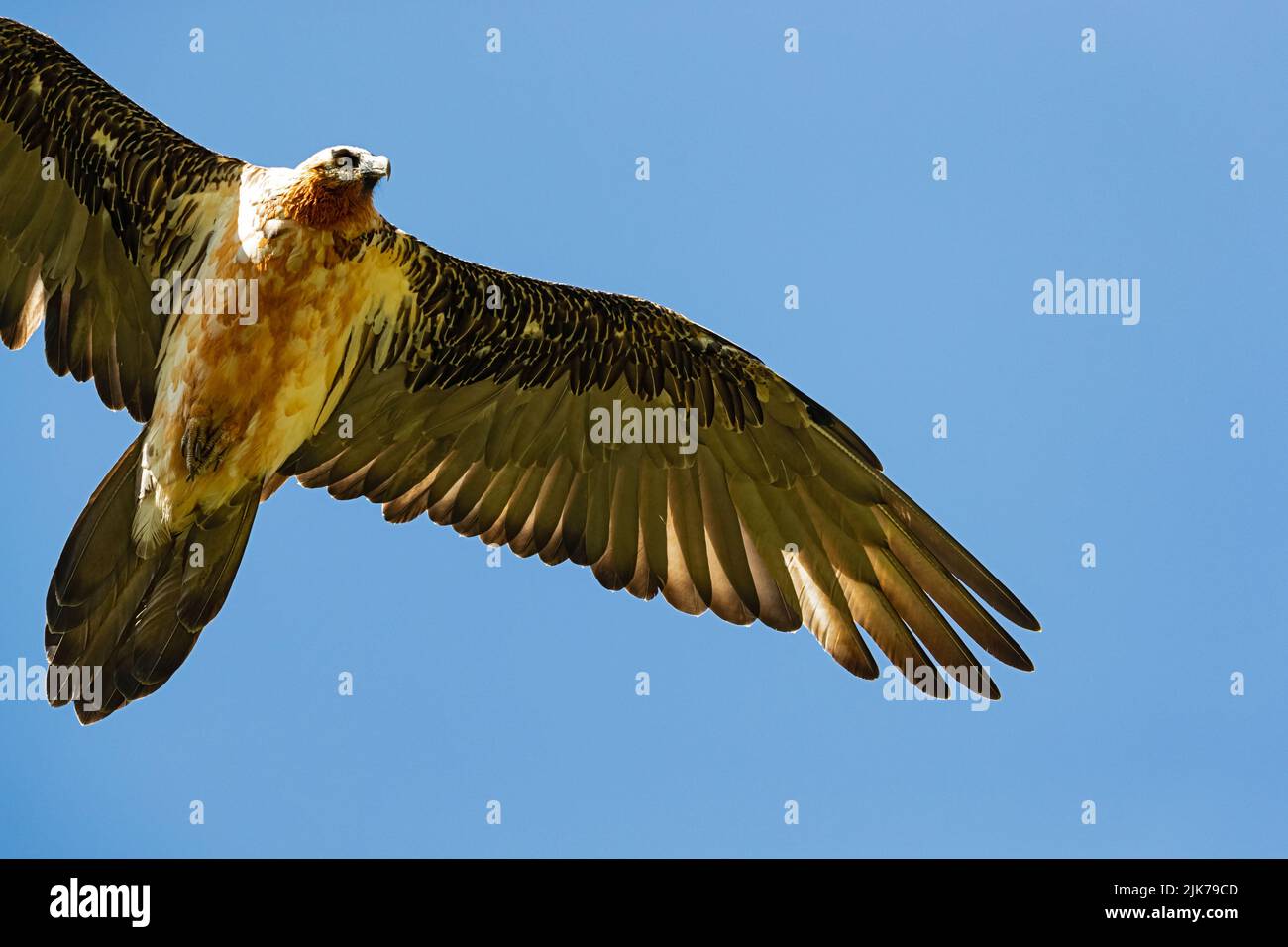 An adult Bearded Vultures or Lammergeier (Gypaetus barbatus) circeling at the blue sky above the photographer Stock Photohttps://www.alamy.com/image-license-details/?v=1https://www.alamy.com/an-adult-bearded-vultures-or-lammergeier-gypaetus-barbatus-circeling-at-the-blue-sky-above-the-photographer-image476519469.html
An adult Bearded Vultures or Lammergeier (Gypaetus barbatus) circeling at the blue sky above the photographer Stock Photohttps://www.alamy.com/image-license-details/?v=1https://www.alamy.com/an-adult-bearded-vultures-or-lammergeier-gypaetus-barbatus-circeling-at-the-blue-sky-above-the-photographer-image476519469.htmlRM2JK79CD–An adult Bearded Vultures or Lammergeier (Gypaetus barbatus) circeling at the blue sky above the photographer
 Red Kite Milvus milvus In Flight Against A Blue Sky Stock Photohttps://www.alamy.com/image-license-details/?v=1https://www.alamy.com/stock-photo-red-kite-milvus-milvus-in-flight-against-a-blue-sky-29036144.html
Red Kite Milvus milvus In Flight Against A Blue Sky Stock Photohttps://www.alamy.com/image-license-details/?v=1https://www.alamy.com/stock-photo-red-kite-milvus-milvus-in-flight-against-a-blue-sky-29036144.htmlRMBK6KW4–Red Kite Milvus milvus In Flight Against A Blue Sky
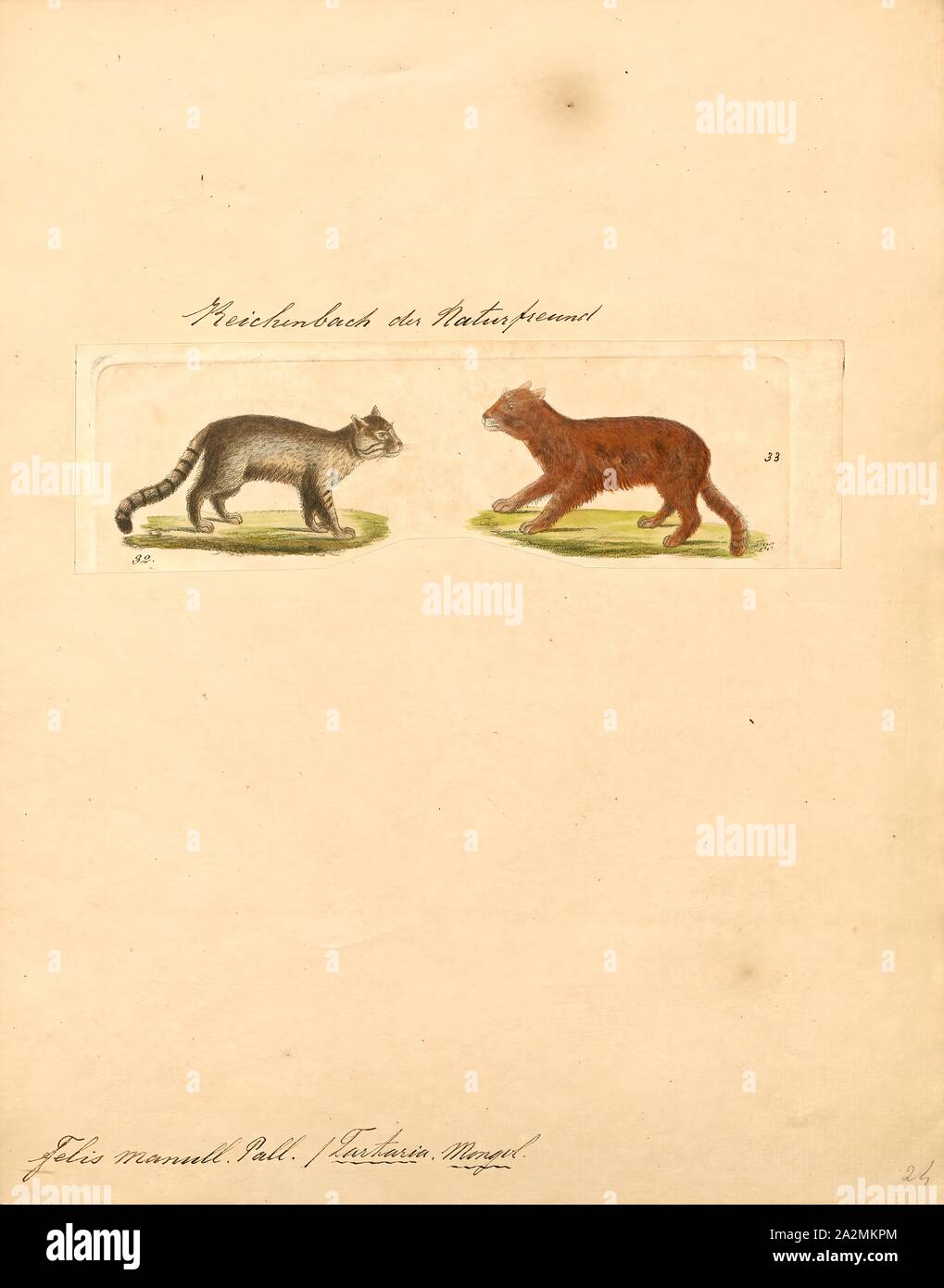 Felis manul, Print, The Pallas's cat (Otocolobus manul), also called manul, is a small wild cat with a broad but fragmented distribution in the grasslands and montane steppes of Central Asia. It is negatively affected by habitat degradation, prey base decline and hunting, and has therefore been classified as Near Threatened on the IUCN Red List since 2002., 1834 Stock Photohttps://www.alamy.com/image-license-details/?v=1https://www.alamy.com/felis-manul-print-the-pallass-cat-otocolobus-manul-also-called-manul-is-a-small-wild-cat-with-a-broad-but-fragmented-distribution-in-the-grasslands-and-montane-steppes-of-central-asia-it-is-negatively-affected-by-habitat-degradation-prey-base-decline-and-hunting-and-has-therefore-been-classified-as-near-threatened-on-the-iucn-red-list-since-2002-1834-image328680876.html
Felis manul, Print, The Pallas's cat (Otocolobus manul), also called manul, is a small wild cat with a broad but fragmented distribution in the grasslands and montane steppes of Central Asia. It is negatively affected by habitat degradation, prey base decline and hunting, and has therefore been classified as Near Threatened on the IUCN Red List since 2002., 1834 Stock Photohttps://www.alamy.com/image-license-details/?v=1https://www.alamy.com/felis-manul-print-the-pallass-cat-otocolobus-manul-also-called-manul-is-a-small-wild-cat-with-a-broad-but-fragmented-distribution-in-the-grasslands-and-montane-steppes-of-central-asia-it-is-negatively-affected-by-habitat-degradation-prey-base-decline-and-hunting-and-has-therefore-been-classified-as-near-threatened-on-the-iucn-red-list-since-2002-1834-image328680876.htmlRM2A2MKPM–Felis manul, Print, The Pallas's cat (Otocolobus manul), also called manul, is a small wild cat with a broad but fragmented distribution in the grasslands and montane steppes of Central Asia. It is negatively affected by habitat degradation, prey base decline and hunting, and has therefore been classified as Near Threatened on the IUCN Red List since 2002., 1834
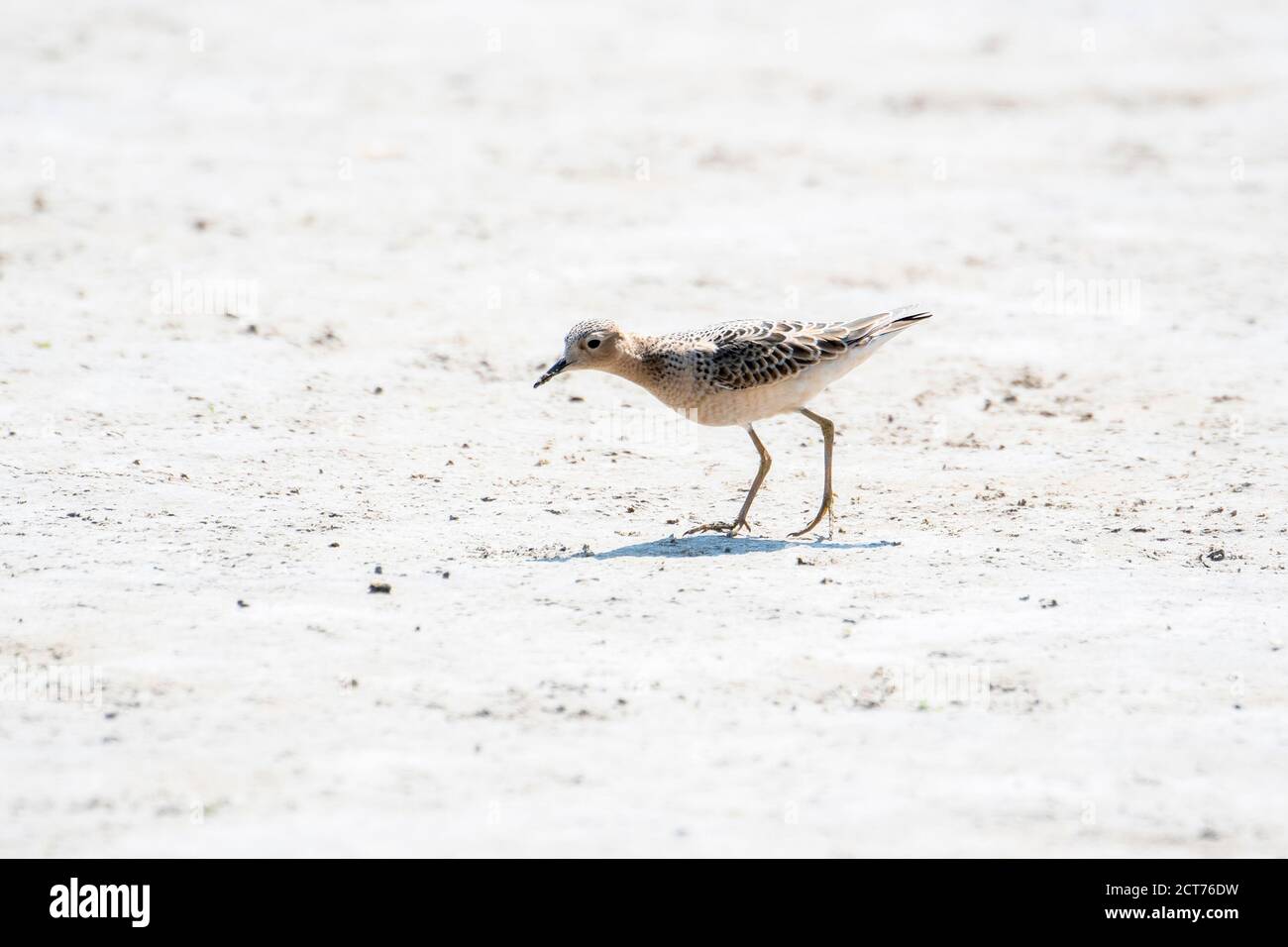 An IUCN Red List Near-Threatened Buff-breasted Sandpiper Shorebird Walks on a Dried Muddy Lake Bed During Migration in Colorado Stock Photohttps://www.alamy.com/image-license-details/?v=1https://www.alamy.com/an-iucn-red-list-near-threatened-buff-breasted-sandpiper-shorebird-walks-on-a-dried-muddy-lake-bed-during-migration-in-colorado-image376328229.html
An IUCN Red List Near-Threatened Buff-breasted Sandpiper Shorebird Walks on a Dried Muddy Lake Bed During Migration in Colorado Stock Photohttps://www.alamy.com/image-license-details/?v=1https://www.alamy.com/an-iucn-red-list-near-threatened-buff-breasted-sandpiper-shorebird-walks-on-a-dried-muddy-lake-bed-during-migration-in-colorado-image376328229.htmlRF2CT76DW–An IUCN Red List Near-Threatened Buff-breasted Sandpiper Shorebird Walks on a Dried Muddy Lake Bed During Migration in Colorado
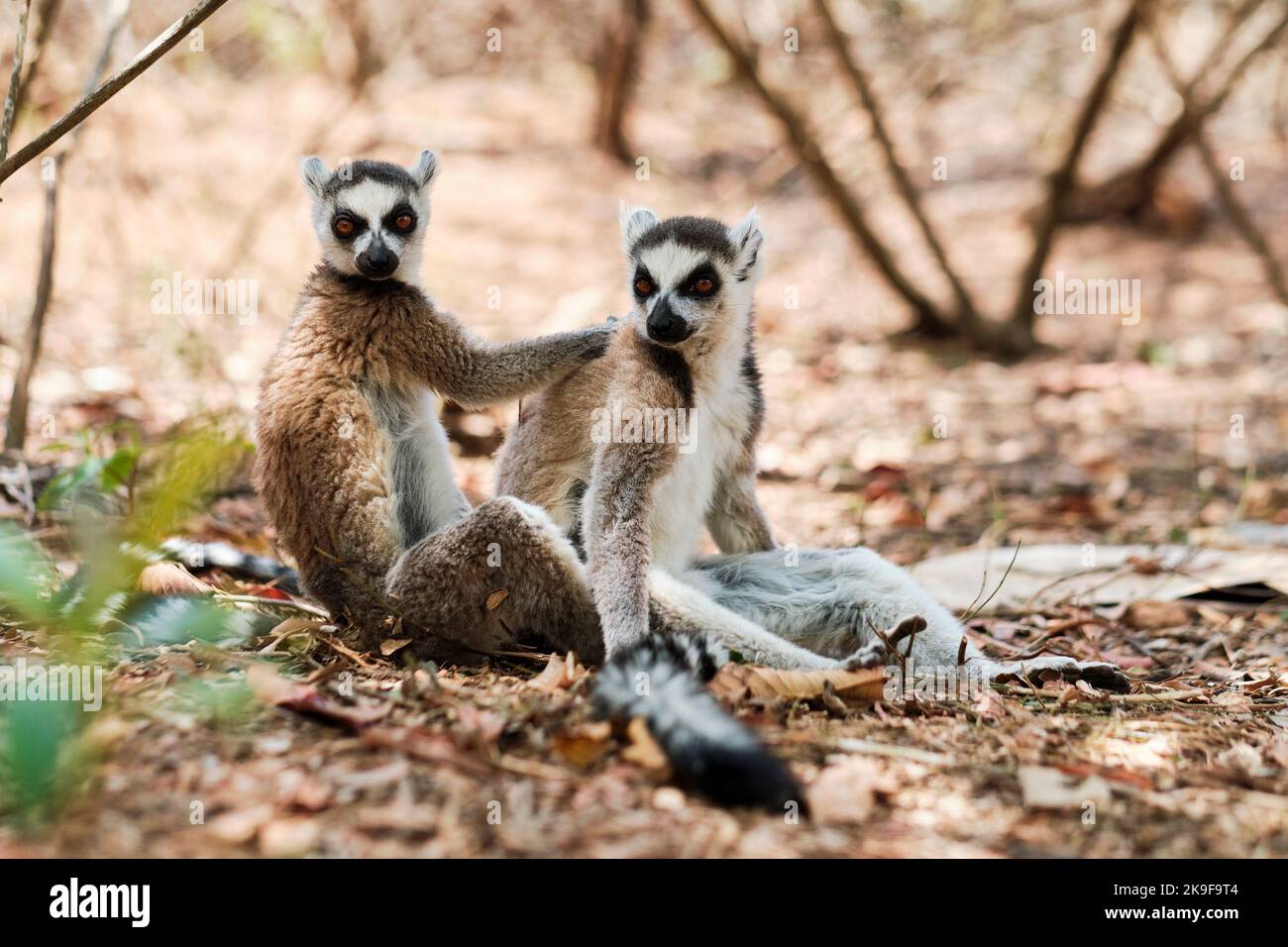 Nairobi, Madagascar. 21st Oct, 2022. Lemurs are seen near Antananarivo, Madagascar, Oct. 21, 2022. Many species of lemurs are listed on the International Union for Conservation of Nature (IUCN) Red List of Threatened Species and are in danger of extinction due to habitat destruction and illegal hunting in recent years. Credit: Iako Randrianarivelo/Xinhua/Alamy Live News Stock Photohttps://www.alamy.com/image-license-details/?v=1https://www.alamy.com/nairobi-madagascar-21st-oct-2022-lemurs-are-seen-near-antananarivo-madagascar-oct-21-2022-many-species-of-lemurs-are-listed-on-the-international-union-for-conservation-of-nature-iucn-red-list-of-threatened-species-and-are-in-danger-of-extinction-due-to-habitat-destruction-and-illegal-hunting-in-recent-years-credit-iako-randrianariveloxinhuaalamy-live-news-image487759220.html
Nairobi, Madagascar. 21st Oct, 2022. Lemurs are seen near Antananarivo, Madagascar, Oct. 21, 2022. Many species of lemurs are listed on the International Union for Conservation of Nature (IUCN) Red List of Threatened Species and are in danger of extinction due to habitat destruction and illegal hunting in recent years. Credit: Iako Randrianarivelo/Xinhua/Alamy Live News Stock Photohttps://www.alamy.com/image-license-details/?v=1https://www.alamy.com/nairobi-madagascar-21st-oct-2022-lemurs-are-seen-near-antananarivo-madagascar-oct-21-2022-many-species-of-lemurs-are-listed-on-the-international-union-for-conservation-of-nature-iucn-red-list-of-threatened-species-and-are-in-danger-of-extinction-due-to-habitat-destruction-and-illegal-hunting-in-recent-years-credit-iako-randrianariveloxinhuaalamy-live-news-image487759220.htmlRM2K9F9T4–Nairobi, Madagascar. 21st Oct, 2022. Lemurs are seen near Antananarivo, Madagascar, Oct. 21, 2022. Many species of lemurs are listed on the International Union for Conservation of Nature (IUCN) Red List of Threatened Species and are in danger of extinction due to habitat destruction and illegal hunting in recent years. Credit: Iako Randrianarivelo/Xinhua/Alamy Live News
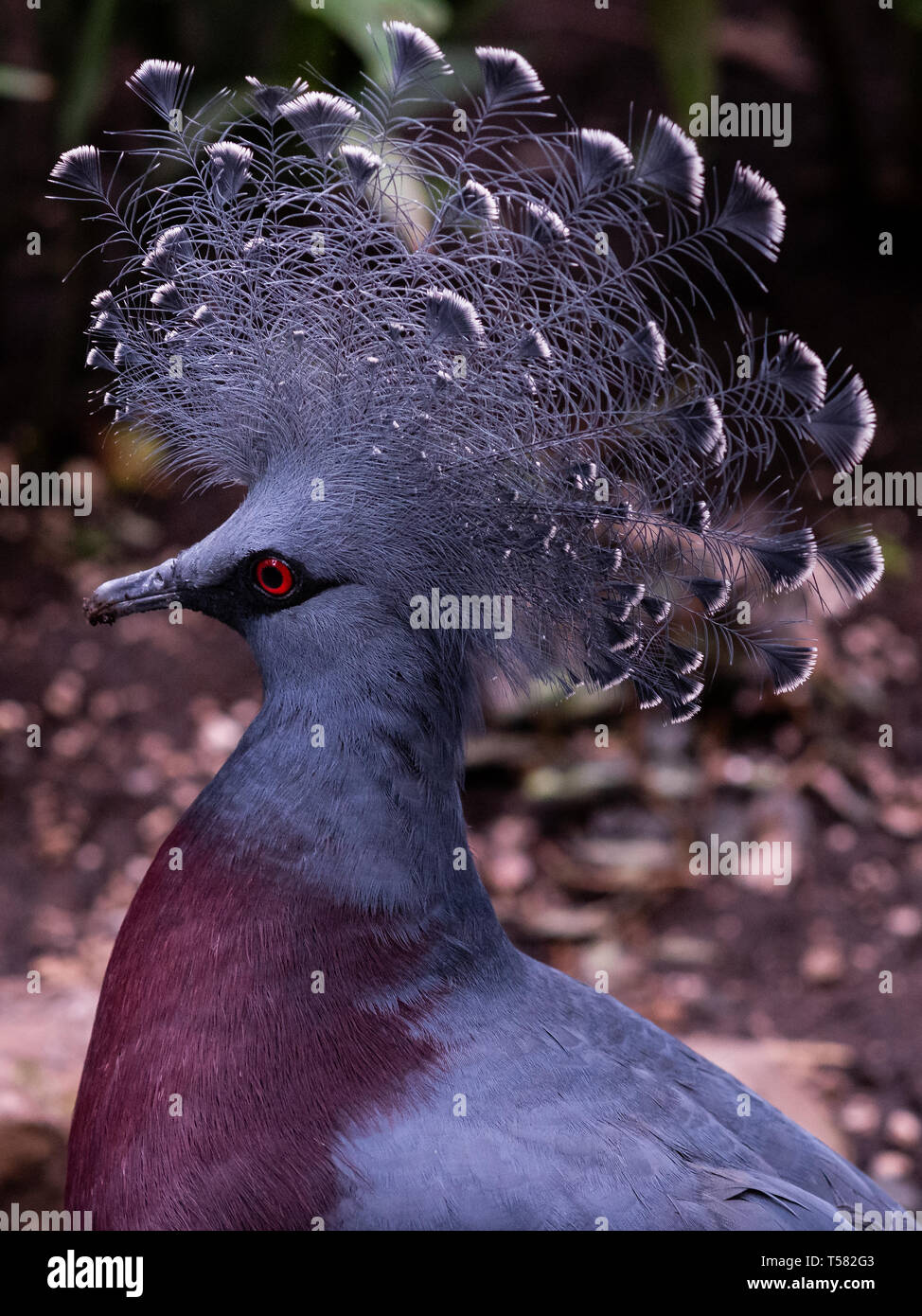 Victoria Crowned Pigeons at Islands, Chester Zoo prior to fire Stock Photohttps://www.alamy.com/image-license-details/?v=1https://www.alamy.com/victoria-crowned-pigeons-at-islands-chester-zoo-prior-to-fire-image244196067.html
Victoria Crowned Pigeons at Islands, Chester Zoo prior to fire Stock Photohttps://www.alamy.com/image-license-details/?v=1https://www.alamy.com/victoria-crowned-pigeons-at-islands-chester-zoo-prior-to-fire-image244196067.htmlRFT582G3–Victoria Crowned Pigeons at Islands, Chester Zoo prior to fire
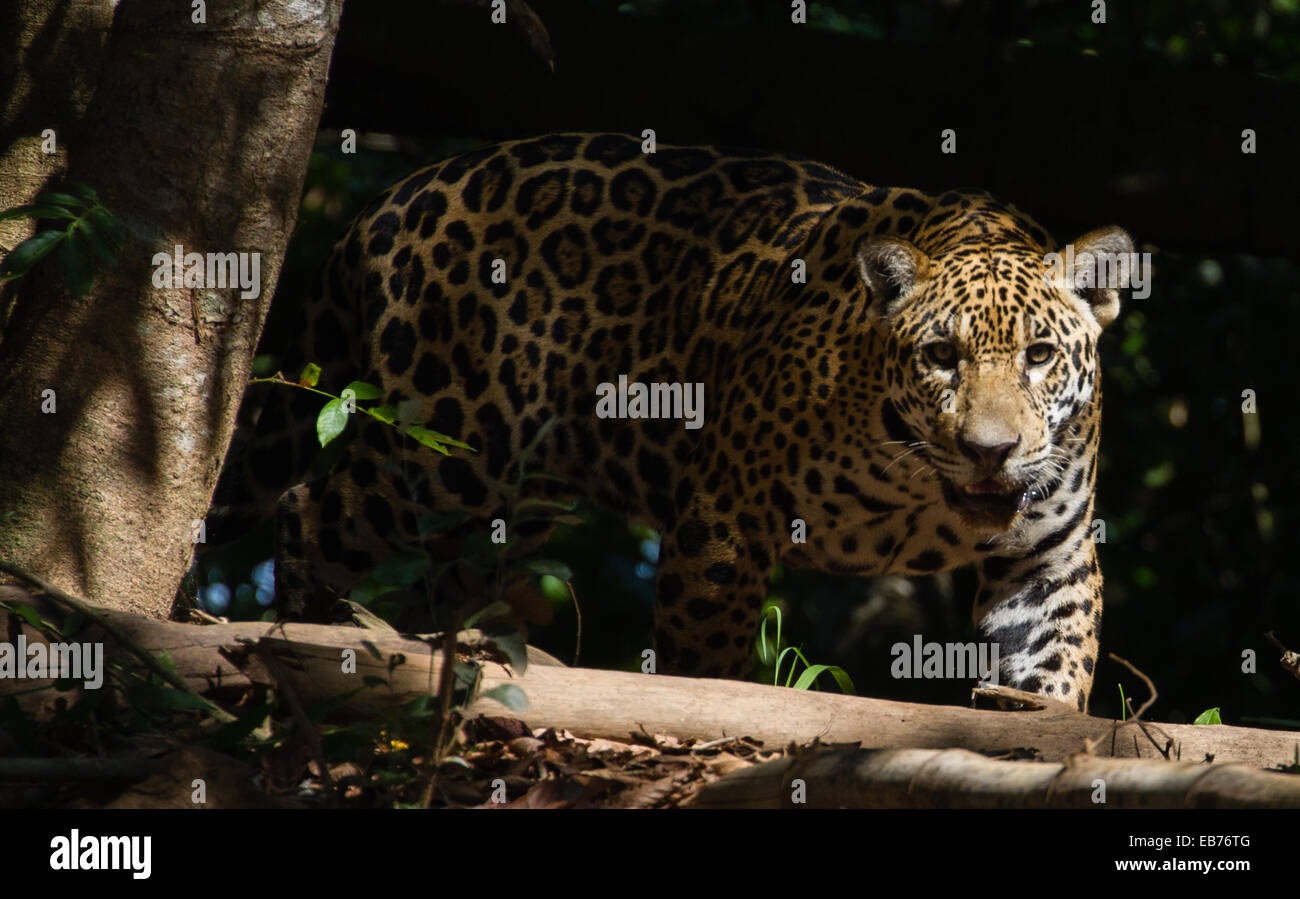 Jaguar (Panthera onca) in rainforest habitat of Pantanal, Mato Gross state, Brazil Stock Photohttps://www.alamy.com/image-license-details/?v=1https://www.alamy.com/stock-photo-jaguar-panthera-onca-in-rainforest-habitat-of-pantanal-mato-gross-75761744.html
Jaguar (Panthera onca) in rainforest habitat of Pantanal, Mato Gross state, Brazil Stock Photohttps://www.alamy.com/image-license-details/?v=1https://www.alamy.com/stock-photo-jaguar-panthera-onca-in-rainforest-habitat-of-pantanal-mato-gross-75761744.htmlRFEB76TG–Jaguar (Panthera onca) in rainforest habitat of Pantanal, Mato Gross state, Brazil
 Tusked Frog (Adelotus brevis). Adult female in studio (captive). Hopkins Creek. New South Wales. Australia. Stock Photohttps://www.alamy.com/image-license-details/?v=1https://www.alamy.com/stock-image-tusked-frog-adelotus-brevis-adult-female-in-studio-captive-hopkins-163801487.html
Tusked Frog (Adelotus brevis). Adult female in studio (captive). Hopkins Creek. New South Wales. Australia. Stock Photohttps://www.alamy.com/image-license-details/?v=1https://www.alamy.com/stock-image-tusked-frog-adelotus-brevis-adult-female-in-studio-captive-hopkins-163801487.htmlRFKEDPD3–Tusked Frog (Adelotus brevis). Adult female in studio (captive). Hopkins Creek. New South Wales. Australia.
 This is a species of hard coral (Platygyra lamellina: 100 cms.), which forms large round boulders - or flat plates as in this instance. The corallites are long and form maze-like sinuous lines, the appearance of which gives rise to its common name of brain coral. It has a widespread distribution in the Into-Pacific region, usually on the slopes of coral reefs and at depths not exceeding 20 metres.The species is becoming rarer, as a result of the general degradation of reefs due to climate change and ocean acidification. The IUCN Red List indicates that it is near threatened. Egyptian Red Sea. Stock Photohttps://www.alamy.com/image-license-details/?v=1https://www.alamy.com/this-is-a-species-of-hard-coral-platygyra-lamellina-100-cms-which-forms-large-round-boulders-or-flat-plates-as-in-this-instance-the-corallites-are-long-and-form-maze-like-sinuous-lines-the-appearance-of-which-gives-rise-to-its-common-name-of-brain-coral-it-has-a-widespread-distribution-in-the-into-pacific-region-usually-on-the-slopes-of-coral-reefs-and-at-depths-not-exceeding-20-metresthe-species-is-becoming-rarer-as-a-result-of-the-general-degradation-of-reefs-due-to-climate-change-and-ocean-acidification-the-iucn-red-list-indicates-that-it-is-near-threatened-egyptian-red-sea-image217932344.html
This is a species of hard coral (Platygyra lamellina: 100 cms.), which forms large round boulders - or flat plates as in this instance. The corallites are long and form maze-like sinuous lines, the appearance of which gives rise to its common name of brain coral. It has a widespread distribution in the Into-Pacific region, usually on the slopes of coral reefs and at depths not exceeding 20 metres.The species is becoming rarer, as a result of the general degradation of reefs due to climate change and ocean acidification. The IUCN Red List indicates that it is near threatened. Egyptian Red Sea. Stock Photohttps://www.alamy.com/image-license-details/?v=1https://www.alamy.com/this-is-a-species-of-hard-coral-platygyra-lamellina-100-cms-which-forms-large-round-boulders-or-flat-plates-as-in-this-instance-the-corallites-are-long-and-form-maze-like-sinuous-lines-the-appearance-of-which-gives-rise-to-its-common-name-of-brain-coral-it-has-a-widespread-distribution-in-the-into-pacific-region-usually-on-the-slopes-of-coral-reefs-and-at-depths-not-exceeding-20-metresthe-species-is-becoming-rarer-as-a-result-of-the-general-degradation-of-reefs-due-to-climate-change-and-ocean-acidification-the-iucn-red-list-indicates-that-it-is-near-threatened-egyptian-red-sea-image217932344.htmlRFPJFJX0–This is a species of hard coral (Platygyra lamellina: 100 cms.), which forms large round boulders - or flat plates as in this instance. The corallites are long and form maze-like sinuous lines, the appearance of which gives rise to its common name of brain coral. It has a widespread distribution in the Into-Pacific region, usually on the slopes of coral reefs and at depths not exceeding 20 metres.The species is becoming rarer, as a result of the general degradation of reefs due to climate change and ocean acidification. The IUCN Red List indicates that it is near threatened. Egyptian Red Sea.
 Chestnut-banded Plover female with chick, Kliphoek Salt Pan, Velddrif, West Coast, South Africa. Near Threatened Stock Photohttps://www.alamy.com/image-license-details/?v=1https://www.alamy.com/chestnut-banded-plover-female-with-chick-kliphoek-salt-pan-velddrif-west-coast-south-africa-near-threatened-image608245509.html
Chestnut-banded Plover female with chick, Kliphoek Salt Pan, Velddrif, West Coast, South Africa. Near Threatened Stock Photohttps://www.alamy.com/image-license-details/?v=1https://www.alamy.com/chestnut-banded-plover-female-with-chick-kliphoek-salt-pan-velddrif-west-coast-south-africa-near-threatened-image608245509.htmlRM2X9FY9W–Chestnut-banded Plover female with chick, Kliphoek Salt Pan, Velddrif, West Coast, South Africa. Near Threatened
 Up-close portrait of large American Bison - Bison bison - laying on the grass making eye contact. Stock Photohttps://www.alamy.com/image-license-details/?v=1https://www.alamy.com/up-close-portrait-of-large-american-bison-bison-bison-laying-on-the-grass-making-eye-contact-image561939094.html
Up-close portrait of large American Bison - Bison bison - laying on the grass making eye contact. Stock Photohttps://www.alamy.com/image-license-details/?v=1https://www.alamy.com/up-close-portrait-of-large-american-bison-bison-bison-laying-on-the-grass-making-eye-contact-image561939094.htmlRM2RJ6F1A–Up-close portrait of large American Bison - Bison bison - laying on the grass making eye contact.
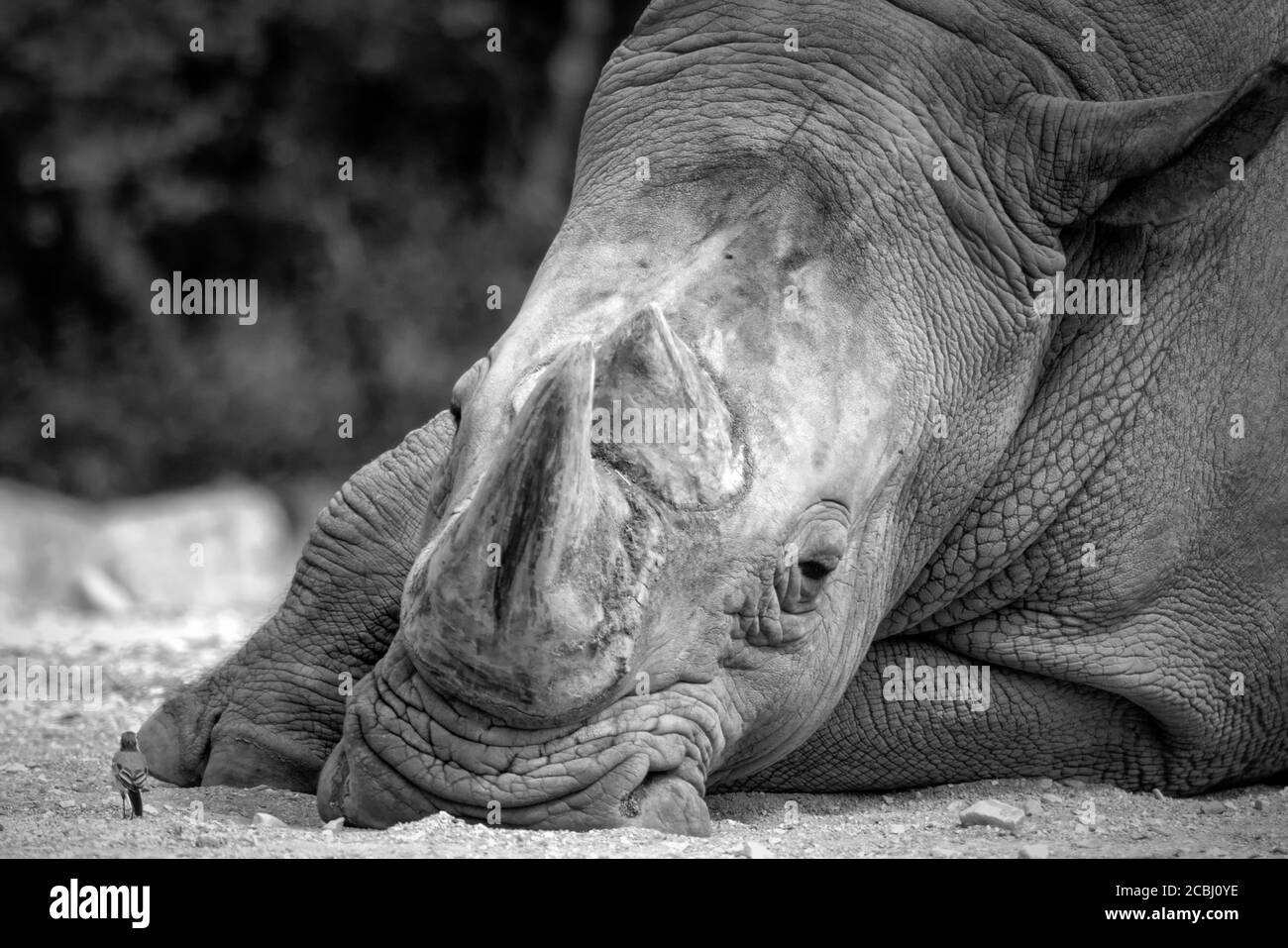 The white wagtale seems very brave to come so close to this giant white rhinocerus. The rhino was totally relaxed and ignored the bird. Stock Photohttps://www.alamy.com/image-license-details/?v=1https://www.alamy.com/the-white-wagtale-seems-very-brave-to-come-so-close-to-this-giant-white-rhinocerus-the-rhino-was-totally-relaxed-and-ignored-the-bird-image368574850.html
The white wagtale seems very brave to come so close to this giant white rhinocerus. The rhino was totally relaxed and ignored the bird. Stock Photohttps://www.alamy.com/image-license-details/?v=1https://www.alamy.com/the-white-wagtale-seems-very-brave-to-come-so-close-to-this-giant-white-rhinocerus-the-rhino-was-totally-relaxed-and-ignored-the-bird-image368574850.htmlRM2CBJ0YE–The white wagtale seems very brave to come so close to this giant white rhinocerus. The rhino was totally relaxed and ignored the bird.
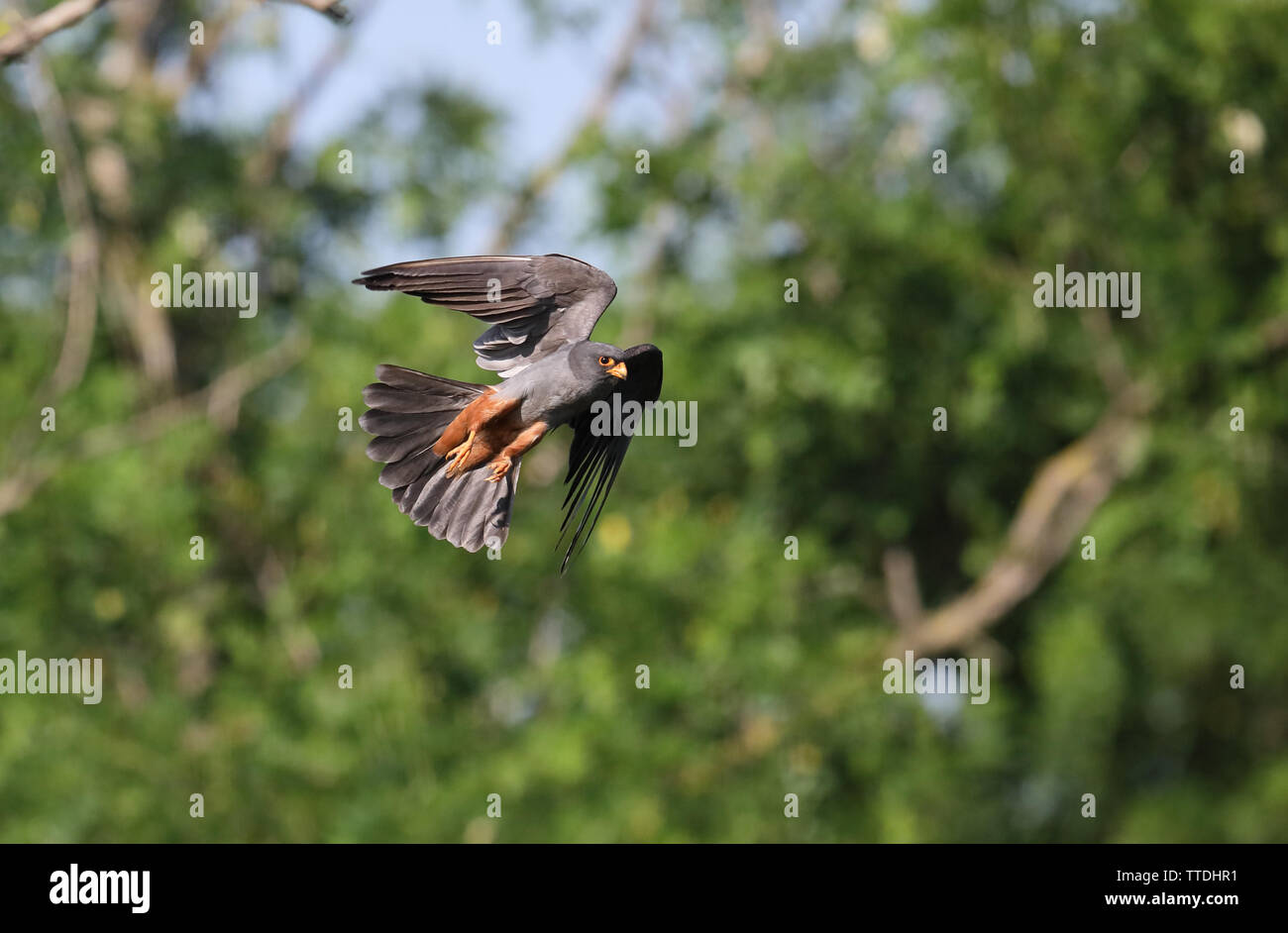 Male Red-footed falcon (Falco vespertinus) in flight. The species is listed as Near Threatened on the IUCN Red List. Photographed in Hortobagy, HU Stock Photohttps://www.alamy.com/image-license-details/?v=1https://www.alamy.com/male-red-footed-falcon-falco-vespertinus-in-flight-the-species-is-listed-as-near-threatened-on-the-iucn-red-list-photographed-in-hortobagy-hu-image255996245.html
Male Red-footed falcon (Falco vespertinus) in flight. The species is listed as Near Threatened on the IUCN Red List. Photographed in Hortobagy, HU Stock Photohttps://www.alamy.com/image-license-details/?v=1https://www.alamy.com/male-red-footed-falcon-falco-vespertinus-in-flight-the-species-is-listed-as-near-threatened-on-the-iucn-red-list-photographed-in-hortobagy-hu-image255996245.htmlRMTTDHR1–Male Red-footed falcon (Falco vespertinus) in flight. The species is listed as Near Threatened on the IUCN Red List. Photographed in Hortobagy, HU
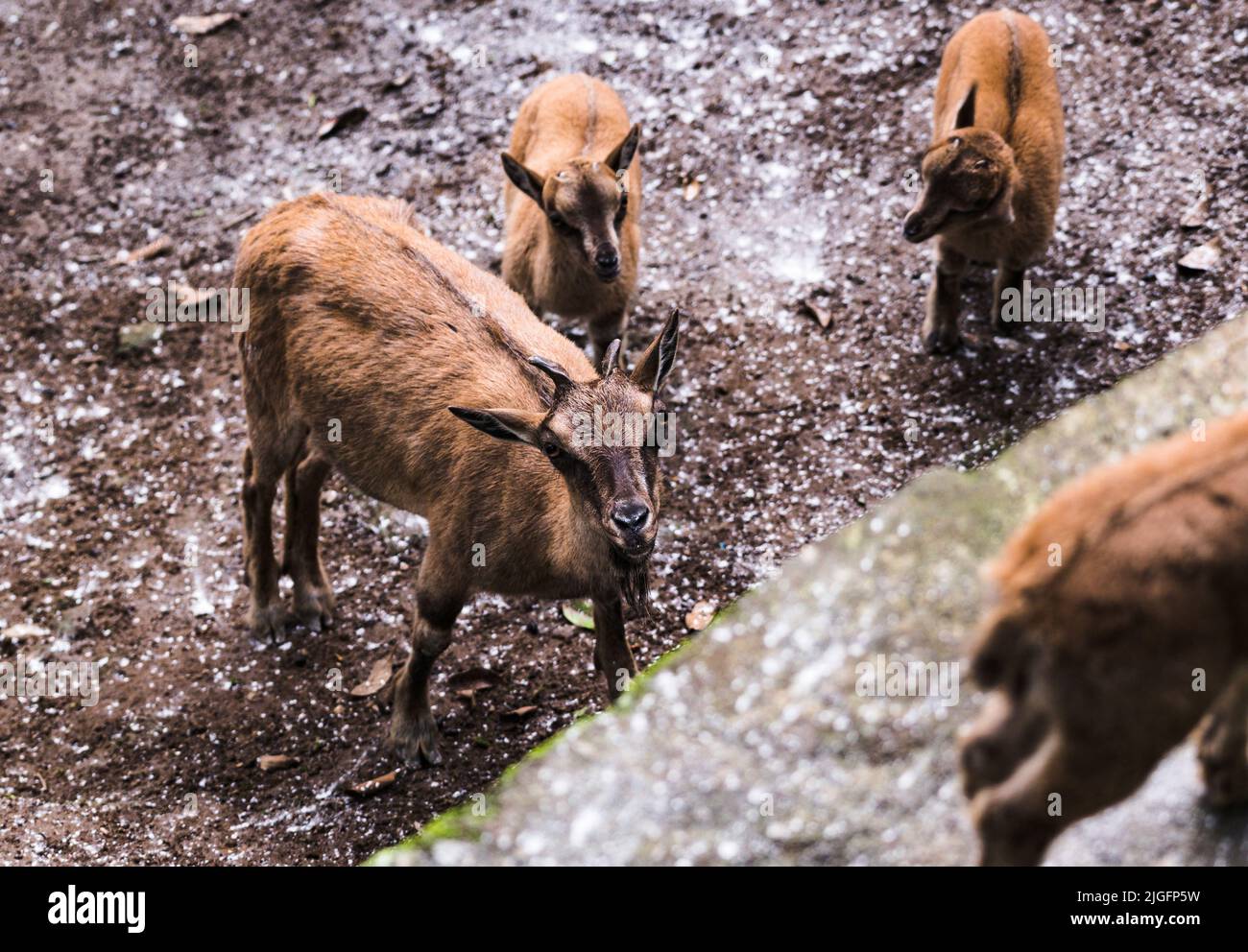 The markhor (Capra falconeri) is a large Capra species native to Central Asia, the Karakoram, and the Himalayas. It is listed on the IUCN Red List as Near Threatened. The markhor is the national animal of Pakistan and is regarded as the king of wild goats. This animal is diurnal and is mainly active in the early morning and late afternoon. A markhor mother and her fawns (baby) are at the conservation and breeding centre Padmaja Naidu Himalayan Zoological Park (PNHZP) in Darjeeling, West Bengal, India. Stock Photohttps://www.alamy.com/image-license-details/?v=1https://www.alamy.com/the-markhor-capra-falconeri-is-a-large-capra-species-native-to-central-asia-the-karakoram-and-the-himalayas-it-is-listed-on-the-iucn-red-list-as-near-threatened-the-markhor-is-the-national-animal-of-pakistan-and-is-regarded-as-the-king-of-wild-goats-this-animal-is-diurnal-and-is-mainly-active-in-the-early-morning-and-late-afternoon-a-markhor-mother-and-her-fawns-baby-are-at-the-conservation-and-breeding-centre-padmaja-naidu-himalayan-zoological-park-pnhzp-in-darjeeling-west-bengal-india-image474861125.html
The markhor (Capra falconeri) is a large Capra species native to Central Asia, the Karakoram, and the Himalayas. It is listed on the IUCN Red List as Near Threatened. The markhor is the national animal of Pakistan and is regarded as the king of wild goats. This animal is diurnal and is mainly active in the early morning and late afternoon. A markhor mother and her fawns (baby) are at the conservation and breeding centre Padmaja Naidu Himalayan Zoological Park (PNHZP) in Darjeeling, West Bengal, India. Stock Photohttps://www.alamy.com/image-license-details/?v=1https://www.alamy.com/the-markhor-capra-falconeri-is-a-large-capra-species-native-to-central-asia-the-karakoram-and-the-himalayas-it-is-listed-on-the-iucn-red-list-as-near-threatened-the-markhor-is-the-national-animal-of-pakistan-and-is-regarded-as-the-king-of-wild-goats-this-animal-is-diurnal-and-is-mainly-active-in-the-early-morning-and-late-afternoon-a-markhor-mother-and-her-fawns-baby-are-at-the-conservation-and-breeding-centre-padmaja-naidu-himalayan-zoological-park-pnhzp-in-darjeeling-west-bengal-india-image474861125.htmlRM2JGFP5W–The markhor (Capra falconeri) is a large Capra species native to Central Asia, the Karakoram, and the Himalayas. It is listed on the IUCN Red List as Near Threatened. The markhor is the national animal of Pakistan and is regarded as the king of wild goats. This animal is diurnal and is mainly active in the early morning and late afternoon. A markhor mother and her fawns (baby) are at the conservation and breeding centre Padmaja Naidu Himalayan Zoological Park (PNHZP) in Darjeeling, West Bengal, India.
 The Himalayan goral (Naemorhedus goral) is a bovid species that occur in the Himalayas from Pakistan, Nepal, Bhutan, southern Tibet, and the states of Sikkim and Arunachal Pradesh in India to western Myanmar. It is listed as Near Threatened on the IUCN Red List and CITES Appendix I because the population is thought to be declining significantly due to habitat loss and poaching for meat. Gorals are extremely difficult to spot because their camouflage is extremely effective, along with the fact that they lie motionless and can Stand at the vertical edge of a rock cliff. A Himalayan Goral and faw Stock Photohttps://www.alamy.com/image-license-details/?v=1https://www.alamy.com/the-himalayan-goral-naemorhedus-goral-is-a-bovid-species-that-occur-in-the-himalayas-from-pakistan-nepal-bhutan-southern-tibet-and-the-states-of-sikkim-and-arunachal-pradesh-in-india-to-western-myanmar-it-is-listed-as-near-threatened-on-the-iucn-red-list-and-cites-appendix-i-because-the-population-is-thought-to-be-declining-significantly-due-to-habitat-loss-and-poaching-for-meat-gorals-are-extremely-difficult-to-spot-because-their-camouflage-is-extremely-effective-along-with-the-fact-that-they-lie-motionless-and-can-stand-at-the-vertical-edge-of-a-rock-cliff-a-himalayan-goral-and-faw-image490170142.html
The Himalayan goral (Naemorhedus goral) is a bovid species that occur in the Himalayas from Pakistan, Nepal, Bhutan, southern Tibet, and the states of Sikkim and Arunachal Pradesh in India to western Myanmar. It is listed as Near Threatened on the IUCN Red List and CITES Appendix I because the population is thought to be declining significantly due to habitat loss and poaching for meat. Gorals are extremely difficult to spot because their camouflage is extremely effective, along with the fact that they lie motionless and can Stand at the vertical edge of a rock cliff. A Himalayan Goral and faw Stock Photohttps://www.alamy.com/image-license-details/?v=1https://www.alamy.com/the-himalayan-goral-naemorhedus-goral-is-a-bovid-species-that-occur-in-the-himalayas-from-pakistan-nepal-bhutan-southern-tibet-and-the-states-of-sikkim-and-arunachal-pradesh-in-india-to-western-myanmar-it-is-listed-as-near-threatened-on-the-iucn-red-list-and-cites-appendix-i-because-the-population-is-thought-to-be-declining-significantly-due-to-habitat-loss-and-poaching-for-meat-gorals-are-extremely-difficult-to-spot-because-their-camouflage-is-extremely-effective-along-with-the-fact-that-they-lie-motionless-and-can-stand-at-the-vertical-edge-of-a-rock-cliff-a-himalayan-goral-and-faw-image490170142.htmlRM2KDD50E–The Himalayan goral (Naemorhedus goral) is a bovid species that occur in the Himalayas from Pakistan, Nepal, Bhutan, southern Tibet, and the states of Sikkim and Arunachal Pradesh in India to western Myanmar. It is listed as Near Threatened on the IUCN Red List and CITES Appendix I because the population is thought to be declining significantly due to habitat loss and poaching for meat. Gorals are extremely difficult to spot because their camouflage is extremely effective, along with the fact that they lie motionless and can Stand at the vertical edge of a rock cliff. A Himalayan Goral and faw
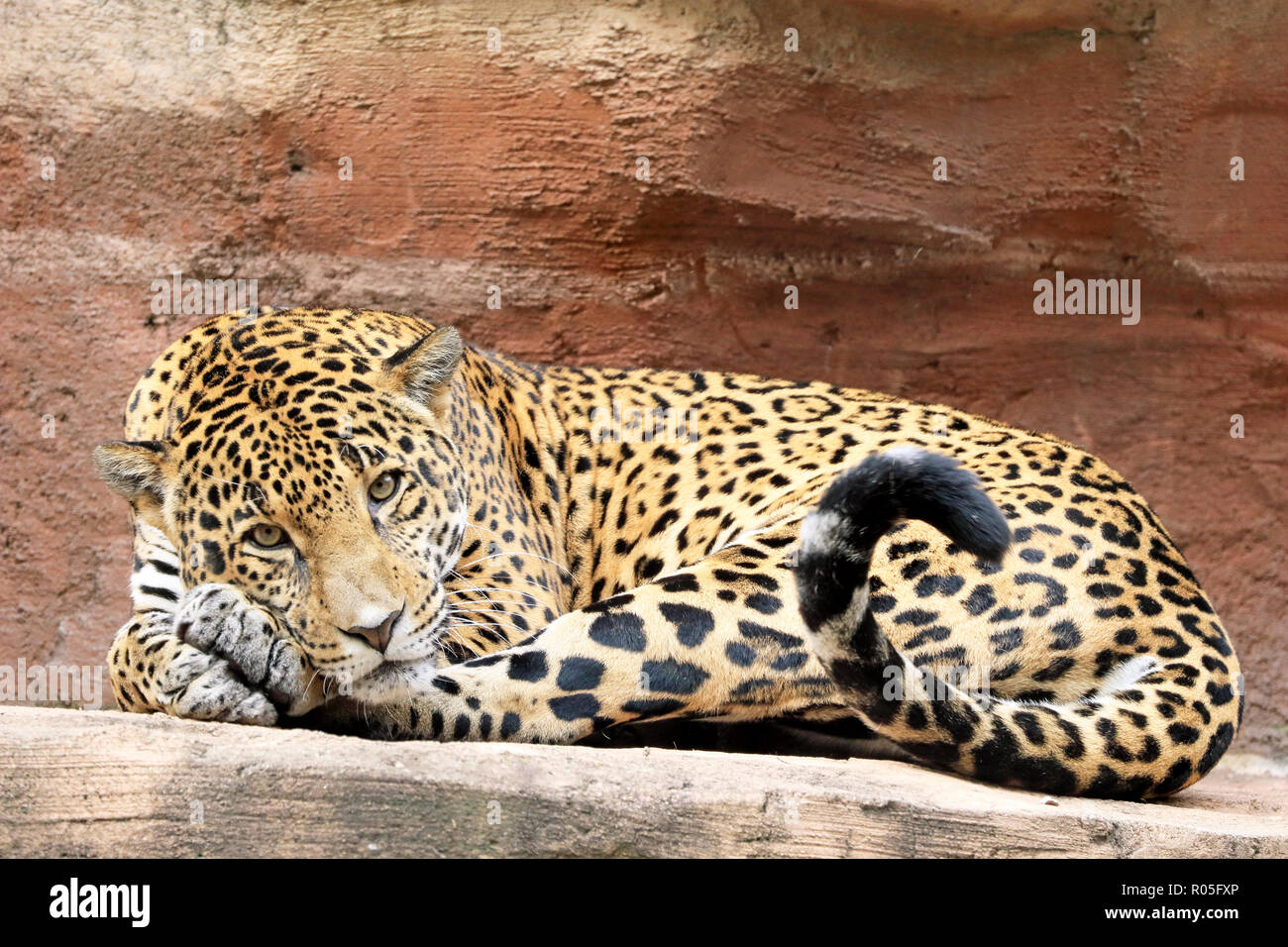 Jaguar, Panthera onca Stock Photohttps://www.alamy.com/image-license-details/?v=1https://www.alamy.com/jaguar-panthera-onca-image223857054.html
Jaguar, Panthera onca Stock Photohttps://www.alamy.com/image-license-details/?v=1https://www.alamy.com/jaguar-panthera-onca-image223857054.htmlRMR05FXP–Jaguar, Panthera onca
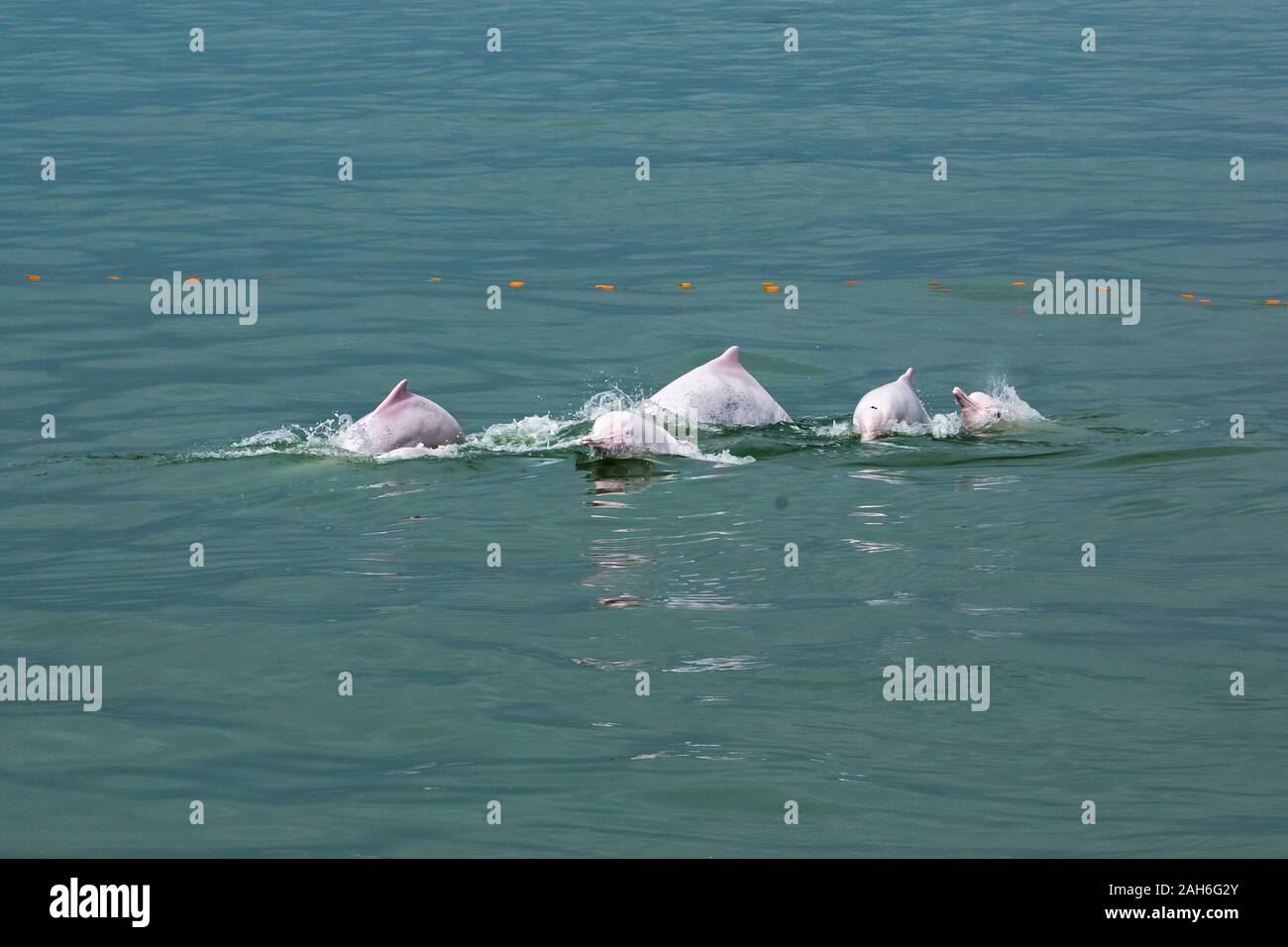 Indo-Pacific Humpback Dolphin / Chinese White Dolphin / Pink Dolphin (Sousa Chinensis) in the waters of Hong Kong, near a broken fishing net Stock Photohttps://www.alamy.com/image-license-details/?v=1https://www.alamy.com/indo-pacific-humpback-dolphin-chinese-white-dolphin-pink-dolphin-sousa-chinensis-in-the-waters-of-hong-kong-near-a-broken-fishing-net-image337590483.html
Indo-Pacific Humpback Dolphin / Chinese White Dolphin / Pink Dolphin (Sousa Chinensis) in the waters of Hong Kong, near a broken fishing net Stock Photohttps://www.alamy.com/image-license-details/?v=1https://www.alamy.com/indo-pacific-humpback-dolphin-chinese-white-dolphin-pink-dolphin-sousa-chinensis-in-the-waters-of-hong-kong-near-a-broken-fishing-net-image337590483.htmlRF2AH6G2Y–Indo-Pacific Humpback Dolphin / Chinese White Dolphin / Pink Dolphin (Sousa Chinensis) in the waters of Hong Kong, near a broken fishing net
 Curlew sitting on a rock Stock Photohttps://www.alamy.com/image-license-details/?v=1https://www.alamy.com/stock-photo-curlew-sitting-on-a-rock-52204689.html
Curlew sitting on a rock Stock Photohttps://www.alamy.com/image-license-details/?v=1https://www.alamy.com/stock-photo-curlew-sitting-on-a-rock-52204689.htmlRFD0X3H5–Curlew sitting on a rock
 Buffalo (Syncerus caffer) herd by waterhole, Ant's Hill Reserve, near Vaalwater, Limpopo province, South Africa Stock Photohttps://www.alamy.com/image-license-details/?v=1https://www.alamy.com/buffalo-syncerus-caffer-herd-by-waterhole-ants-hill-reserve-near-vaalwater-limpopo-province-south-africa-image508120431.html
Buffalo (Syncerus caffer) herd by waterhole, Ant's Hill Reserve, near Vaalwater, Limpopo province, South Africa Stock Photohttps://www.alamy.com/image-license-details/?v=1https://www.alamy.com/buffalo-syncerus-caffer-herd-by-waterhole-ants-hill-reserve-near-vaalwater-limpopo-province-south-africa-image508120431.htmlRM2MEJTP7–Buffalo (Syncerus caffer) herd by waterhole, Ant's Hill Reserve, near Vaalwater, Limpopo province, South Africa
 An adult Bearded Vultures or Lammergeier (Gypaetus barbatus) circeling at the blue sky above the photographer Stock Photohttps://www.alamy.com/image-license-details/?v=1https://www.alamy.com/an-adult-bearded-vultures-or-lammergeier-gypaetus-barbatus-circeling-at-the-blue-sky-above-the-photographer-image476519462.html
An adult Bearded Vultures or Lammergeier (Gypaetus barbatus) circeling at the blue sky above the photographer Stock Photohttps://www.alamy.com/image-license-details/?v=1https://www.alamy.com/an-adult-bearded-vultures-or-lammergeier-gypaetus-barbatus-circeling-at-the-blue-sky-above-the-photographer-image476519462.htmlRM2JK79C6–An adult Bearded Vultures or Lammergeier (Gypaetus barbatus) circeling at the blue sky above the photographer
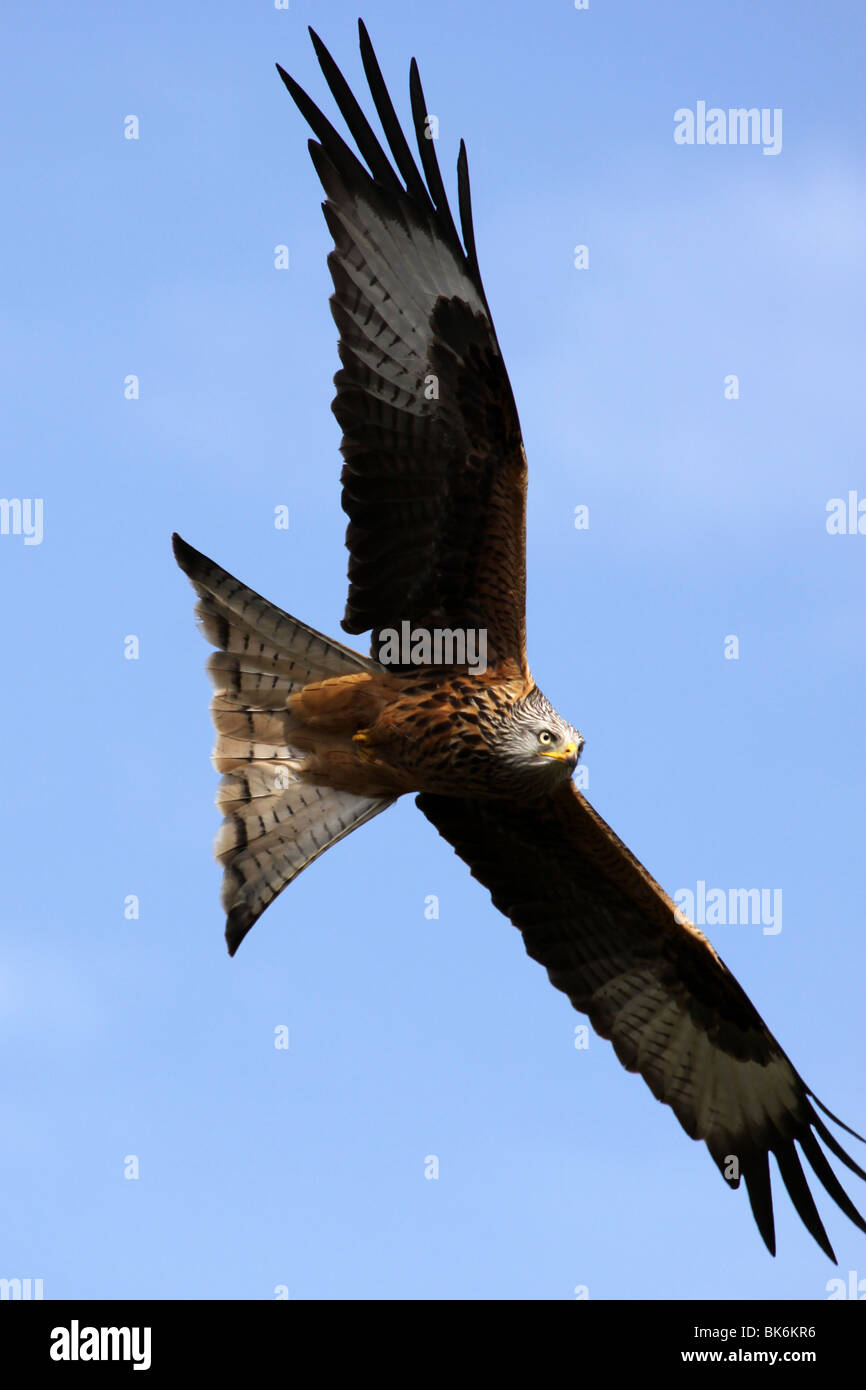 Red Kite Milvus milvus In Flight Against A Blue Sky Stock Photohttps://www.alamy.com/image-license-details/?v=1https://www.alamy.com/stock-photo-red-kite-milvus-milvus-in-flight-against-a-blue-sky-29036090.html
Red Kite Milvus milvus In Flight Against A Blue Sky Stock Photohttps://www.alamy.com/image-license-details/?v=1https://www.alamy.com/stock-photo-red-kite-milvus-milvus-in-flight-against-a-blue-sky-29036090.htmlRMBK6KR6–Red Kite Milvus milvus In Flight Against A Blue Sky
 Echinus esculentus, Print, Echinus esculentus, the European edible sea urchin or common sea urchin, is a species of marine invertebrate in the Echinidae family. It is found in coastal areas of western Europe down to a depth of 1, 200 m (3, 900 ft). It is considered 'Near threatened' in the IUCN Red List of Threatened Species Stock Photohttps://www.alamy.com/image-license-details/?v=1https://www.alamy.com/echinus-esculentus-print-echinus-esculentus-the-european-edible-sea-urchin-or-common-sea-urchin-is-a-species-of-marine-invertebrate-in-the-echinidae-family-it-is-found-in-coastal-areas-of-western-europe-down-to-a-depth-of-1-200-m-3-900-ft-it-is-considered-near-threatened-in-the-iucn-red-list-of-threatened-species-image328678798.html
Echinus esculentus, Print, Echinus esculentus, the European edible sea urchin or common sea urchin, is a species of marine invertebrate in the Echinidae family. It is found in coastal areas of western Europe down to a depth of 1, 200 m (3, 900 ft). It is considered 'Near threatened' in the IUCN Red List of Threatened Species Stock Photohttps://www.alamy.com/image-license-details/?v=1https://www.alamy.com/echinus-esculentus-print-echinus-esculentus-the-european-edible-sea-urchin-or-common-sea-urchin-is-a-species-of-marine-invertebrate-in-the-echinidae-family-it-is-found-in-coastal-areas-of-western-europe-down-to-a-depth-of-1-200-m-3-900-ft-it-is-considered-near-threatened-in-the-iucn-red-list-of-threatened-species-image328678798.htmlRM2A2MH4E–Echinus esculentus, Print, Echinus esculentus, the European edible sea urchin or common sea urchin, is a species of marine invertebrate in the Echinidae family. It is found in coastal areas of western Europe down to a depth of 1, 200 m (3, 900 ft). It is considered 'Near threatened' in the IUCN Red List of Threatened Species
 An IUCN Red List Near-Threatened Buff-breasted Sandpiper Shorebird Walks on a Dried Muddy Lake Bed During Migration in Colorado Stock Photohttps://www.alamy.com/image-license-details/?v=1https://www.alamy.com/an-iucn-red-list-near-threatened-buff-breasted-sandpiper-shorebird-walks-on-a-dried-muddy-lake-bed-during-migration-in-colorado-image376328231.html
An IUCN Red List Near-Threatened Buff-breasted Sandpiper Shorebird Walks on a Dried Muddy Lake Bed During Migration in Colorado Stock Photohttps://www.alamy.com/image-license-details/?v=1https://www.alamy.com/an-iucn-red-list-near-threatened-buff-breasted-sandpiper-shorebird-walks-on-a-dried-muddy-lake-bed-during-migration-in-colorado-image376328231.htmlRF2CT76DY–An IUCN Red List Near-Threatened Buff-breasted Sandpiper Shorebird Walks on a Dried Muddy Lake Bed During Migration in Colorado
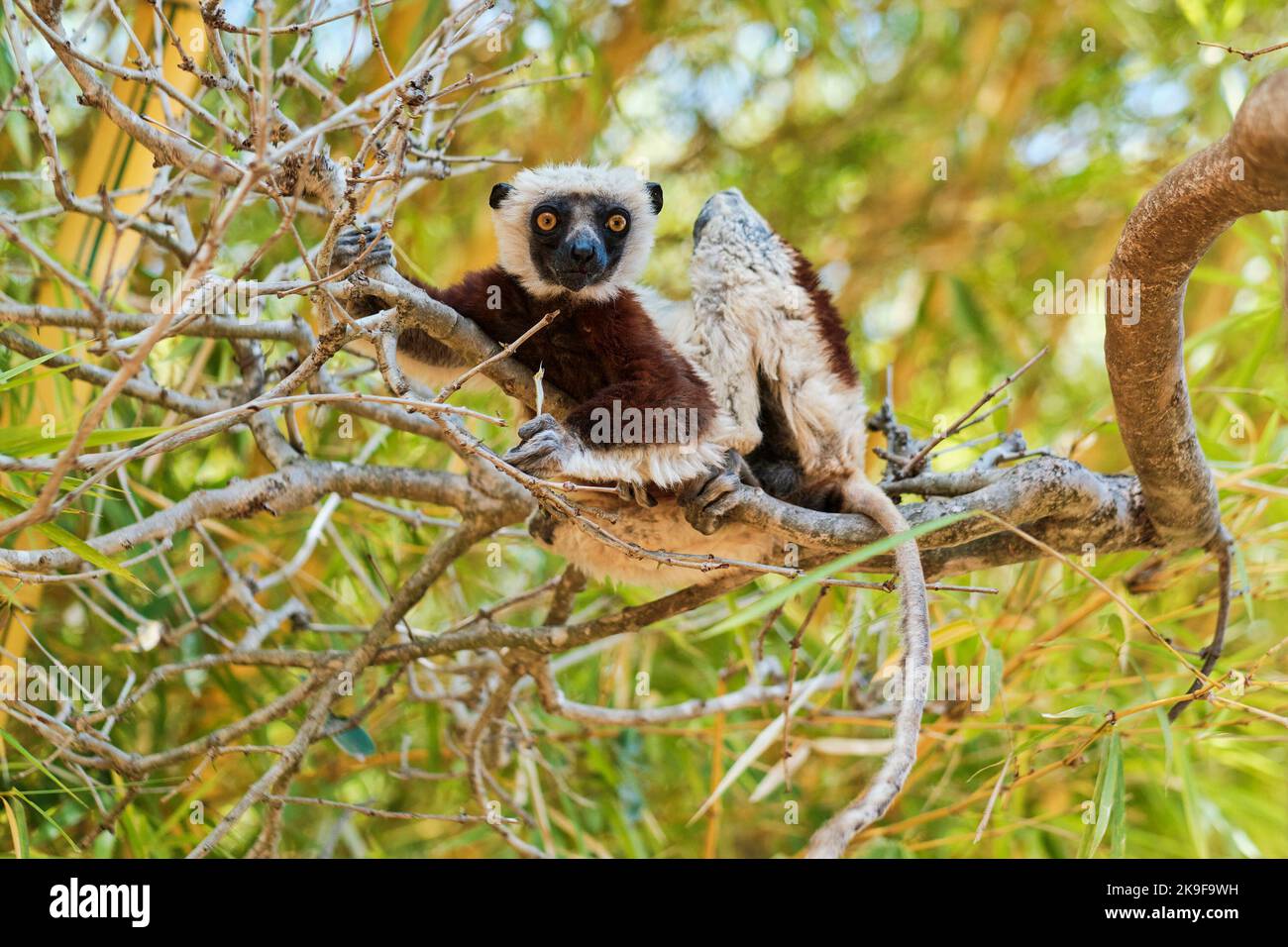 Nairobi, Madagascar. 21st Oct, 2022. A lemur is seen near Antananarivo, Madagascar, Oct. 21, 2022. Many species of lemurs are listed on the International Union for Conservation of Nature (IUCN) Red List of Threatened Species and are in danger of extinction due to habitat destruction and illegal hunting in recent years. Credit: Iako Randrianarivelo/Xinhua/Alamy Live News Stock Photohttps://www.alamy.com/image-license-details/?v=1https://www.alamy.com/nairobi-madagascar-21st-oct-2022-a-lemur-is-seen-near-antananarivo-madagascar-oct-21-2022-many-species-of-lemurs-are-listed-on-the-international-union-for-conservation-of-nature-iucn-red-list-of-threatened-species-and-are-in-danger-of-extinction-due-to-habitat-destruction-and-illegal-hunting-in-recent-years-credit-iako-randrianariveloxinhuaalamy-live-news-image487759261.html
Nairobi, Madagascar. 21st Oct, 2022. A lemur is seen near Antananarivo, Madagascar, Oct. 21, 2022. Many species of lemurs are listed on the International Union for Conservation of Nature (IUCN) Red List of Threatened Species and are in danger of extinction due to habitat destruction and illegal hunting in recent years. Credit: Iako Randrianarivelo/Xinhua/Alamy Live News Stock Photohttps://www.alamy.com/image-license-details/?v=1https://www.alamy.com/nairobi-madagascar-21st-oct-2022-a-lemur-is-seen-near-antananarivo-madagascar-oct-21-2022-many-species-of-lemurs-are-listed-on-the-international-union-for-conservation-of-nature-iucn-red-list-of-threatened-species-and-are-in-danger-of-extinction-due-to-habitat-destruction-and-illegal-hunting-in-recent-years-credit-iako-randrianariveloxinhuaalamy-live-news-image487759261.htmlRM2K9F9WH–Nairobi, Madagascar. 21st Oct, 2022. A lemur is seen near Antananarivo, Madagascar, Oct. 21, 2022. Many species of lemurs are listed on the International Union for Conservation of Nature (IUCN) Red List of Threatened Species and are in danger of extinction due to habitat destruction and illegal hunting in recent years. Credit: Iako Randrianarivelo/Xinhua/Alamy Live News
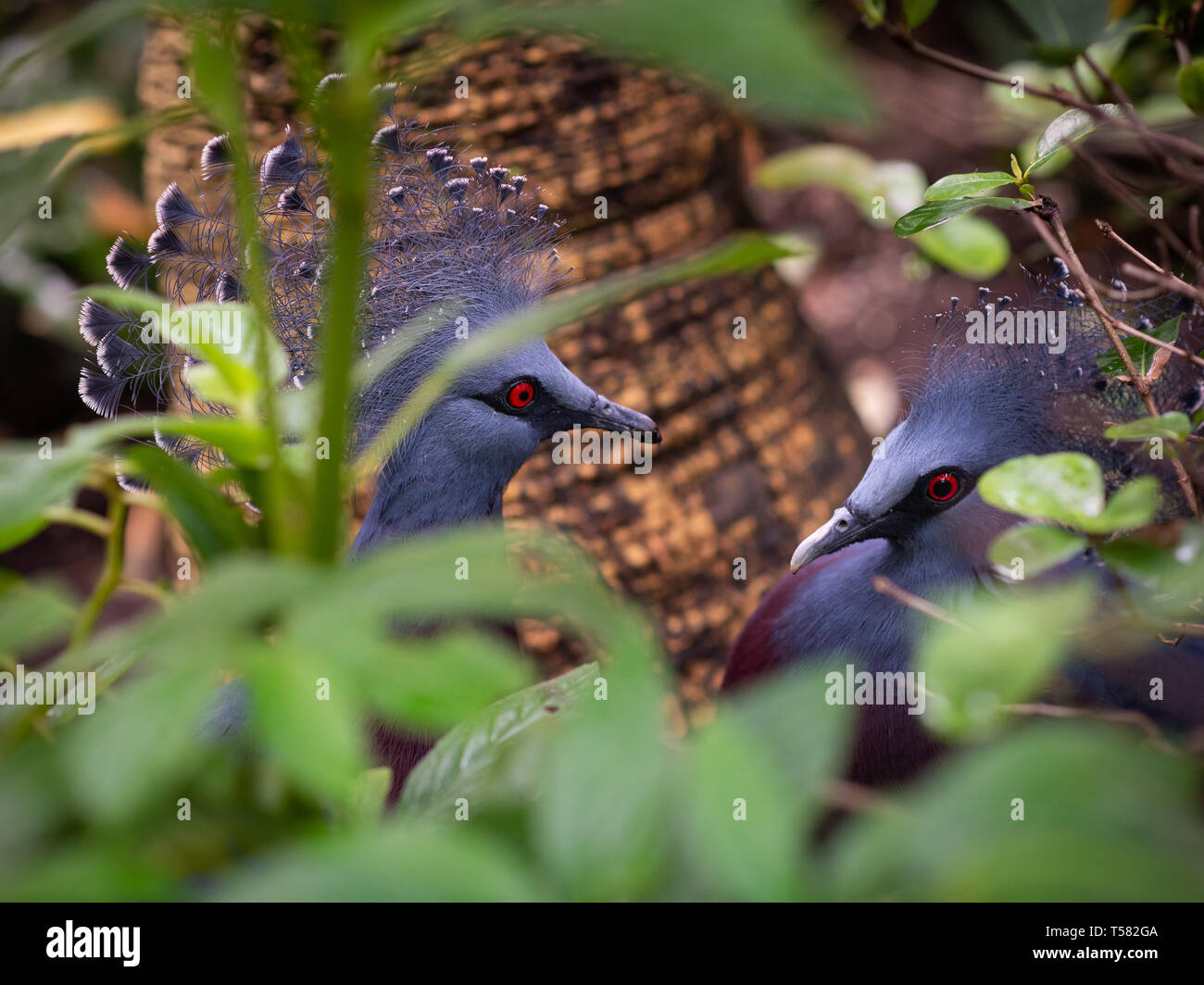 Victoria Crowned Pigeons at Islands, Chester Zoo prior to fire Stock Photohttps://www.alamy.com/image-license-details/?v=1https://www.alamy.com/victoria-crowned-pigeons-at-islands-chester-zoo-prior-to-fire-image244196074.html
Victoria Crowned Pigeons at Islands, Chester Zoo prior to fire Stock Photohttps://www.alamy.com/image-license-details/?v=1https://www.alamy.com/victoria-crowned-pigeons-at-islands-chester-zoo-prior-to-fire-image244196074.htmlRFT582GA–Victoria Crowned Pigeons at Islands, Chester Zoo prior to fire
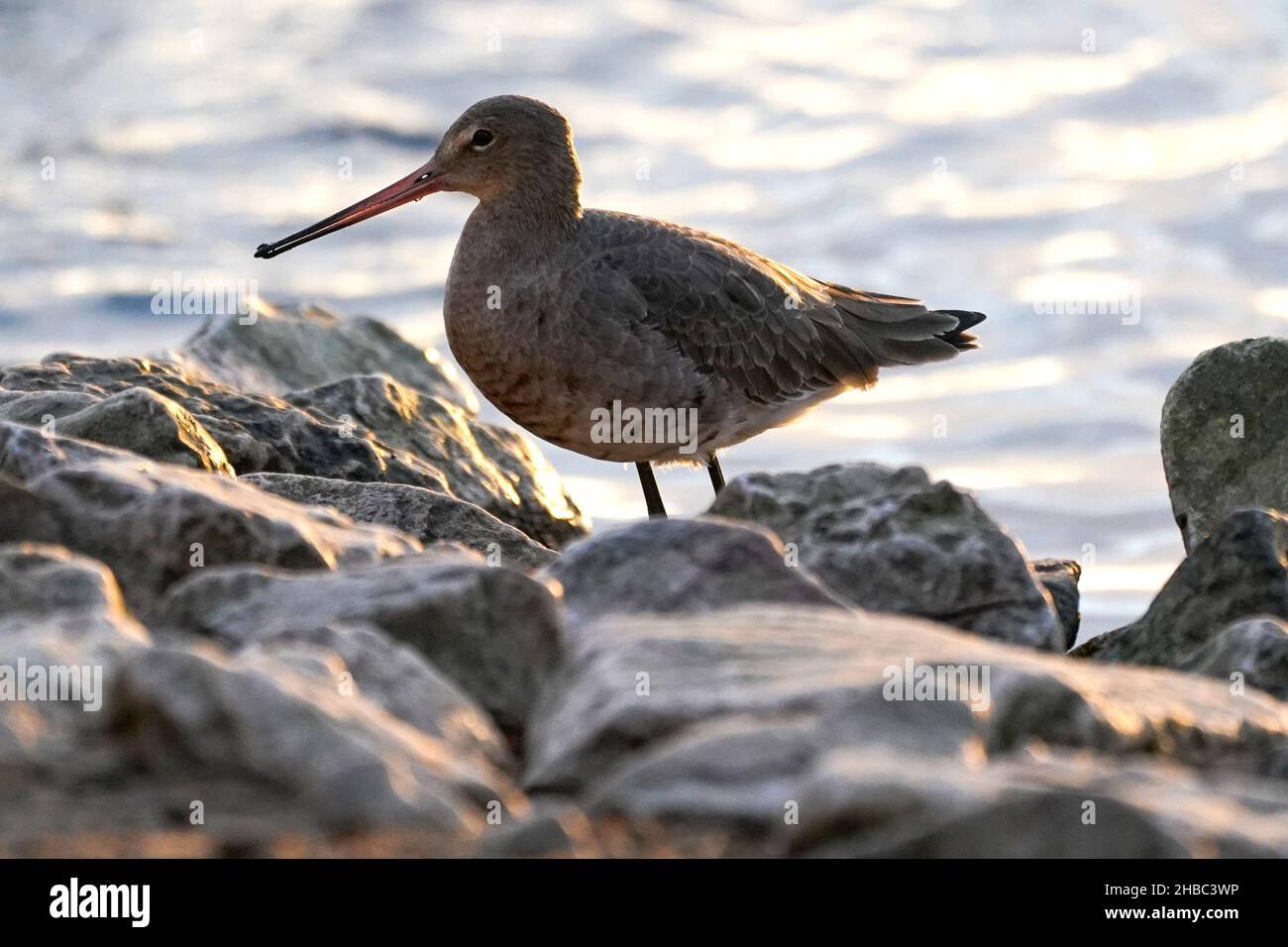 Black-tailed Godwit.Scientific name: Limosa limosa The Black-tailed Godwit is a rare breeding bird in the UK that has suffered from dramatic declines. Classified in the UK as Red under the Birds of Conservation Concern 4: the Red List for Birds (2015). Protected in the UK under the Wildlife and Countryside Act, 1981. Priority Species under the UK Post-2010 Biodiversity Framework. Listed as Near Threatened on the global IUCN Red List of Threatened Species.the Black-tailed Godwit breeds in wet grasslands, and winters on coastal estuaries and marshes, and at inland shallow waters. A sociable bird Stock Photohttps://www.alamy.com/image-license-details/?v=1https://www.alamy.com/black-tailed-godwitscientific-name-limosa-limosa-the-black-tailed-godwit-is-a-rare-breeding-bird-in-the-uk-that-has-suffered-from-dramatic-declines-classified-in-the-uk-as-red-under-the-birds-of-conservation-concern-4-the-red-list-for-birds-2015-protected-in-the-uk-under-the-wildlife-and-countryside-act-1981-priority-species-under-the-uk-post-2010-biodiversity-framework-listed-as-near-threatened-on-the-global-iucn-red-list-of-threatened-speciesthe-black-tailed-godwit-breeds-in-wet-grasslands-and-winters-on-coastal-estuaries-and-marshes-and-at-inland-shallow-waters-a-sociable-bird-image454497282.html
Black-tailed Godwit.Scientific name: Limosa limosa The Black-tailed Godwit is a rare breeding bird in the UK that has suffered from dramatic declines. Classified in the UK as Red under the Birds of Conservation Concern 4: the Red List for Birds (2015). Protected in the UK under the Wildlife and Countryside Act, 1981. Priority Species under the UK Post-2010 Biodiversity Framework. Listed as Near Threatened on the global IUCN Red List of Threatened Species.the Black-tailed Godwit breeds in wet grasslands, and winters on coastal estuaries and marshes, and at inland shallow waters. A sociable bird Stock Photohttps://www.alamy.com/image-license-details/?v=1https://www.alamy.com/black-tailed-godwitscientific-name-limosa-limosa-the-black-tailed-godwit-is-a-rare-breeding-bird-in-the-uk-that-has-suffered-from-dramatic-declines-classified-in-the-uk-as-red-under-the-birds-of-conservation-concern-4-the-red-list-for-birds-2015-protected-in-the-uk-under-the-wildlife-and-countryside-act-1981-priority-species-under-the-uk-post-2010-biodiversity-framework-listed-as-near-threatened-on-the-global-iucn-red-list-of-threatened-speciesthe-black-tailed-godwit-breeds-in-wet-grasslands-and-winters-on-coastal-estuaries-and-marshes-and-at-inland-shallow-waters-a-sociable-bird-image454497282.htmlRM2HBC3WP–Black-tailed Godwit.Scientific name: Limosa limosa The Black-tailed Godwit is a rare breeding bird in the UK that has suffered from dramatic declines. Classified in the UK as Red under the Birds of Conservation Concern 4: the Red List for Birds (2015). Protected in the UK under the Wildlife and Countryside Act, 1981. Priority Species under the UK Post-2010 Biodiversity Framework. Listed as Near Threatened on the global IUCN Red List of Threatened Species.the Black-tailed Godwit breeds in wet grasslands, and winters on coastal estuaries and marshes, and at inland shallow waters. A sociable bird
 Himalayan Griffon, Gyps himalayensis, Sattal, Uttarakhand, India. Near Threatened on the IUCN Red List Stock Photohttps://www.alamy.com/image-license-details/?v=1https://www.alamy.com/himalayan-griffon-gyps-himalayensis-sattal-uttarakhand-india-near-threatened-on-the-iucn-red-list-image470647883.html
Himalayan Griffon, Gyps himalayensis, Sattal, Uttarakhand, India. Near Threatened on the IUCN Red List Stock Photohttps://www.alamy.com/image-license-details/?v=1https://www.alamy.com/himalayan-griffon-gyps-himalayensis-sattal-uttarakhand-india-near-threatened-on-the-iucn-red-list-image470647883.htmlRF2J9KT4Y–Himalayan Griffon, Gyps himalayensis, Sattal, Uttarakhand, India. Near Threatened on the IUCN Red List
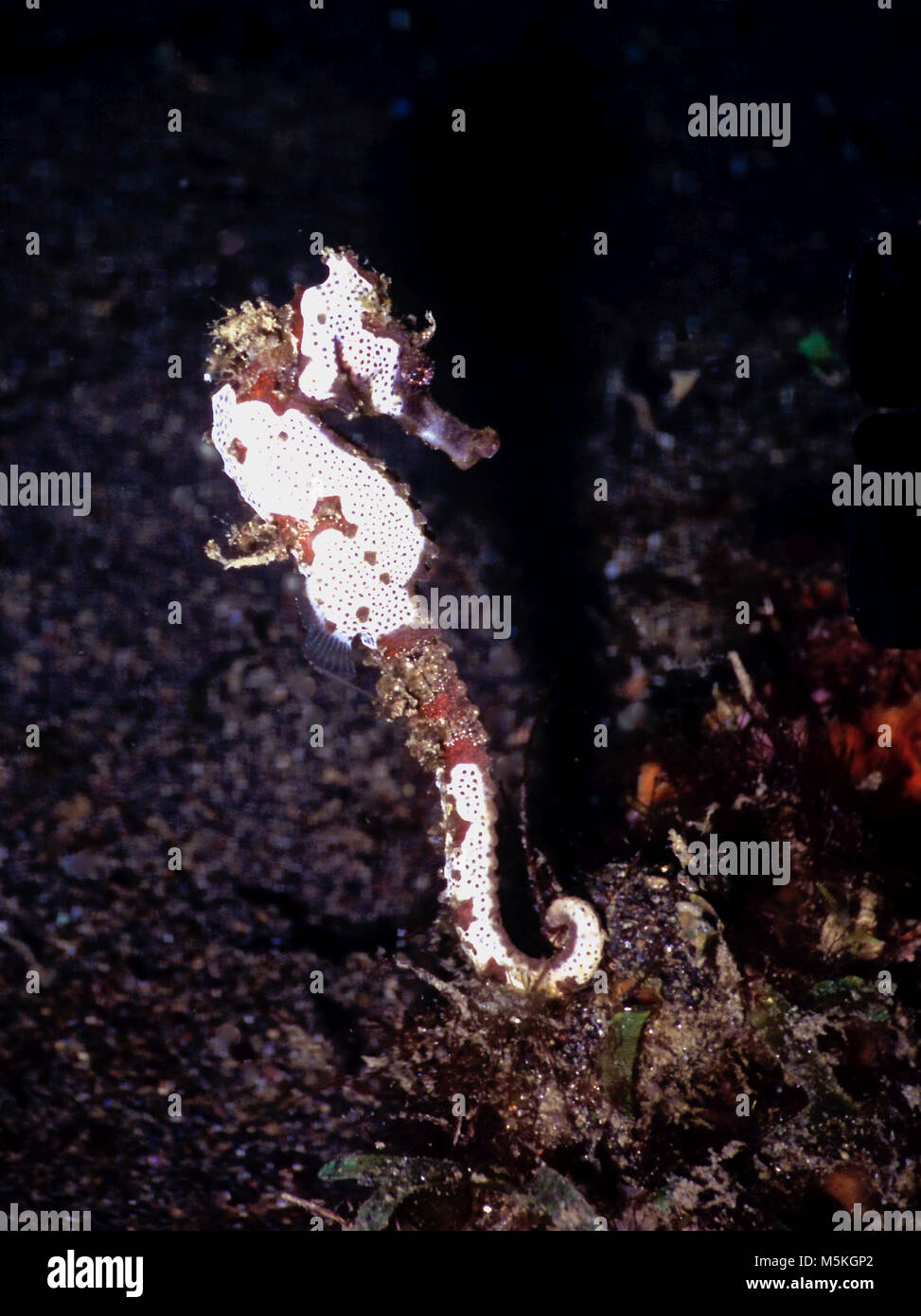 This is a picture of a thorny seahorse (Hippocampus histrix: 10 cms.). The IUCN Red List indicates that it is vulnerable. It is found in the Indo-West Pacific, usually near sponges and soft corals. In common with other seahorse species, it is threatened because of over-fishing (it becomes trawl bycatch), pollution and coastal development. For protection, the bodies of all seahorses are covered with bony plates. In this instance, many of these plates are overlaid with an encrustation of white bryozoans, which helps to camouflage the animal. Photographed in northern Sulawesi waters, Indonesia. Stock Photohttps://www.alamy.com/image-license-details/?v=1https://www.alamy.com/stock-photo-this-is-a-picture-of-a-thorny-seahorse-hippocampus-histrix-10-cms-175607210.html
This is a picture of a thorny seahorse (Hippocampus histrix: 10 cms.). The IUCN Red List indicates that it is vulnerable. It is found in the Indo-West Pacific, usually near sponges and soft corals. In common with other seahorse species, it is threatened because of over-fishing (it becomes trawl bycatch), pollution and coastal development. For protection, the bodies of all seahorses are covered with bony plates. In this instance, many of these plates are overlaid with an encrustation of white bryozoans, which helps to camouflage the animal. Photographed in northern Sulawesi waters, Indonesia. Stock Photohttps://www.alamy.com/image-license-details/?v=1https://www.alamy.com/stock-photo-this-is-a-picture-of-a-thorny-seahorse-hippocampus-histrix-10-cms-175607210.htmlRFM5KGP2–This is a picture of a thorny seahorse (Hippocampus histrix: 10 cms.). The IUCN Red List indicates that it is vulnerable. It is found in the Indo-West Pacific, usually near sponges and soft corals. In common with other seahorse species, it is threatened because of over-fishing (it becomes trawl bycatch), pollution and coastal development. For protection, the bodies of all seahorses are covered with bony plates. In this instance, many of these plates are overlaid with an encrustation of white bryozoans, which helps to camouflage the animal. Photographed in northern Sulawesi waters, Indonesia.
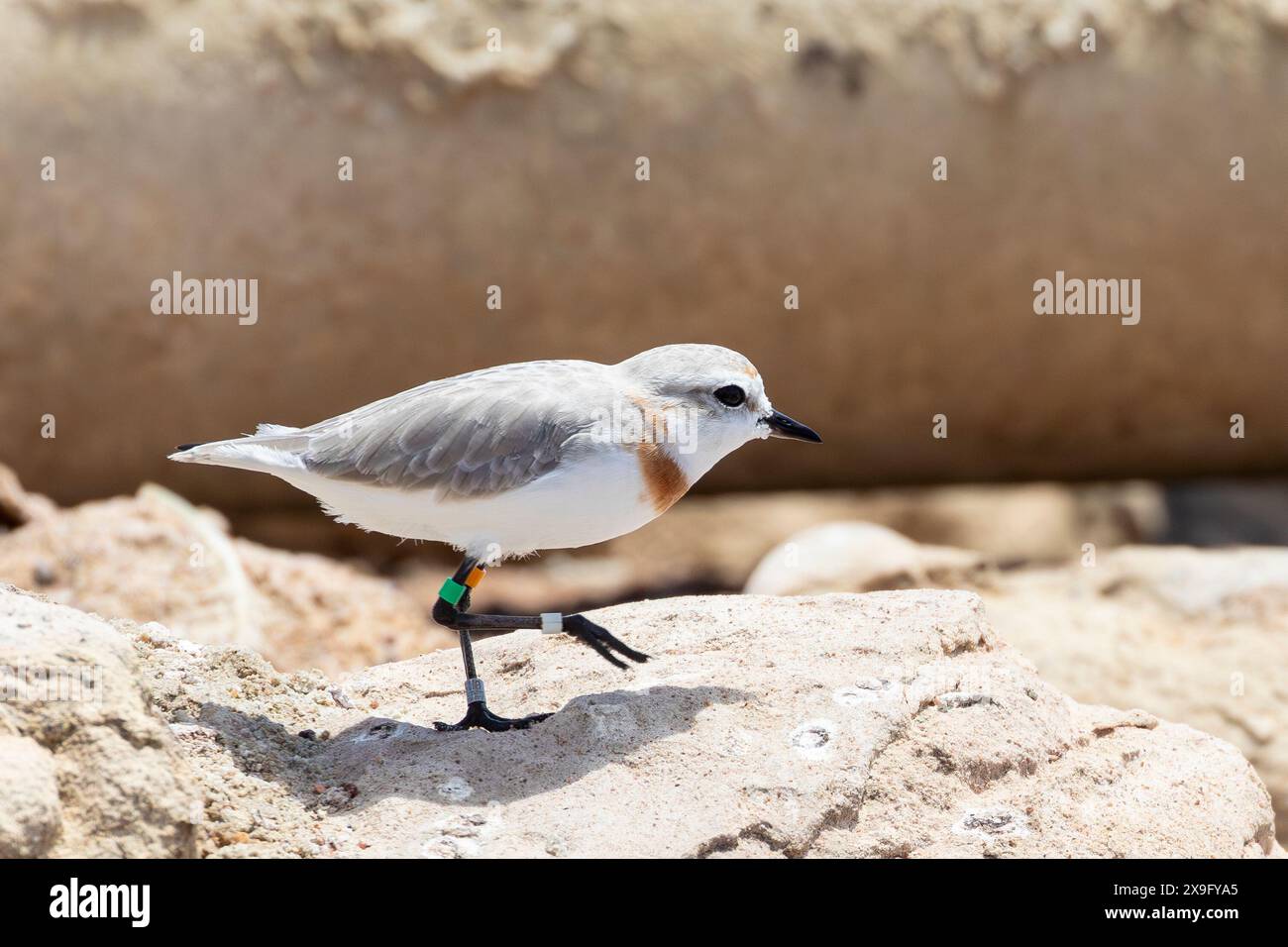 A ringed female Chestnut-banded Plover (Charadrius pallidus) at Kliphoek Salt pans, West Coast, South Africa. Near Threatened Stock Photohttps://www.alamy.com/image-license-details/?v=1https://www.alamy.com/a-ringed-female-chestnut-banded-plover-charadrius-pallidus-at-kliphoek-salt-pans-west-coast-south-africa-near-threatened-image608245517.html
A ringed female Chestnut-banded Plover (Charadrius pallidus) at Kliphoek Salt pans, West Coast, South Africa. Near Threatened Stock Photohttps://www.alamy.com/image-license-details/?v=1https://www.alamy.com/a-ringed-female-chestnut-banded-plover-charadrius-pallidus-at-kliphoek-salt-pans-west-coast-south-africa-near-threatened-image608245517.htmlRM2X9FYA5–A ringed female Chestnut-banded Plover (Charadrius pallidus) at Kliphoek Salt pans, West Coast, South Africa. Near Threatened
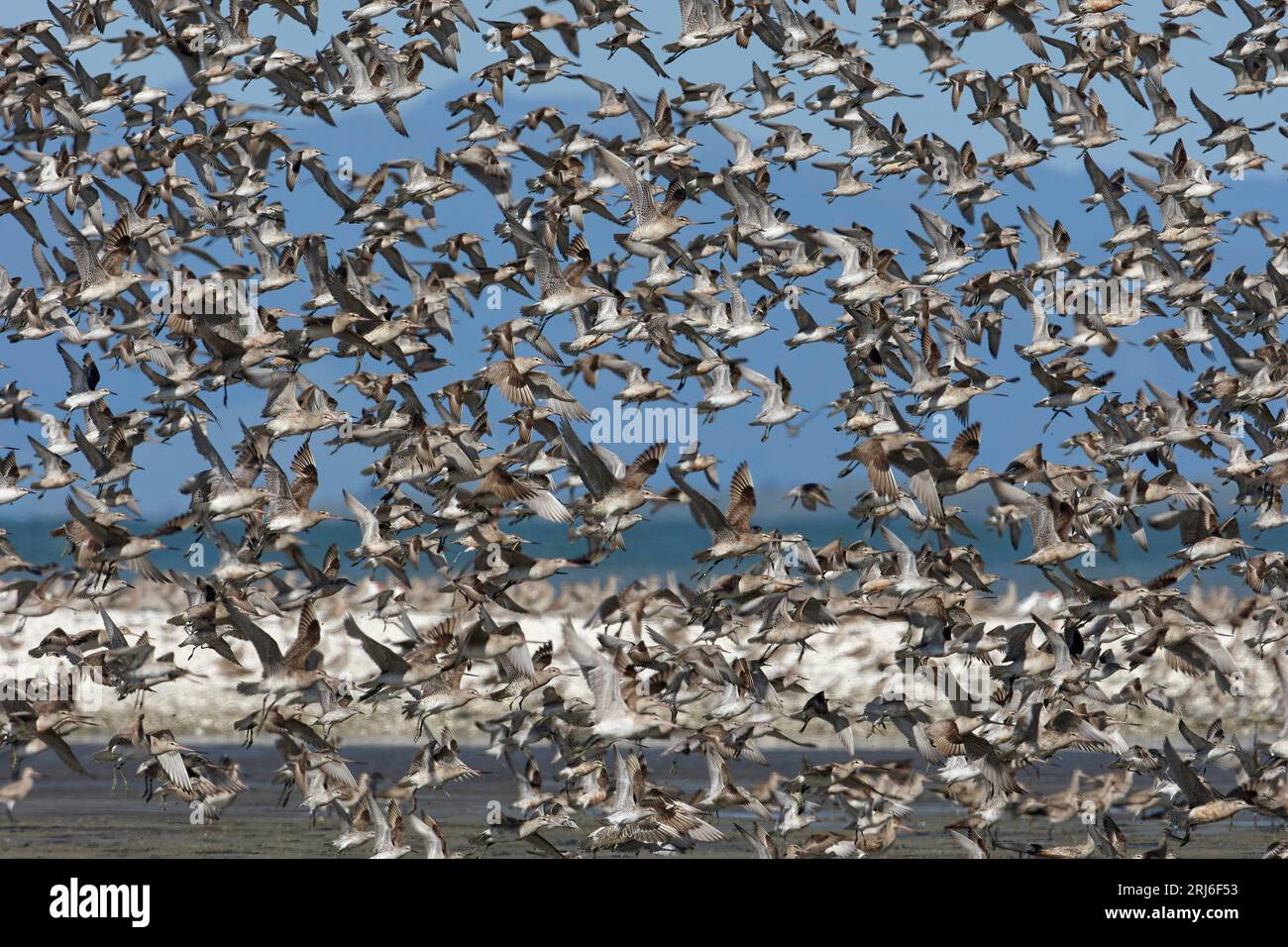 Hundreds of Bar-tailed Godwits - Limosa lapponica - simultaneously take to the air in Miranda - New Zealand. Stock Photohttps://www.alamy.com/image-license-details/?v=1https://www.alamy.com/hundreds-of-bar-tailed-godwits-limosa-lapponica-simultaneously-take-to-the-air-in-miranda-new-zealand-image561939199.html
Hundreds of Bar-tailed Godwits - Limosa lapponica - simultaneously take to the air in Miranda - New Zealand. Stock Photohttps://www.alamy.com/image-license-details/?v=1https://www.alamy.com/hundreds-of-bar-tailed-godwits-limosa-lapponica-simultaneously-take-to-the-air-in-miranda-new-zealand-image561939199.htmlRM2RJ6F53–Hundreds of Bar-tailed Godwits - Limosa lapponica - simultaneously take to the air in Miranda - New Zealand.
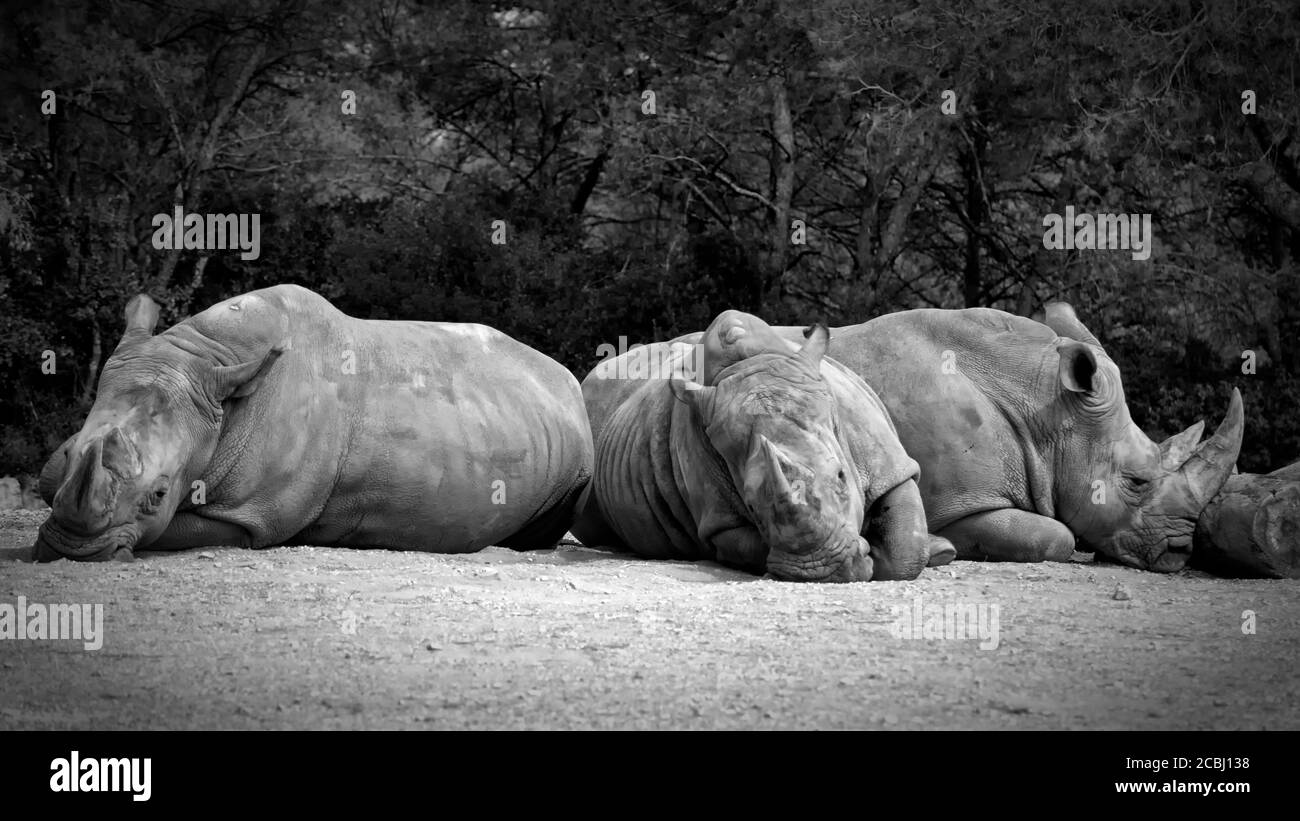 Three Southern White Rhinos are taking a nap. Stock Photohttps://www.alamy.com/image-license-details/?v=1https://www.alamy.com/three-southern-white-rhinos-are-taking-a-nap-image368574956.html
Three Southern White Rhinos are taking a nap. Stock Photohttps://www.alamy.com/image-license-details/?v=1https://www.alamy.com/three-southern-white-rhinos-are-taking-a-nap-image368574956.htmlRM2CBJ138–Three Southern White Rhinos are taking a nap.
 Clouded Apollo (Parnassius mnemosyne). The species is listed as NT (Near Threatened) in the IUCN global red list. Stock Photohttps://www.alamy.com/image-license-details/?v=1https://www.alamy.com/stock-photo-clouded-apollo-parnassius-mnemosyne-the-species-is-listed-as-nt-near-86734643.html
Clouded Apollo (Parnassius mnemosyne). The species is listed as NT (Near Threatened) in the IUCN global red list. Stock Photohttps://www.alamy.com/image-license-details/?v=1https://www.alamy.com/stock-photo-clouded-apollo-parnassius-mnemosyne-the-species-is-listed-as-nt-near-86734643.htmlRMF132WR–Clouded Apollo (Parnassius mnemosyne). The species is listed as NT (Near Threatened) in the IUCN global red list.
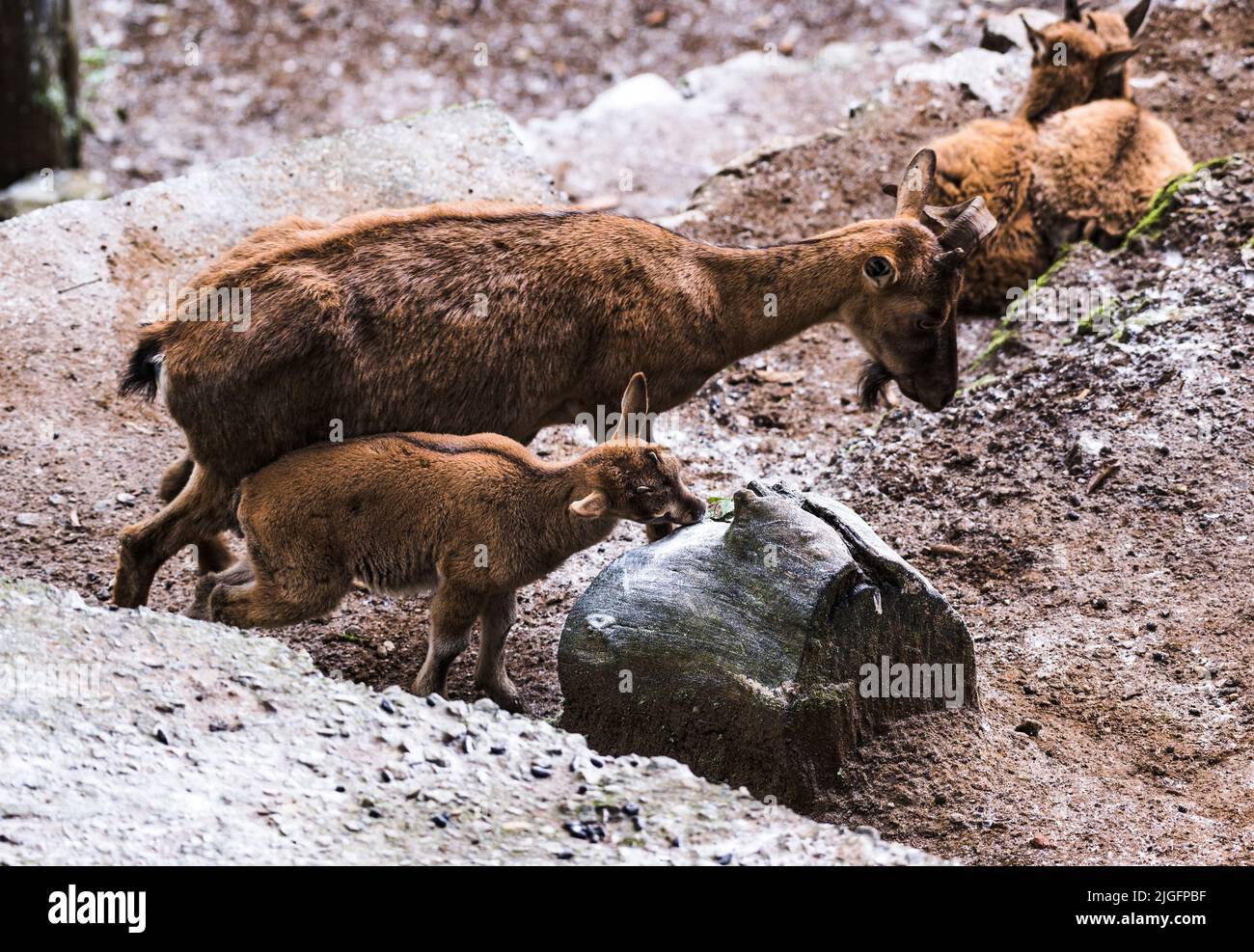 The markhor (Capra falconeri) is a large Capra species native to Central Asia, the Karakoram, and the Himalayas. It is listed on the IUCN Red List as Near Threatened. The markhor is the national animal of Pakistan and is regarded as the king of wild goats. This animal is diurnal and is mainly active in the early morning and late afternoon. A markhor mother and her fawns (baby) are at the conservation and breeding centre Padmaja Naidu Himalayan Zoological Park (PNHZP) in Darjeeling, West Bengal, India. Stock Photohttps://www.alamy.com/image-license-details/?v=1https://www.alamy.com/the-markhor-capra-falconeri-is-a-large-capra-species-native-to-central-asia-the-karakoram-and-the-himalayas-it-is-listed-on-the-iucn-red-list-as-near-threatened-the-markhor-is-the-national-animal-of-pakistan-and-is-regarded-as-the-king-of-wild-goats-this-animal-is-diurnal-and-is-mainly-active-in-the-early-morning-and-late-afternoon-a-markhor-mother-and-her-fawns-baby-are-at-the-conservation-and-breeding-centre-padmaja-naidu-himalayan-zoological-park-pnhzp-in-darjeeling-west-bengal-india-image474861283.html
The markhor (Capra falconeri) is a large Capra species native to Central Asia, the Karakoram, and the Himalayas. It is listed on the IUCN Red List as Near Threatened. The markhor is the national animal of Pakistan and is regarded as the king of wild goats. This animal is diurnal and is mainly active in the early morning and late afternoon. A markhor mother and her fawns (baby) are at the conservation and breeding centre Padmaja Naidu Himalayan Zoological Park (PNHZP) in Darjeeling, West Bengal, India. Stock Photohttps://www.alamy.com/image-license-details/?v=1https://www.alamy.com/the-markhor-capra-falconeri-is-a-large-capra-species-native-to-central-asia-the-karakoram-and-the-himalayas-it-is-listed-on-the-iucn-red-list-as-near-threatened-the-markhor-is-the-national-animal-of-pakistan-and-is-regarded-as-the-king-of-wild-goats-this-animal-is-diurnal-and-is-mainly-active-in-the-early-morning-and-late-afternoon-a-markhor-mother-and-her-fawns-baby-are-at-the-conservation-and-breeding-centre-padmaja-naidu-himalayan-zoological-park-pnhzp-in-darjeeling-west-bengal-india-image474861283.htmlRM2JGFPBF–The markhor (Capra falconeri) is a large Capra species native to Central Asia, the Karakoram, and the Himalayas. It is listed on the IUCN Red List as Near Threatened. The markhor is the national animal of Pakistan and is regarded as the king of wild goats. This animal is diurnal and is mainly active in the early morning and late afternoon. A markhor mother and her fawns (baby) are at the conservation and breeding centre Padmaja Naidu Himalayan Zoological Park (PNHZP) in Darjeeling, West Bengal, India.
 The Himalayan goral (Naemorhedus goral) is a bovid species that occur in the Himalayas from Pakistan, Nepal, Bhutan, southern Tibet, and the states of Sikkim and Arunachal Pradesh in India to western Myanmar. It is listed as Near Threatened on the IUCN Red List and CITES Appendix I because the population is thought to be declining significantly due to habitat loss and poaching for meat. Gorals are extremely difficult to spot because their camouflage is extremely effective, along with the fact that they lie motionless and can Stand at the vertical edge of a rock cliff. A Himalayan Goral and faw Stock Photohttps://www.alamy.com/image-license-details/?v=1https://www.alamy.com/the-himalayan-goral-naemorhedus-goral-is-a-bovid-species-that-occur-in-the-himalayas-from-pakistan-nepal-bhutan-southern-tibet-and-the-states-of-sikkim-and-arunachal-pradesh-in-india-to-western-myanmar-it-is-listed-as-near-threatened-on-the-iucn-red-list-and-cites-appendix-i-because-the-population-is-thought-to-be-declining-significantly-due-to-habitat-loss-and-poaching-for-meat-gorals-are-extremely-difficult-to-spot-because-their-camouflage-is-extremely-effective-along-with-the-fact-that-they-lie-motionless-and-can-stand-at-the-vertical-edge-of-a-rock-cliff-a-himalayan-goral-and-faw-image490170141.html
The Himalayan goral (Naemorhedus goral) is a bovid species that occur in the Himalayas from Pakistan, Nepal, Bhutan, southern Tibet, and the states of Sikkim and Arunachal Pradesh in India to western Myanmar. It is listed as Near Threatened on the IUCN Red List and CITES Appendix I because the population is thought to be declining significantly due to habitat loss and poaching for meat. Gorals are extremely difficult to spot because their camouflage is extremely effective, along with the fact that they lie motionless and can Stand at the vertical edge of a rock cliff. A Himalayan Goral and faw Stock Photohttps://www.alamy.com/image-license-details/?v=1https://www.alamy.com/the-himalayan-goral-naemorhedus-goral-is-a-bovid-species-that-occur-in-the-himalayas-from-pakistan-nepal-bhutan-southern-tibet-and-the-states-of-sikkim-and-arunachal-pradesh-in-india-to-western-myanmar-it-is-listed-as-near-threatened-on-the-iucn-red-list-and-cites-appendix-i-because-the-population-is-thought-to-be-declining-significantly-due-to-habitat-loss-and-poaching-for-meat-gorals-are-extremely-difficult-to-spot-because-their-camouflage-is-extremely-effective-along-with-the-fact-that-they-lie-motionless-and-can-stand-at-the-vertical-edge-of-a-rock-cliff-a-himalayan-goral-and-faw-image490170141.htmlRM2KDD50D–The Himalayan goral (Naemorhedus goral) is a bovid species that occur in the Himalayas from Pakistan, Nepal, Bhutan, southern Tibet, and the states of Sikkim and Arunachal Pradesh in India to western Myanmar. It is listed as Near Threatened on the IUCN Red List and CITES Appendix I because the population is thought to be declining significantly due to habitat loss and poaching for meat. Gorals are extremely difficult to spot because their camouflage is extremely effective, along with the fact that they lie motionless and can Stand at the vertical edge of a rock cliff. A Himalayan Goral and faw
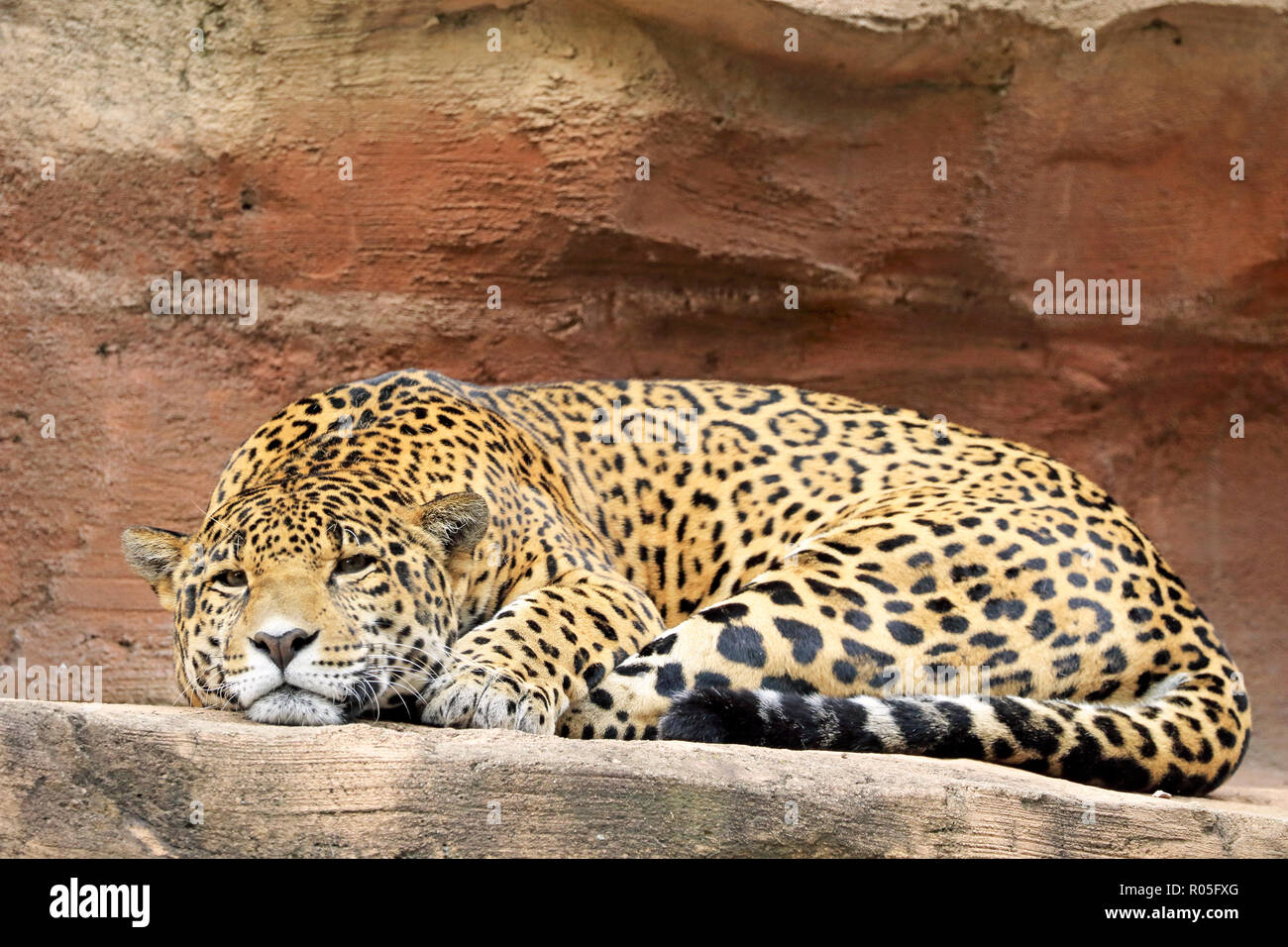 Jaguar, Panthera onca Stock Photohttps://www.alamy.com/image-license-details/?v=1https://www.alamy.com/jaguar-panthera-onca-image223857048.html
Jaguar, Panthera onca Stock Photohttps://www.alamy.com/image-license-details/?v=1https://www.alamy.com/jaguar-panthera-onca-image223857048.htmlRMR05FXG–Jaguar, Panthera onca
 Indo-Pacific Humpback Dolphin / Chinese White Dolphin / Pink Dolphin (Sousa Chinensis) in the waters of Hong Kong, near a broken fishing net Stock Photohttps://www.alamy.com/image-license-details/?v=1https://www.alamy.com/indo-pacific-humpback-dolphin-chinese-white-dolphin-pink-dolphin-sousa-chinensis-in-the-waters-of-hong-kong-near-a-broken-fishing-net-image337590481.html
Indo-Pacific Humpback Dolphin / Chinese White Dolphin / Pink Dolphin (Sousa Chinensis) in the waters of Hong Kong, near a broken fishing net Stock Photohttps://www.alamy.com/image-license-details/?v=1https://www.alamy.com/indo-pacific-humpback-dolphin-chinese-white-dolphin-pink-dolphin-sousa-chinensis-in-the-waters-of-hong-kong-near-a-broken-fishing-net-image337590481.htmlRF2AH6G2W–Indo-Pacific Humpback Dolphin / Chinese White Dolphin / Pink Dolphin (Sousa Chinensis) in the waters of Hong Kong, near a broken fishing net
 White Rhinoceros (ceratotherium simum) also called Square-Lipped Rhinoceros Stock Photohttps://www.alamy.com/image-license-details/?v=1https://www.alamy.com/stock-photo-white-rhinoceros-ceratotherium-simum-also-called-square-lipped-rhinoceros-16562449.html
White Rhinoceros (ceratotherium simum) also called Square-Lipped Rhinoceros Stock Photohttps://www.alamy.com/image-license-details/?v=1https://www.alamy.com/stock-photo-white-rhinoceros-ceratotherium-simum-also-called-square-lipped-rhinoceros-16562449.htmlRFAWF3JX–White Rhinoceros (ceratotherium simum) also called Square-Lipped Rhinoceros
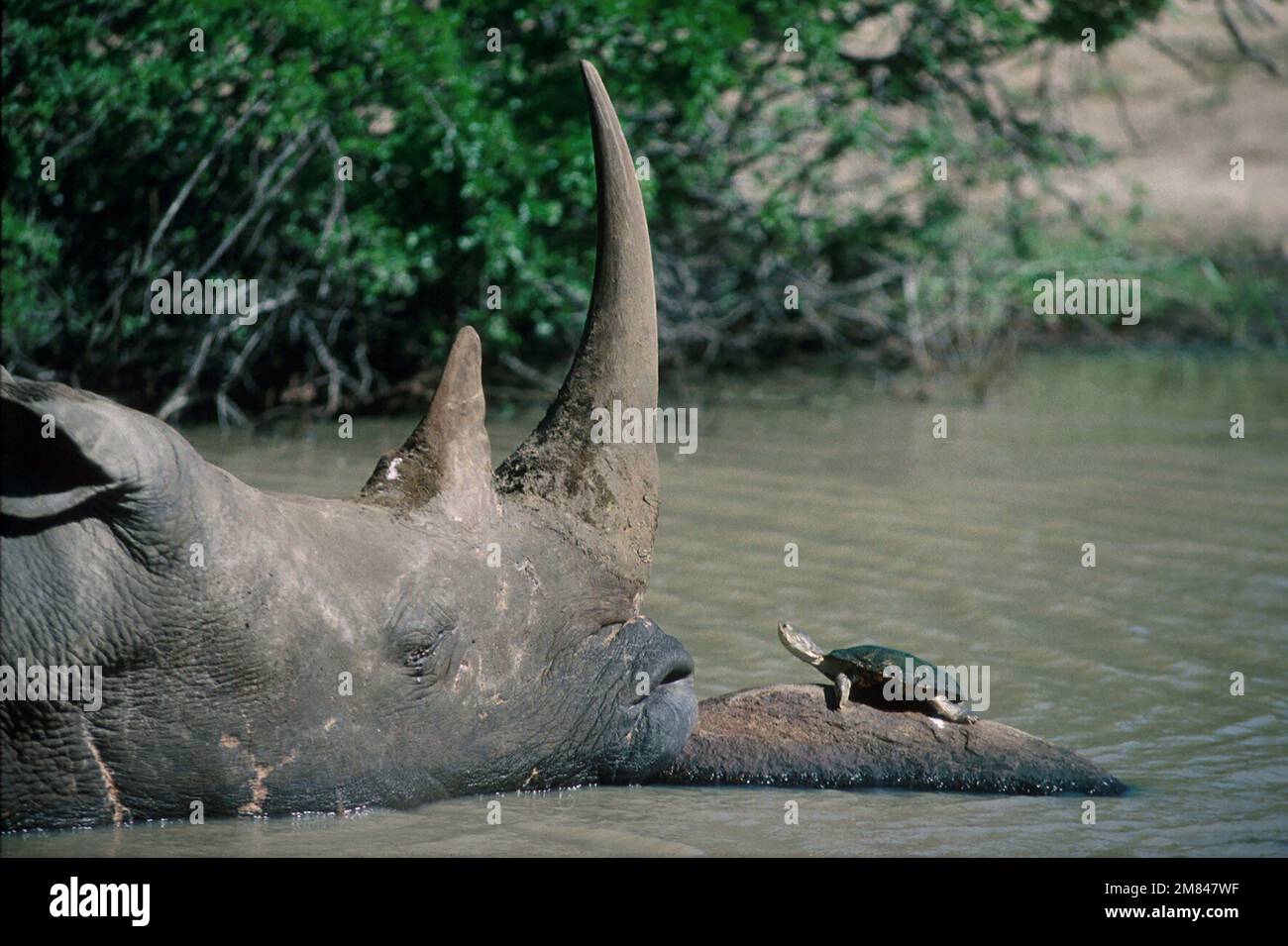 White Rhinoceros (Ceratotherium simum), classified as Near Threatened, with African Helmeted Turtle (Pelomedusa subrufa) on rock in waterhole Stock Photohttps://www.alamy.com/image-license-details/?v=1https://www.alamy.com/white-rhinoceros-ceratotherium-simum-classified-as-near-threatened-with-african-helmeted-turtle-pelomedusa-subrufa-on-rock-in-waterhole-image504111931.html
White Rhinoceros (Ceratotherium simum), classified as Near Threatened, with African Helmeted Turtle (Pelomedusa subrufa) on rock in waterhole Stock Photohttps://www.alamy.com/image-license-details/?v=1https://www.alamy.com/white-rhinoceros-ceratotherium-simum-classified-as-near-threatened-with-african-helmeted-turtle-pelomedusa-subrufa-on-rock-in-waterhole-image504111931.htmlRM2M847WF–White Rhinoceros (Ceratotherium simum), classified as Near Threatened, with African Helmeted Turtle (Pelomedusa subrufa) on rock in waterhole
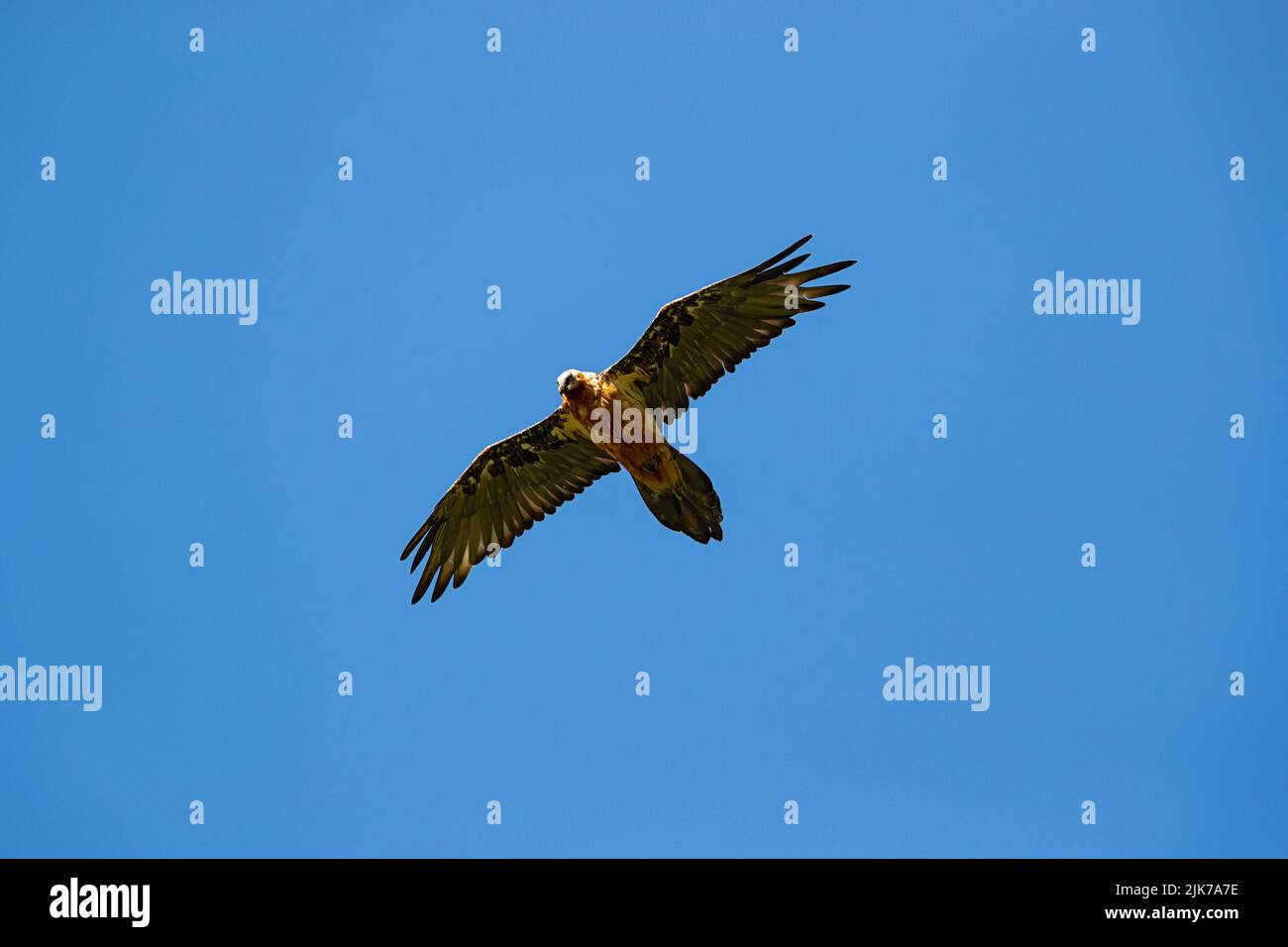 An adult Bearded Vultures or Lammergeier (Gypaetus barbatus) circeling at the blue sky above the photographer Stock Photohttps://www.alamy.com/image-license-details/?v=1https://www.alamy.com/an-adult-bearded-vultures-or-lammergeier-gypaetus-barbatus-circeling-at-the-blue-sky-above-the-photographer-image476520114.html
An adult Bearded Vultures or Lammergeier (Gypaetus barbatus) circeling at the blue sky above the photographer Stock Photohttps://www.alamy.com/image-license-details/?v=1https://www.alamy.com/an-adult-bearded-vultures-or-lammergeier-gypaetus-barbatus-circeling-at-the-blue-sky-above-the-photographer-image476520114.htmlRM2JK7A7E–An adult Bearded Vultures or Lammergeier (Gypaetus barbatus) circeling at the blue sky above the photographer
 Red Kite Milvus milvus In Flight Against A Blue Sky Stock Photohttps://www.alamy.com/image-license-details/?v=1https://www.alamy.com/stock-photo-red-kite-milvus-milvus-in-flight-against-a-blue-sky-29036169.html
Red Kite Milvus milvus In Flight Against A Blue Sky Stock Photohttps://www.alamy.com/image-license-details/?v=1https://www.alamy.com/stock-photo-red-kite-milvus-milvus-in-flight-against-a-blue-sky-29036169.htmlRMBK6KX1–Red Kite Milvus milvus In Flight Against A Blue Sky
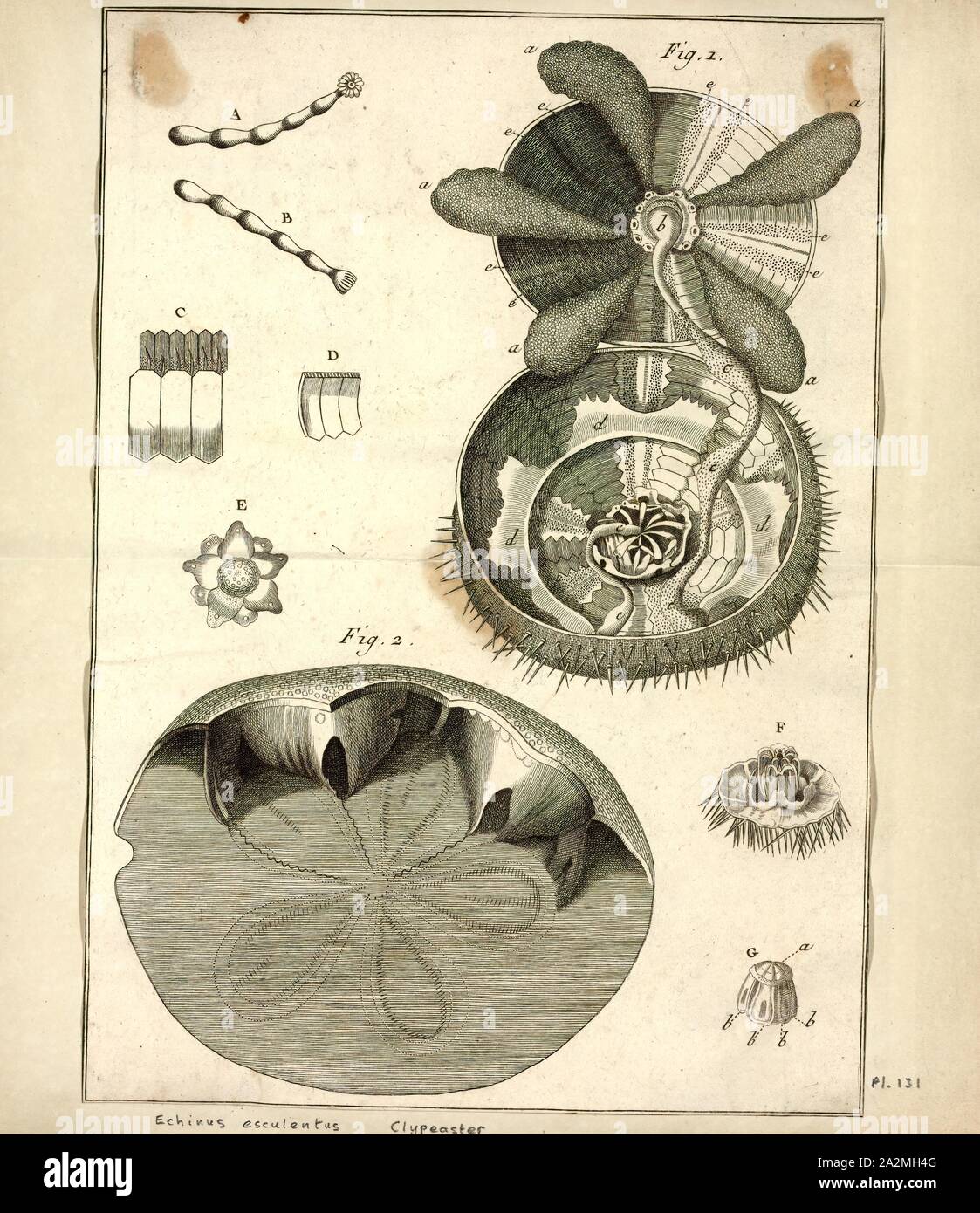 Echinus esculentus, Print, Echinus esculentus, the European edible sea urchin or common sea urchin, is a species of marine invertebrate in the Echinidae family. It is found in coastal areas of western Europe down to a depth of 1, 200 m (3, 900 ft). It is considered 'Near threatened' in the IUCN Red List of Threatened Species Stock Photohttps://www.alamy.com/image-license-details/?v=1https://www.alamy.com/echinus-esculentus-print-echinus-esculentus-the-european-edible-sea-urchin-or-common-sea-urchin-is-a-species-of-marine-invertebrate-in-the-echinidae-family-it-is-found-in-coastal-areas-of-western-europe-down-to-a-depth-of-1-200-m-3-900-ft-it-is-considered-near-threatened-in-the-iucn-red-list-of-threatened-species-image328678800.html
Echinus esculentus, Print, Echinus esculentus, the European edible sea urchin or common sea urchin, is a species of marine invertebrate in the Echinidae family. It is found in coastal areas of western Europe down to a depth of 1, 200 m (3, 900 ft). It is considered 'Near threatened' in the IUCN Red List of Threatened Species Stock Photohttps://www.alamy.com/image-license-details/?v=1https://www.alamy.com/echinus-esculentus-print-echinus-esculentus-the-european-edible-sea-urchin-or-common-sea-urchin-is-a-species-of-marine-invertebrate-in-the-echinidae-family-it-is-found-in-coastal-areas-of-western-europe-down-to-a-depth-of-1-200-m-3-900-ft-it-is-considered-near-threatened-in-the-iucn-red-list-of-threatened-species-image328678800.htmlRM2A2MH4G–Echinus esculentus, Print, Echinus esculentus, the European edible sea urchin or common sea urchin, is a species of marine invertebrate in the Echinidae family. It is found in coastal areas of western Europe down to a depth of 1, 200 m (3, 900 ft). It is considered 'Near threatened' in the IUCN Red List of Threatened Species
 Curlew in the breeding season with beak open and calling on a Yorkshire Grouse moor in Summer. Scientific name: Numenius Arquata. Facing left. Blur Stock Photohttps://www.alamy.com/image-license-details/?v=1https://www.alamy.com/curlew-in-the-breeding-season-with-beak-open-and-calling-on-a-yorkshire-grouse-moor-in-summer-scientific-name-numenius-arquata-facing-left-blur-image454112872.html
Curlew in the breeding season with beak open and calling on a Yorkshire Grouse moor in Summer. Scientific name: Numenius Arquata. Facing left. Blur Stock Photohttps://www.alamy.com/image-license-details/?v=1https://www.alamy.com/curlew-in-the-breeding-season-with-beak-open-and-calling-on-a-yorkshire-grouse-moor-in-summer-scientific-name-numenius-arquata-facing-left-blur-image454112872.htmlRF2HAPHGT–Curlew in the breeding season with beak open and calling on a Yorkshire Grouse moor in Summer. Scientific name: Numenius Arquata. Facing left. Blur
 Nairobi, Madagascar. 21st Oct, 2022. A lemur is seen near Antananarivo, Madagascar, Oct. 21, 2022. Many species of lemurs are listed on the International Union for Conservation of Nature (IUCN) Red List of Threatened Species and are in danger of extinction due to habitat destruction and illegal hunting in recent years. Credit: Iako Randrianarivelo/Xinhua/Alamy Live News Stock Photohttps://www.alamy.com/image-license-details/?v=1https://www.alamy.com/nairobi-madagascar-21st-oct-2022-a-lemur-is-seen-near-antananarivo-madagascar-oct-21-2022-many-species-of-lemurs-are-listed-on-the-international-union-for-conservation-of-nature-iucn-red-list-of-threatened-species-and-are-in-danger-of-extinction-due-to-habitat-destruction-and-illegal-hunting-in-recent-years-credit-iako-randrianariveloxinhuaalamy-live-news-image487759456.html
Nairobi, Madagascar. 21st Oct, 2022. A lemur is seen near Antananarivo, Madagascar, Oct. 21, 2022. Many species of lemurs are listed on the International Union for Conservation of Nature (IUCN) Red List of Threatened Species and are in danger of extinction due to habitat destruction and illegal hunting in recent years. Credit: Iako Randrianarivelo/Xinhua/Alamy Live News Stock Photohttps://www.alamy.com/image-license-details/?v=1https://www.alamy.com/nairobi-madagascar-21st-oct-2022-a-lemur-is-seen-near-antananarivo-madagascar-oct-21-2022-many-species-of-lemurs-are-listed-on-the-international-union-for-conservation-of-nature-iucn-red-list-of-threatened-species-and-are-in-danger-of-extinction-due-to-habitat-destruction-and-illegal-hunting-in-recent-years-credit-iako-randrianariveloxinhuaalamy-live-news-image487759456.htmlRM2K9FA4G–Nairobi, Madagascar. 21st Oct, 2022. A lemur is seen near Antananarivo, Madagascar, Oct. 21, 2022. Many species of lemurs are listed on the International Union for Conservation of Nature (IUCN) Red List of Threatened Species and are in danger of extinction due to habitat destruction and illegal hunting in recent years. Credit: Iako Randrianarivelo/Xinhua/Alamy Live News
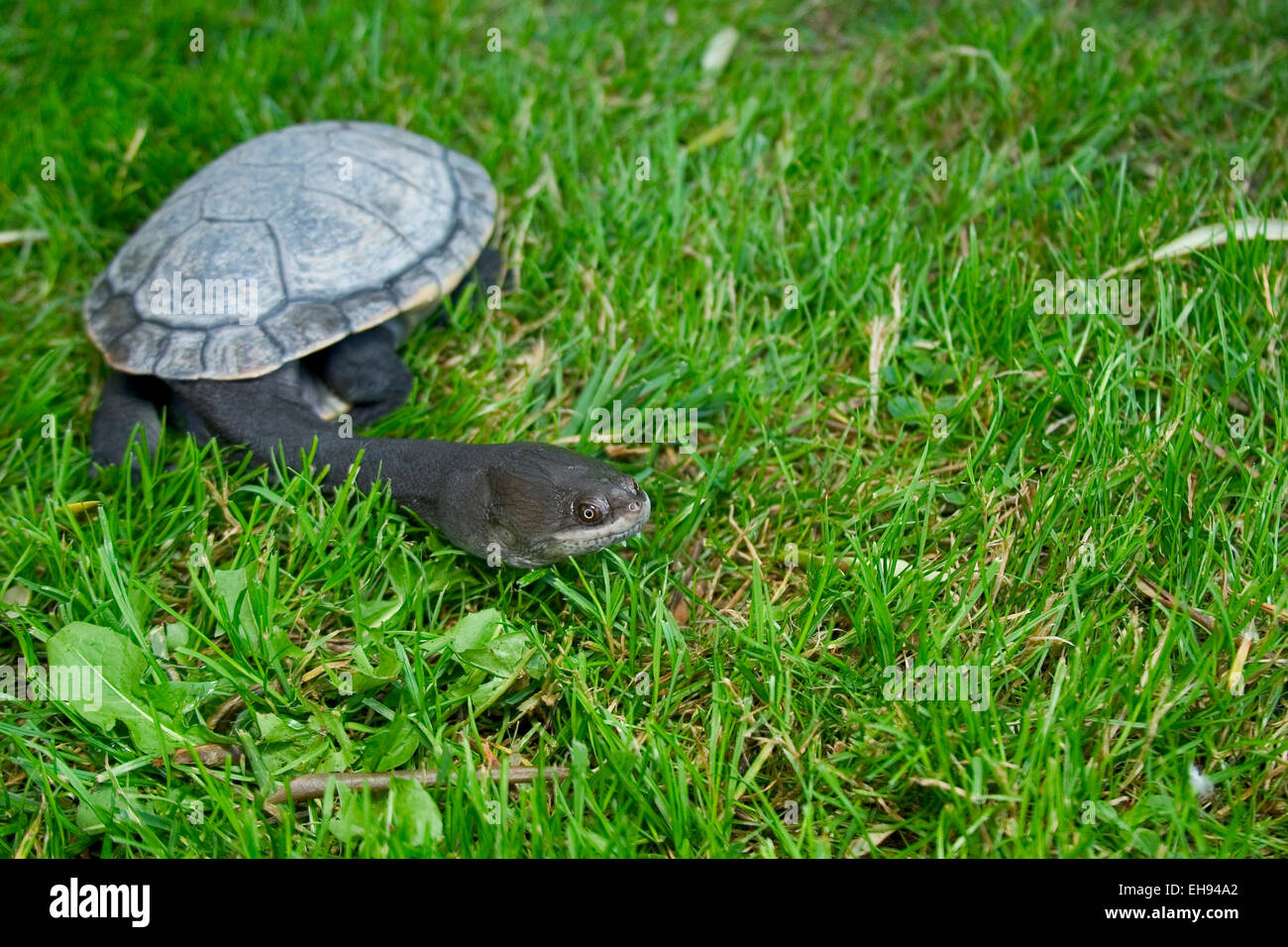 Captive Northern Snake-neck Turtle (Chelodina oblonga) Stock Photohttps://www.alamy.com/image-license-details/?v=1https://www.alamy.com/stock-photo-captive-northern-snake-neck-turtle-chelodina-oblonga-79491610.html
Captive Northern Snake-neck Turtle (Chelodina oblonga) Stock Photohttps://www.alamy.com/image-license-details/?v=1https://www.alamy.com/stock-photo-captive-northern-snake-neck-turtle-chelodina-oblonga-79491610.htmlRMEH94A2–Captive Northern Snake-neck Turtle (Chelodina oblonga)
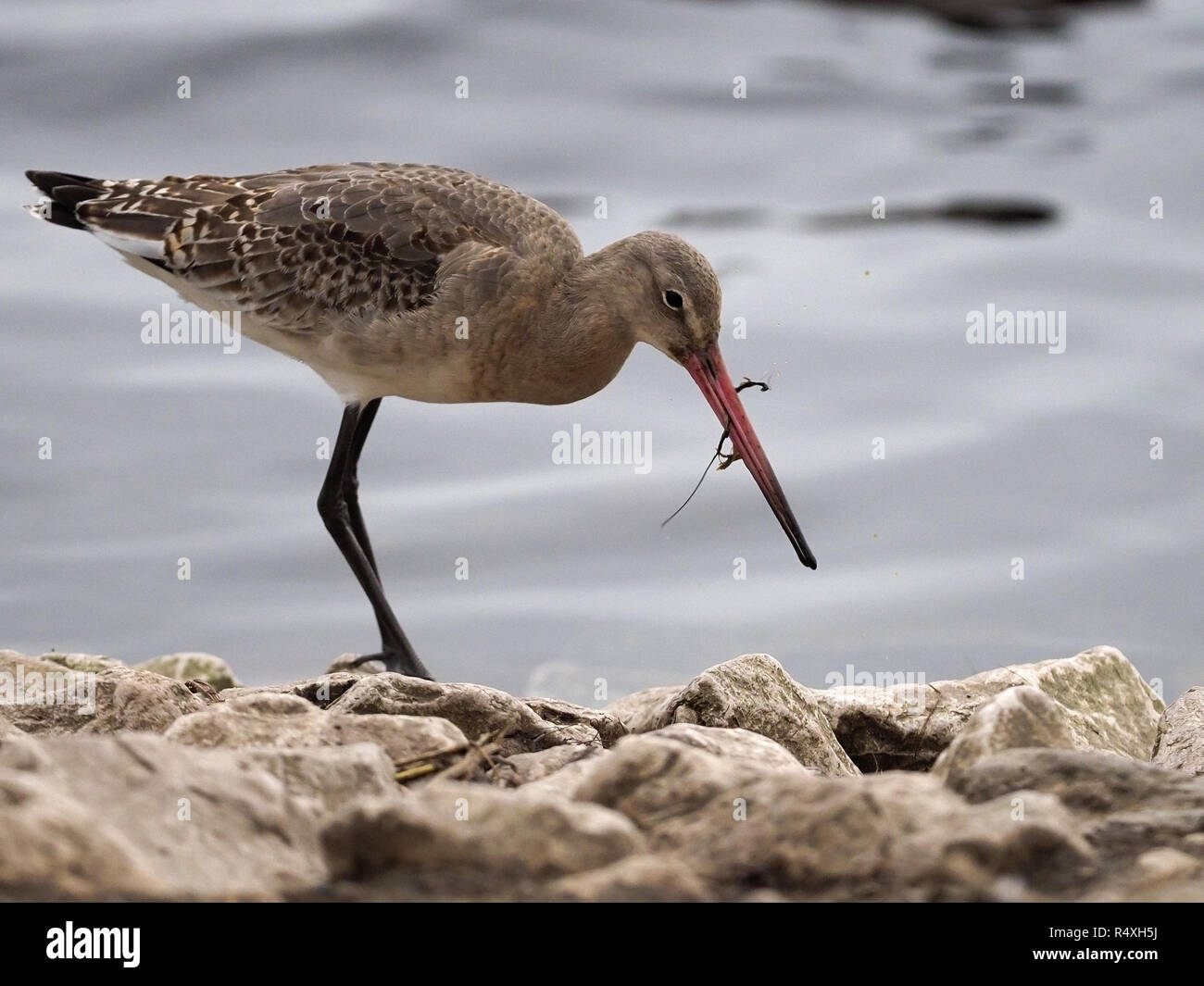 Black-tailed Godwit.Scientific name: Limosa limosa The Black-tailed Godwit is a rare breeding bird in the UK that has suffered from dramatic declines. Classified in the UK as Red under the Birds of Conservation Concern 4: the Red List for Birds (2015). Protected in the UK under the Wildlife and Countryside Act, 1981. Priority Species under the UK Post-2010 Biodiversity Framework. Listed as Near Threatened on the global IUCN Red List of Threatened Species.the Black-tailed Godwit breeds in wet grasslands, and winters on coastal estuaries and marshes, and at inland shallow waters. A sociable bird Stock Photohttps://www.alamy.com/image-license-details/?v=1https://www.alamy.com/black-tailed-godwitscientific-name-limosa-limosa-the-black-tailed-godwit-is-a-rare-breeding-bird-in-the-uk-that-has-suffered-from-dramatic-declines-classified-in-the-uk-as-red-under-the-birds-of-conservation-concern-4-the-red-list-for-birds-2015-protected-in-the-uk-under-the-wildlife-and-countryside-act-1981-priority-species-under-the-uk-post-2010-biodiversity-framework-listed-as-near-threatened-on-the-global-iucn-red-list-of-threatened-speciesthe-black-tailed-godwit-breeds-in-wet-grasslands-and-winters-on-coastal-estuaries-and-marshes-and-at-inland-shallow-waters-a-sociable-bird-image226777646.html
Black-tailed Godwit.Scientific name: Limosa limosa The Black-tailed Godwit is a rare breeding bird in the UK that has suffered from dramatic declines. Classified in the UK as Red under the Birds of Conservation Concern 4: the Red List for Birds (2015). Protected in the UK under the Wildlife and Countryside Act, 1981. Priority Species under the UK Post-2010 Biodiversity Framework. Listed as Near Threatened on the global IUCN Red List of Threatened Species.the Black-tailed Godwit breeds in wet grasslands, and winters on coastal estuaries and marshes, and at inland shallow waters. A sociable bird Stock Photohttps://www.alamy.com/image-license-details/?v=1https://www.alamy.com/black-tailed-godwitscientific-name-limosa-limosa-the-black-tailed-godwit-is-a-rare-breeding-bird-in-the-uk-that-has-suffered-from-dramatic-declines-classified-in-the-uk-as-red-under-the-birds-of-conservation-concern-4-the-red-list-for-birds-2015-protected-in-the-uk-under-the-wildlife-and-countryside-act-1981-priority-species-under-the-uk-post-2010-biodiversity-framework-listed-as-near-threatened-on-the-global-iucn-red-list-of-threatened-speciesthe-black-tailed-godwit-breeds-in-wet-grasslands-and-winters-on-coastal-estuaries-and-marshes-and-at-inland-shallow-waters-a-sociable-bird-image226777646.htmlRMR4XH5J–Black-tailed Godwit.Scientific name: Limosa limosa The Black-tailed Godwit is a rare breeding bird in the UK that has suffered from dramatic declines. Classified in the UK as Red under the Birds of Conservation Concern 4: the Red List for Birds (2015). Protected in the UK under the Wildlife and Countryside Act, 1981. Priority Species under the UK Post-2010 Biodiversity Framework. Listed as Near Threatened on the global IUCN Red List of Threatened Species.the Black-tailed Godwit breeds in wet grasslands, and winters on coastal estuaries and marshes, and at inland shallow waters. A sociable bird
 Himalayan vulture, Gyps himalayensis, Chopta, Uttarakhand, India. Near Threatened on the IUCN Red List. Stock Photohttps://www.alamy.com/image-license-details/?v=1https://www.alamy.com/himalayan-vulture-gyps-himalayensis-chopta-uttarakhand-india-near-threatened-on-the-iucn-red-list-image470648436.html
Himalayan vulture, Gyps himalayensis, Chopta, Uttarakhand, India. Near Threatened on the IUCN Red List. Stock Photohttps://www.alamy.com/image-license-details/?v=1https://www.alamy.com/himalayan-vulture-gyps-himalayensis-chopta-uttarakhand-india-near-threatened-on-the-iucn-red-list-image470648436.htmlRF2J9KTTM–Himalayan vulture, Gyps himalayensis, Chopta, Uttarakhand, India. Near Threatened on the IUCN Red List.
 This bluespotted stingray (Taeniura lymma: 35 cms.) swam along the reef, with the undulations of its body which are typical of rays. Egyptian Red Sea. Stock Photohttps://www.alamy.com/image-license-details/?v=1https://www.alamy.com/stock-photo-this-bluespotted-stingray-taeniura-lymma-35-cms-swam-along-the-reef-133621233.html
This bluespotted stingray (Taeniura lymma: 35 cms.) swam along the reef, with the undulations of its body which are typical of rays. Egyptian Red Sea. Stock Photohttps://www.alamy.com/image-license-details/?v=1https://www.alamy.com/stock-photo-this-bluespotted-stingray-taeniura-lymma-35-cms-swam-along-the-reef-133621233.htmlRFHNAY6W–This bluespotted stingray (Taeniura lymma: 35 cms.) swam along the reef, with the undulations of its body which are typical of rays. Egyptian Red Sea.
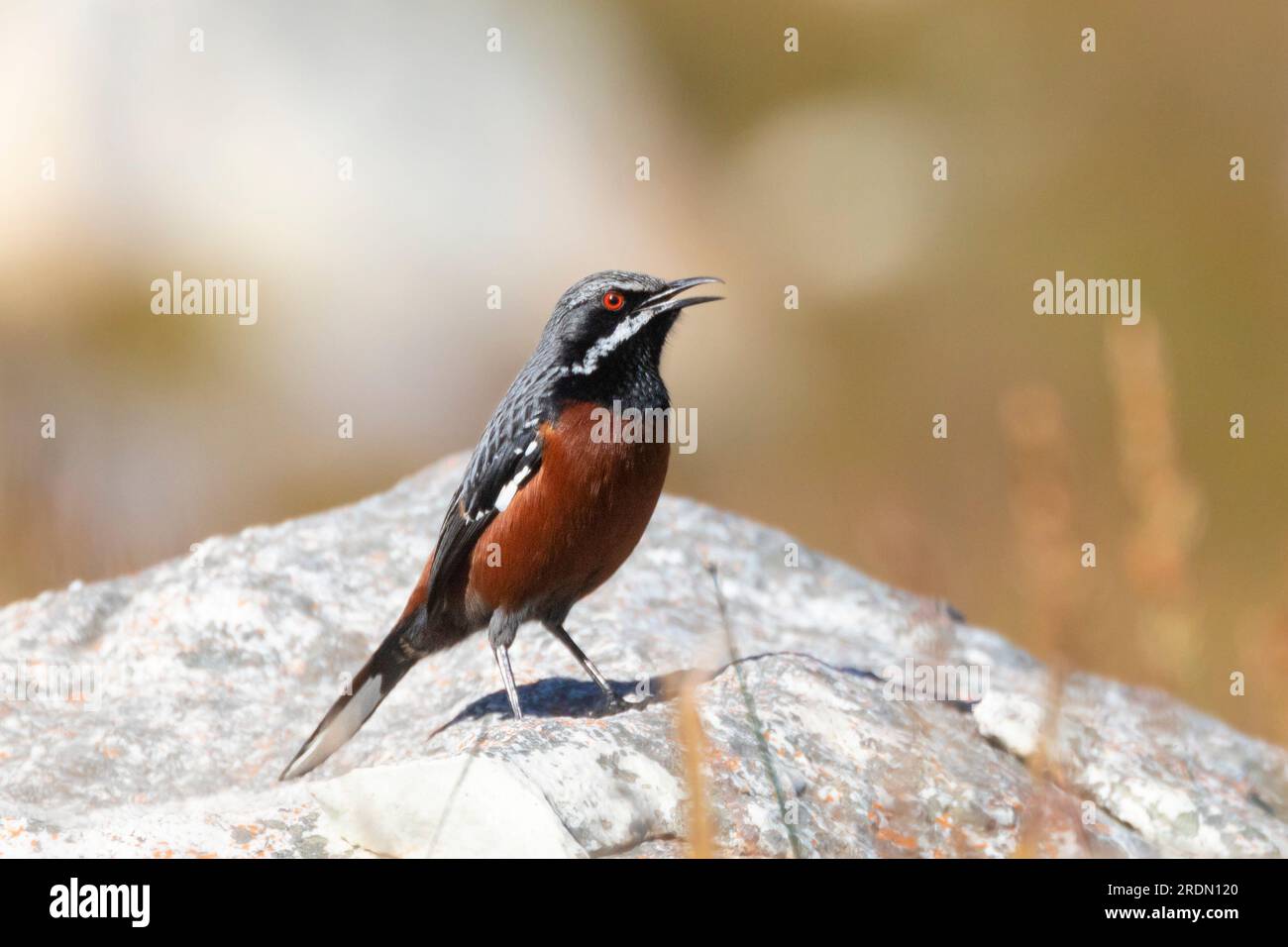 Male Cape Rockjumper (Chaetops frenatus), Rooiels, Rooi Els, Rooi-els, Western Cape South Africa. A Near Threatened endemic Fynbos species Stock Photohttps://www.alamy.com/image-license-details/?v=1https://www.alamy.com/male-cape-rockjumper-chaetops-frenatus-rooiels-rooi-els-rooi-els-western-cape-south-africa-a-near-threatened-endemic-fynbos-species-image559184136.html
Male Cape Rockjumper (Chaetops frenatus), Rooiels, Rooi Els, Rooi-els, Western Cape South Africa. A Near Threatened endemic Fynbos species Stock Photohttps://www.alamy.com/image-license-details/?v=1https://www.alamy.com/male-cape-rockjumper-chaetops-frenatus-rooiels-rooi-els-rooi-els-western-cape-south-africa-a-near-threatened-endemic-fynbos-species-image559184136.htmlRM2RDN120–Male Cape Rockjumper (Chaetops frenatus), Rooiels, Rooi Els, Rooi-els, Western Cape South Africa. A Near Threatened endemic Fynbos species
 Fiordland Crested Penguin - Eudyptes pachyrhynchus - close-up portrait of its head in profile showing large orange beak and yellow stripe above eye. Stock Photohttps://www.alamy.com/image-license-details/?v=1https://www.alamy.com/fiordland-crested-penguin-eudyptes-pachyrhynchus-close-up-portrait-of-its-head-in-profile-showing-large-orange-beak-and-yellow-stripe-above-eye-image568158447.html
Fiordland Crested Penguin - Eudyptes pachyrhynchus - close-up portrait of its head in profile showing large orange beak and yellow stripe above eye. Stock Photohttps://www.alamy.com/image-license-details/?v=1https://www.alamy.com/fiordland-crested-penguin-eudyptes-pachyrhynchus-close-up-portrait-of-its-head-in-profile-showing-large-orange-beak-and-yellow-stripe-above-eye-image568158447.htmlRM2T09RW3–Fiordland Crested Penguin - Eudyptes pachyrhynchus - close-up portrait of its head in profile showing large orange beak and yellow stripe above eye.
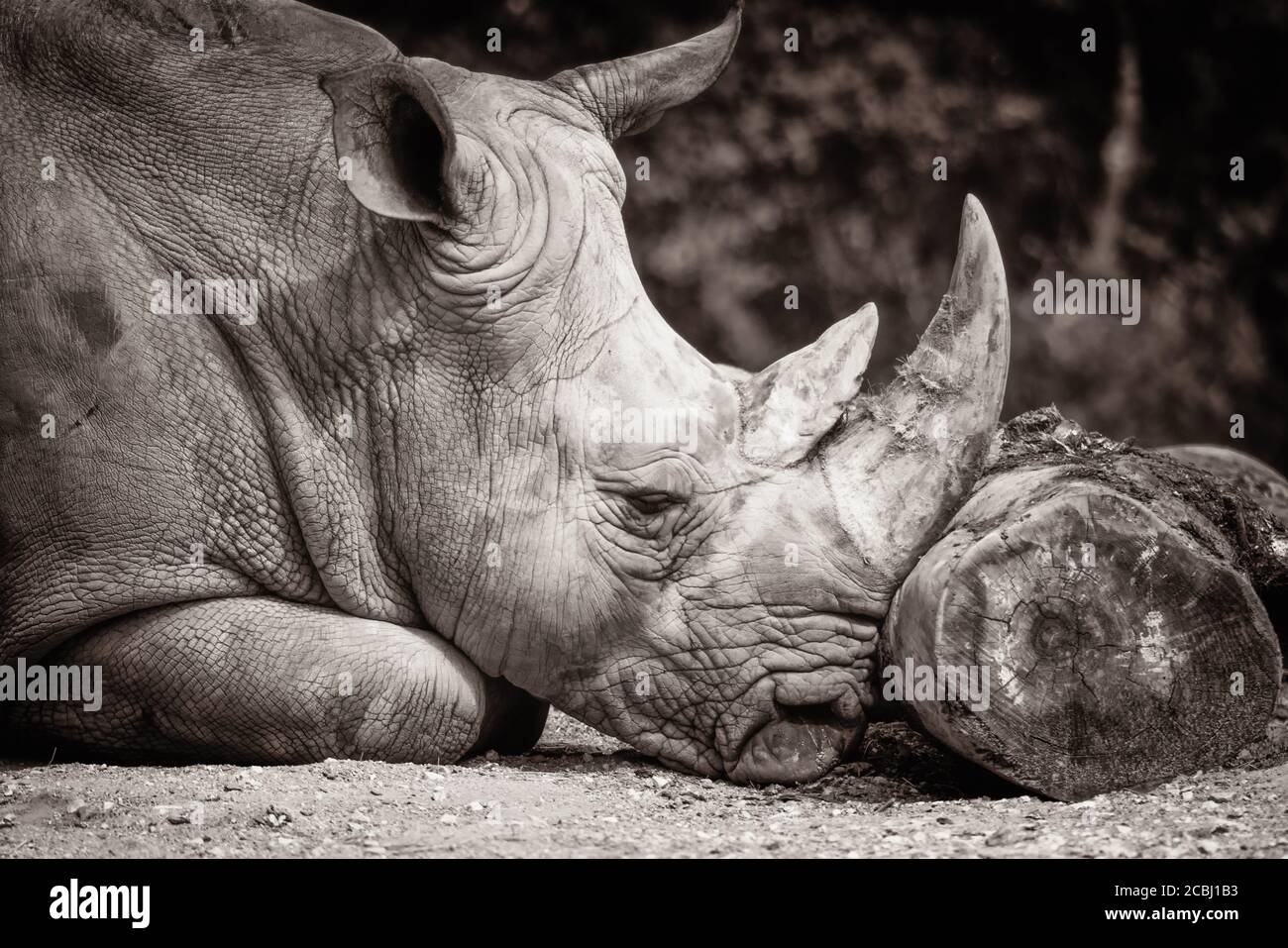 A Southern White Rhino is leans towards a trunk to take a nap. Stock Photohttps://www.alamy.com/image-license-details/?v=1https://www.alamy.com/a-southern-white-rhino-is-leans-towards-a-trunk-to-take-a-nap-image368575175.html
A Southern White Rhino is leans towards a trunk to take a nap. Stock Photohttps://www.alamy.com/image-license-details/?v=1https://www.alamy.com/a-southern-white-rhino-is-leans-towards-a-trunk-to-take-a-nap-image368575175.htmlRM2CBJ1B3–A Southern White Rhino is leans towards a trunk to take a nap.
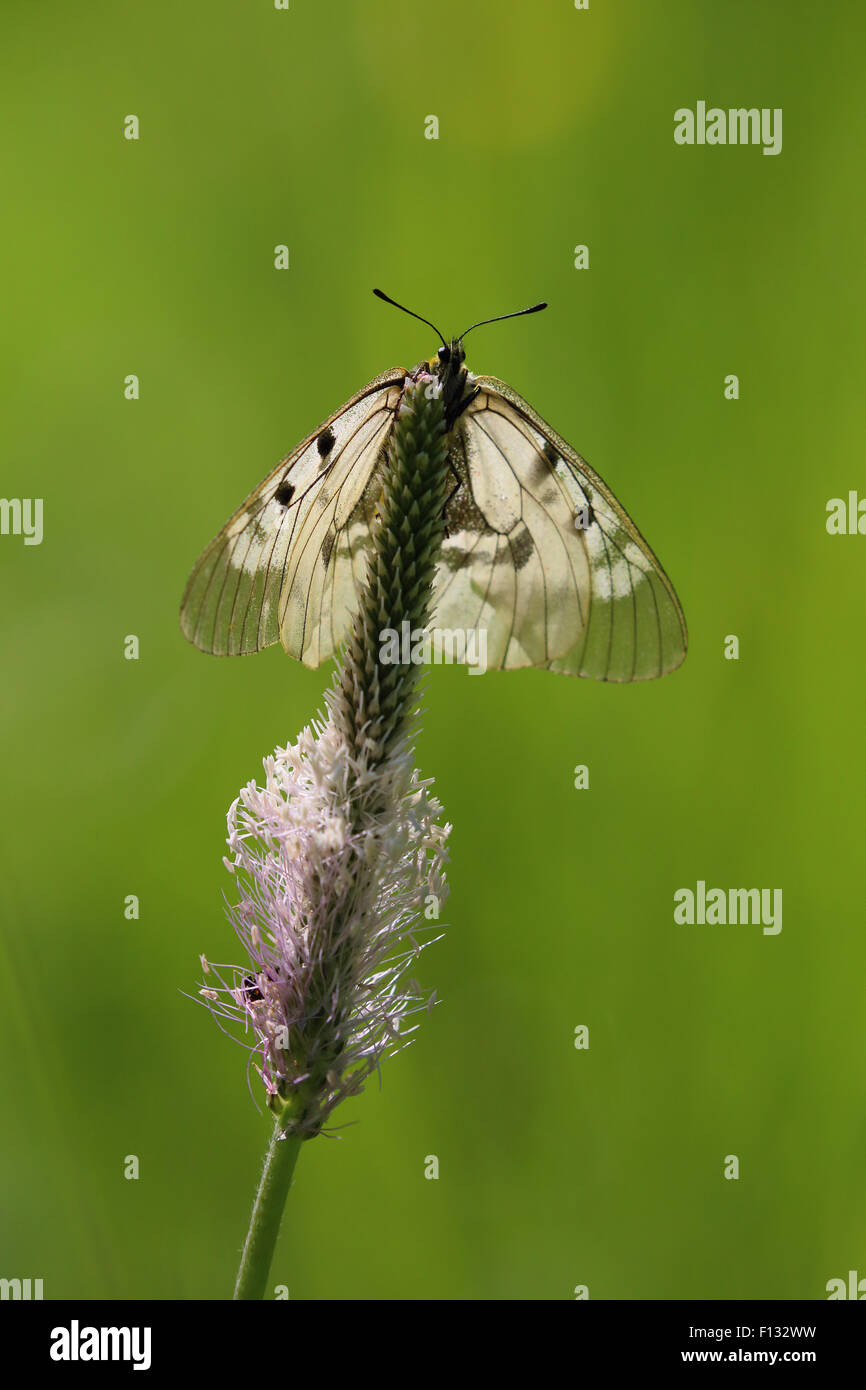 Clouded Apollo (Parnassius mnemosyne). The species is listed as NT (Near Threatened) in the IUCN global red list. Stock Photohttps://www.alamy.com/image-license-details/?v=1https://www.alamy.com/stock-photo-clouded-apollo-parnassius-mnemosyne-the-species-is-listed-as-nt-near-86734645.html
Clouded Apollo (Parnassius mnemosyne). The species is listed as NT (Near Threatened) in the IUCN global red list. Stock Photohttps://www.alamy.com/image-license-details/?v=1https://www.alamy.com/stock-photo-clouded-apollo-parnassius-mnemosyne-the-species-is-listed-as-nt-near-86734645.htmlRMF132WW–Clouded Apollo (Parnassius mnemosyne). The species is listed as NT (Near Threatened) in the IUCN global red list.
 221028 -- NAIROBI, Oct. 28, 2022 -- A lemur is seen near Antananarivo, Madagascar, Oct. 21, 2022. Many species of lemurs are listed on the International Union for Conservation of Nature IUCN Red List of Threatened Species and are in danger of extinction due to habitat destruction and illegal hunting in recent years. Photo by /Xinhua MADAGASCAR-LEMUR IakoxRandrianarivelo PUBLICATIONxNOTxINxCHN Stock Photohttps://www.alamy.com/image-license-details/?v=1https://www.alamy.com/221028-nairobi-oct-28-2022-a-lemur-is-seen-near-antananarivo-madagascar-oct-21-2022-many-species-of-lemurs-are-listed-on-the-international-union-for-conservation-of-nature-iucn-red-list-of-threatened-species-and-are-in-danger-of-extinction-due-to-habitat-destruction-and-illegal-hunting-in-recent-years-photo-by-xinhua-madagascar-lemur-iakoxrandrianarivelo-publicationxnotxinxchn-image565320424.html
221028 -- NAIROBI, Oct. 28, 2022 -- A lemur is seen near Antananarivo, Madagascar, Oct. 21, 2022. Many species of lemurs are listed on the International Union for Conservation of Nature IUCN Red List of Threatened Species and are in danger of extinction due to habitat destruction and illegal hunting in recent years. Photo by /Xinhua MADAGASCAR-LEMUR IakoxRandrianarivelo PUBLICATIONxNOTxINxCHN Stock Photohttps://www.alamy.com/image-license-details/?v=1https://www.alamy.com/221028-nairobi-oct-28-2022-a-lemur-is-seen-near-antananarivo-madagascar-oct-21-2022-many-species-of-lemurs-are-listed-on-the-international-union-for-conservation-of-nature-iucn-red-list-of-threatened-species-and-are-in-danger-of-extinction-due-to-habitat-destruction-and-illegal-hunting-in-recent-years-photo-by-xinhua-madagascar-lemur-iakoxrandrianarivelo-publicationxnotxinxchn-image565320424.htmlRM2RRMFY4–221028 -- NAIROBI, Oct. 28, 2022 -- A lemur is seen near Antananarivo, Madagascar, Oct. 21, 2022. Many species of lemurs are listed on the International Union for Conservation of Nature IUCN Red List of Threatened Species and are in danger of extinction due to habitat destruction and illegal hunting in recent years. Photo by /Xinhua MADAGASCAR-LEMUR IakoxRandrianarivelo PUBLICATIONxNOTxINxCHN
 The Himalayan goral (Naemorhedus goral) is a bovid species that occur in the Himalayas from Pakistan, Nepal, Bhutan, southern Tibet, and the states of Sikkim and Arunachal Pradesh in India to western Myanmar. It is listed as Near Threatened on the IUCN Red List and CITES Appendix I because the population is thought to be declining significantly due to habitat loss and poaching for meat. Gorals are extremely difficult to spot because their camouflage is extremely effective, along with the fact that they lie motionless and can Stand at the vertical edge of a rock cliff. A Himalayan Goral and faw Stock Photohttps://www.alamy.com/image-license-details/?v=1https://www.alamy.com/the-himalayan-goral-naemorhedus-goral-is-a-bovid-species-that-occur-in-the-himalayas-from-pakistan-nepal-bhutan-southern-tibet-and-the-states-of-sikkim-and-arunachal-pradesh-in-india-to-western-myanmar-it-is-listed-as-near-threatened-on-the-iucn-red-list-and-cites-appendix-i-because-the-population-is-thought-to-be-declining-significantly-due-to-habitat-loss-and-poaching-for-meat-gorals-are-extremely-difficult-to-spot-because-their-camouflage-is-extremely-effective-along-with-the-fact-that-they-lie-motionless-and-can-stand-at-the-vertical-edge-of-a-rock-cliff-a-himalayan-goral-and-faw-image490170146.html
The Himalayan goral (Naemorhedus goral) is a bovid species that occur in the Himalayas from Pakistan, Nepal, Bhutan, southern Tibet, and the states of Sikkim and Arunachal Pradesh in India to western Myanmar. It is listed as Near Threatened on the IUCN Red List and CITES Appendix I because the population is thought to be declining significantly due to habitat loss and poaching for meat. Gorals are extremely difficult to spot because their camouflage is extremely effective, along with the fact that they lie motionless and can Stand at the vertical edge of a rock cliff. A Himalayan Goral and faw Stock Photohttps://www.alamy.com/image-license-details/?v=1https://www.alamy.com/the-himalayan-goral-naemorhedus-goral-is-a-bovid-species-that-occur-in-the-himalayas-from-pakistan-nepal-bhutan-southern-tibet-and-the-states-of-sikkim-and-arunachal-pradesh-in-india-to-western-myanmar-it-is-listed-as-near-threatened-on-the-iucn-red-list-and-cites-appendix-i-because-the-population-is-thought-to-be-declining-significantly-due-to-habitat-loss-and-poaching-for-meat-gorals-are-extremely-difficult-to-spot-because-their-camouflage-is-extremely-effective-along-with-the-fact-that-they-lie-motionless-and-can-stand-at-the-vertical-edge-of-a-rock-cliff-a-himalayan-goral-and-faw-image490170146.htmlRM2KDD50J–The Himalayan goral (Naemorhedus goral) is a bovid species that occur in the Himalayas from Pakistan, Nepal, Bhutan, southern Tibet, and the states of Sikkim and Arunachal Pradesh in India to western Myanmar. It is listed as Near Threatened on the IUCN Red List and CITES Appendix I because the population is thought to be declining significantly due to habitat loss and poaching for meat. Gorals are extremely difficult to spot because their camouflage is extremely effective, along with the fact that they lie motionless and can Stand at the vertical edge of a rock cliff. A Himalayan Goral and faw
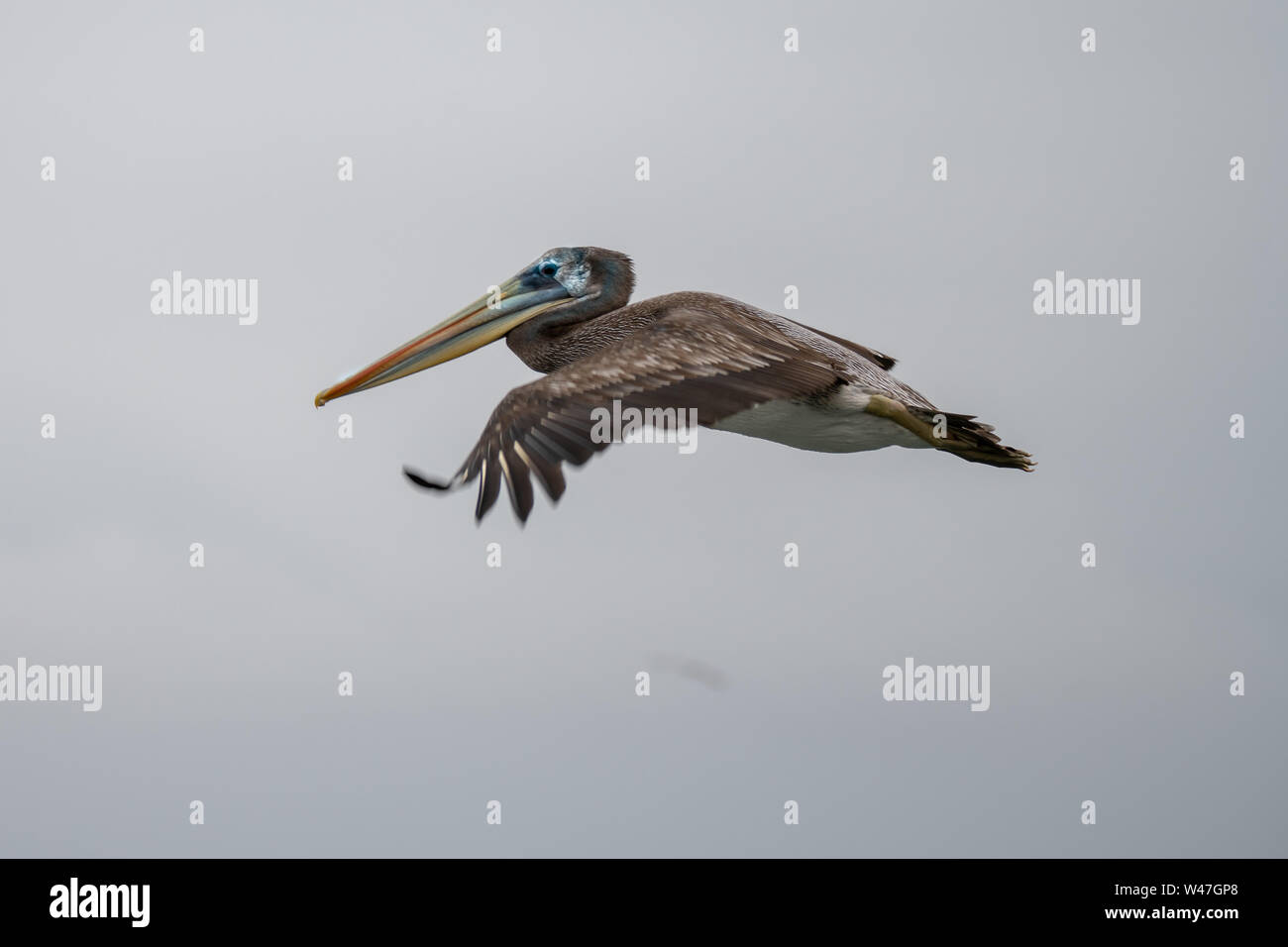 Peruvian Pelican (Pelecanus thagus) in Flight in the Ballestas Islands, Peru Stock Photohttps://www.alamy.com/image-license-details/?v=1https://www.alamy.com/peruvian-pelican-pelecanus-thagus-in-flight-in-the-ballestas-islands-peru-image260780976.html
Peruvian Pelican (Pelecanus thagus) in Flight in the Ballestas Islands, Peru Stock Photohttps://www.alamy.com/image-license-details/?v=1https://www.alamy.com/peruvian-pelican-pelecanus-thagus-in-flight-in-the-ballestas-islands-peru-image260780976.htmlRFW47GP8–Peruvian Pelican (Pelecanus thagus) in Flight in the Ballestas Islands, Peru
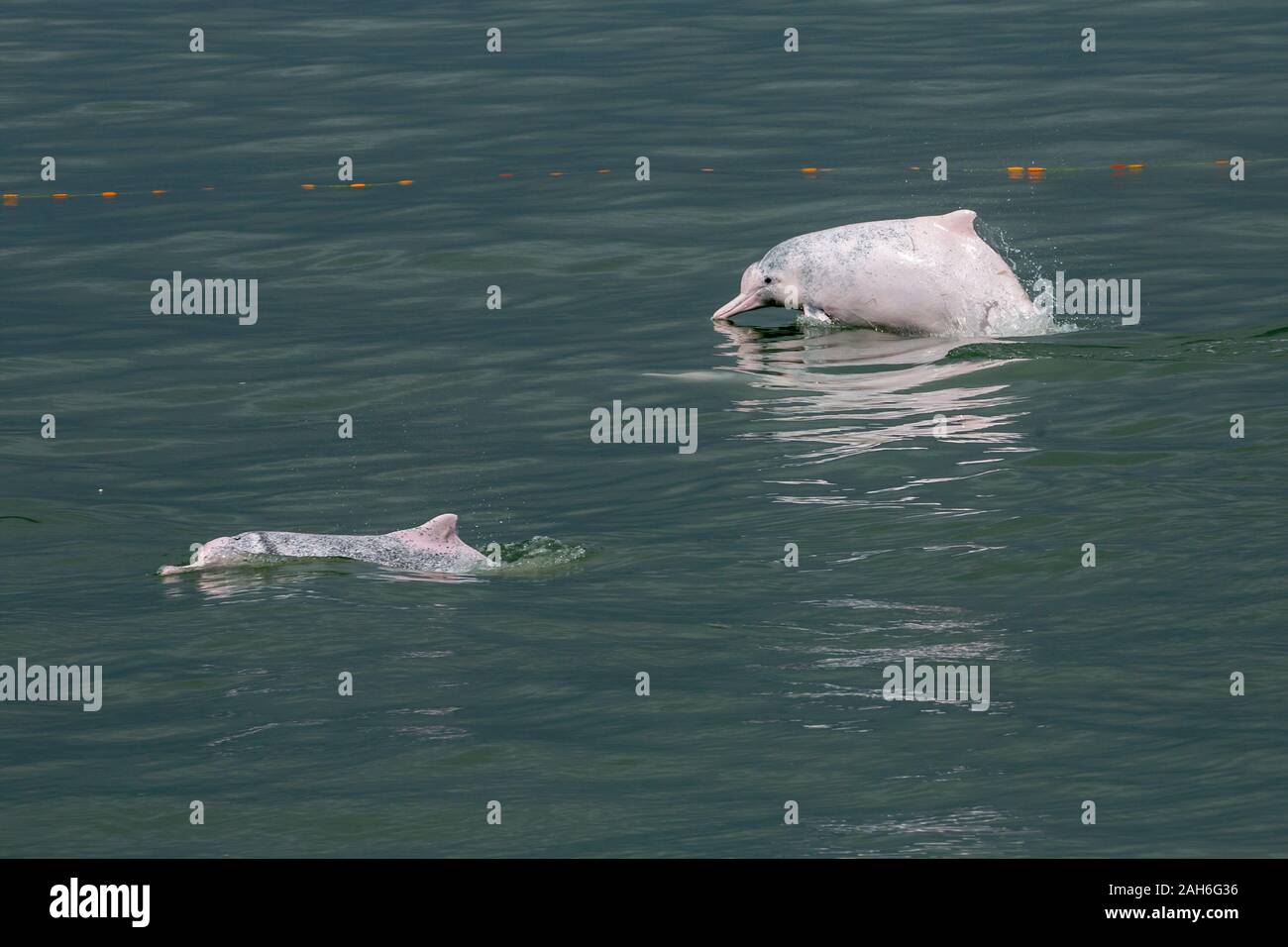 Indo-Pacific Humpback Dolphin / Chinese White Dolphin / Pink Dolphin (Sousa Chinensis) in the waters of Hong Kong, near a broken fishing net Stock Photohttps://www.alamy.com/image-license-details/?v=1https://www.alamy.com/indo-pacific-humpback-dolphin-chinese-white-dolphin-pink-dolphin-sousa-chinensis-in-the-waters-of-hong-kong-near-a-broken-fishing-net-image337590490.html
Indo-Pacific Humpback Dolphin / Chinese White Dolphin / Pink Dolphin (Sousa Chinensis) in the waters of Hong Kong, near a broken fishing net Stock Photohttps://www.alamy.com/image-license-details/?v=1https://www.alamy.com/indo-pacific-humpback-dolphin-chinese-white-dolphin-pink-dolphin-sousa-chinensis-in-the-waters-of-hong-kong-near-a-broken-fishing-net-image337590490.htmlRF2AH6G36–Indo-Pacific Humpback Dolphin / Chinese White Dolphin / Pink Dolphin (Sousa Chinensis) in the waters of Hong Kong, near a broken fishing net
 Kori Bustard (ardeotis kori struthiunculus) Stock Photohttps://www.alamy.com/image-license-details/?v=1https://www.alamy.com/stock-photo-kori-bustard-ardeotis-kori-struthiunculus-16563396.html
Kori Bustard (ardeotis kori struthiunculus) Stock Photohttps://www.alamy.com/image-license-details/?v=1https://www.alamy.com/stock-photo-kori-bustard-ardeotis-kori-struthiunculus-16563396.htmlRFAWF6DW–Kori Bustard (ardeotis kori struthiunculus)
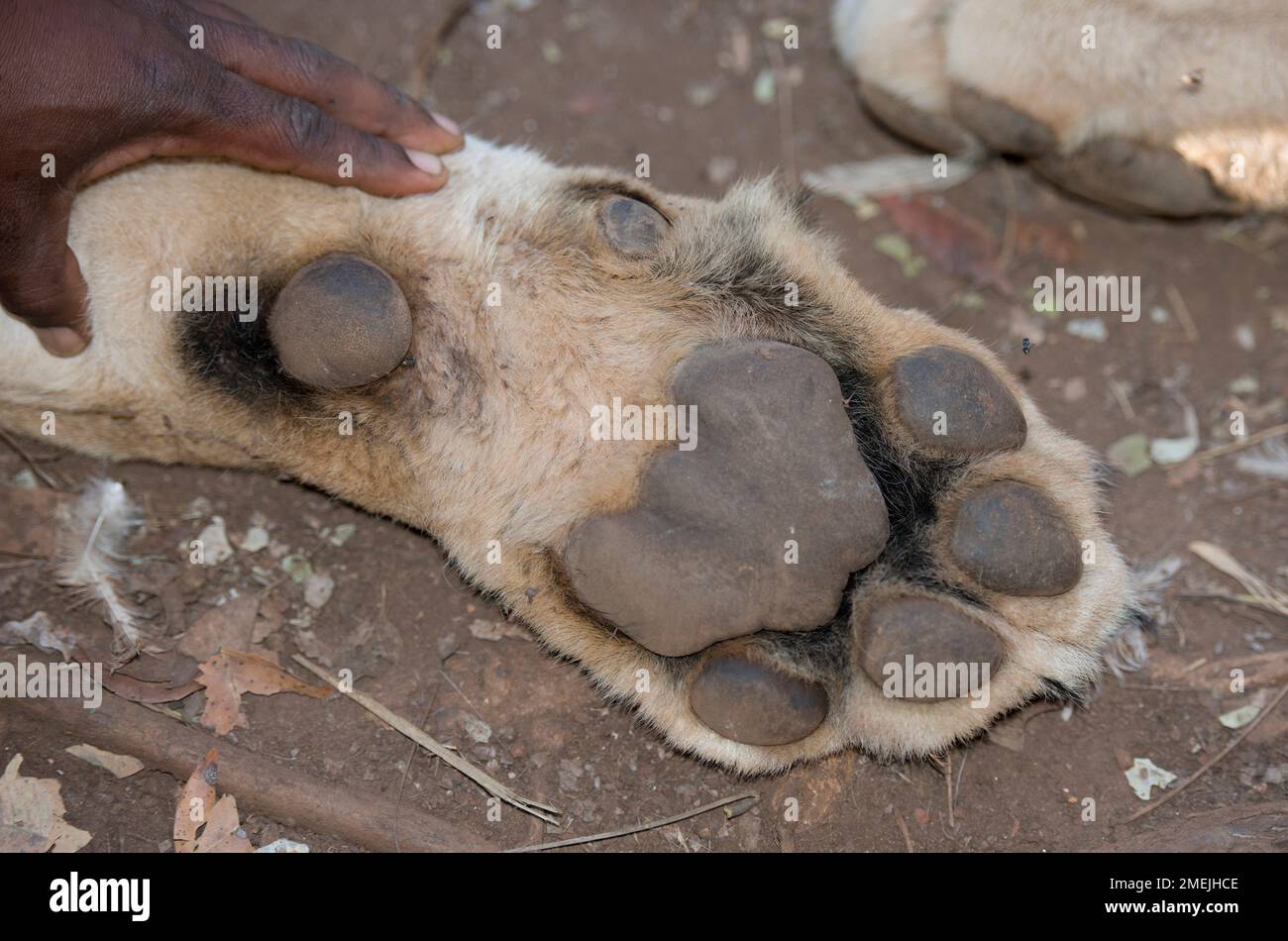 Lion (Panthera leo) with man's hand on paw, Tzaneen Lion and Predator Park, near Tzaneen, Tzaneen district, Limpopo province, South Africa Stock Photohttps://www.alamy.com/image-license-details/?v=1https://www.alamy.com/lion-panthera-leo-with-mans-hand-on-paw-tzaneen-lion-and-predator-park-near-tzaneen-tzaneen-district-limpopo-province-south-africa-image508114670.html
Lion (Panthera leo) with man's hand on paw, Tzaneen Lion and Predator Park, near Tzaneen, Tzaneen district, Limpopo province, South Africa Stock Photohttps://www.alamy.com/image-license-details/?v=1https://www.alamy.com/lion-panthera-leo-with-mans-hand-on-paw-tzaneen-lion-and-predator-park-near-tzaneen-tzaneen-district-limpopo-province-south-africa-image508114670.htmlRM2MEJHCE–Lion (Panthera leo) with man's hand on paw, Tzaneen Lion and Predator Park, near Tzaneen, Tzaneen district, Limpopo province, South Africa
 An adult Bearded Vultures or Lammergeier (Gypaetus barbatus) flying along the mountain ridge searching for food Stock Photohttps://www.alamy.com/image-license-details/?v=1https://www.alamy.com/an-adult-bearded-vultures-or-lammergeier-gypaetus-barbatus-flying-along-the-mountain-ridge-searching-for-food-image476520168.html
An adult Bearded Vultures or Lammergeier (Gypaetus barbatus) flying along the mountain ridge searching for food Stock Photohttps://www.alamy.com/image-license-details/?v=1https://www.alamy.com/an-adult-bearded-vultures-or-lammergeier-gypaetus-barbatus-flying-along-the-mountain-ridge-searching-for-food-image476520168.htmlRM2JK7A9C–An adult Bearded Vultures or Lammergeier (Gypaetus barbatus) flying along the mountain ridge searching for food
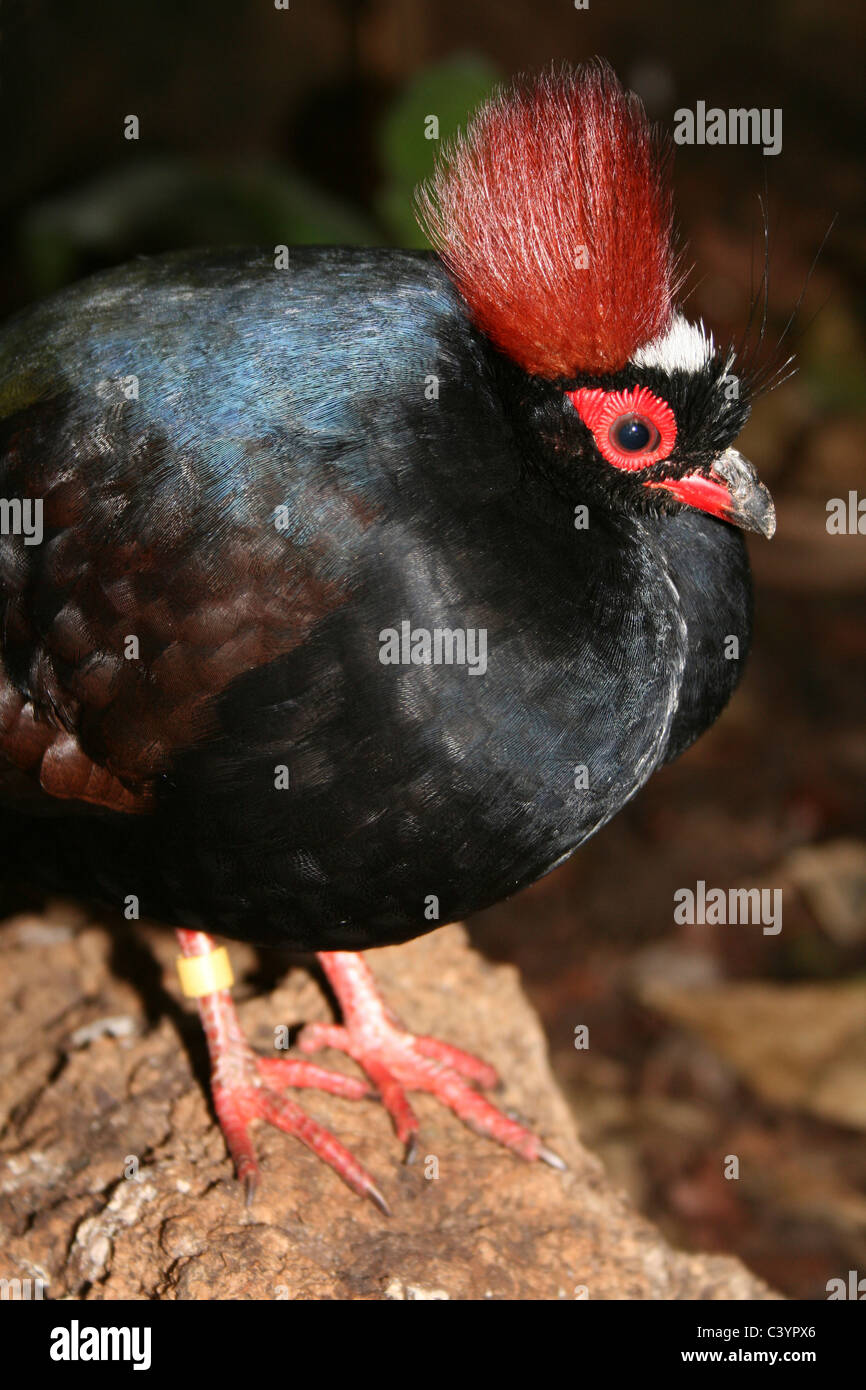 Portrait Of A Male Crested Wood Partridge Rollulus rouloul a.k.a. Crested Partridge, Roul-roul, Red-crowned Wood Partridge Stock Photohttps://www.alamy.com/image-license-details/?v=1https://www.alamy.com/stock-photo-portrait-of-a-male-crested-wood-partridge-rollulus-rouloul-aka-crested-36875390.html
Portrait Of A Male Crested Wood Partridge Rollulus rouloul a.k.a. Crested Partridge, Roul-roul, Red-crowned Wood Partridge Stock Photohttps://www.alamy.com/image-license-details/?v=1https://www.alamy.com/stock-photo-portrait-of-a-male-crested-wood-partridge-rollulus-rouloul-aka-crested-36875390.htmlRMC3YPX6–Portrait Of A Male Crested Wood Partridge Rollulus rouloul a.k.a. Crested Partridge, Roul-roul, Red-crowned Wood Partridge
 Echinus esculentus, Print, Echinus esculentus, the European edible sea urchin or common sea urchin, is a species of marine invertebrate in the Echinidae family. It is found in coastal areas of western Europe down to a depth of 1, 200 m (3, 900 ft). It is considered 'Near threatened' in the IUCN Red List of Threatened Species Stock Photohttps://www.alamy.com/image-license-details/?v=1https://www.alamy.com/echinus-esculentus-print-echinus-esculentus-the-european-edible-sea-urchin-or-common-sea-urchin-is-a-species-of-marine-invertebrate-in-the-echinidae-family-it-is-found-in-coastal-areas-of-western-europe-down-to-a-depth-of-1-200-m-3-900-ft-it-is-considered-near-threatened-in-the-iucn-red-list-of-threatened-species-image328678801.html
Echinus esculentus, Print, Echinus esculentus, the European edible sea urchin or common sea urchin, is a species of marine invertebrate in the Echinidae family. It is found in coastal areas of western Europe down to a depth of 1, 200 m (3, 900 ft). It is considered 'Near threatened' in the IUCN Red List of Threatened Species Stock Photohttps://www.alamy.com/image-license-details/?v=1https://www.alamy.com/echinus-esculentus-print-echinus-esculentus-the-european-edible-sea-urchin-or-common-sea-urchin-is-a-species-of-marine-invertebrate-in-the-echinidae-family-it-is-found-in-coastal-areas-of-western-europe-down-to-a-depth-of-1-200-m-3-900-ft-it-is-considered-near-threatened-in-the-iucn-red-list-of-threatened-species-image328678801.htmlRM2A2MH4H–Echinus esculentus, Print, Echinus esculentus, the European edible sea urchin or common sea urchin, is a species of marine invertebrate in the Echinidae family. It is found in coastal areas of western Europe down to a depth of 1, 200 m (3, 900 ft). It is considered 'Near threatened' in the IUCN Red List of Threatened Species
 Curlew calling with beak open on natural grousemoor habitat during the nesting season. Close up. Scientific name: Numenius Arquata. Facing right. Stock Photohttps://www.alamy.com/image-license-details/?v=1https://www.alamy.com/curlew-calling-with-beak-open-on-natural-grousemoor-habitat-during-the-nesting-season-close-up-scientific-name-numenius-arquata-facing-right-image463081323.html
Curlew calling with beak open on natural grousemoor habitat during the nesting season. Close up. Scientific name: Numenius Arquata. Facing right. Stock Photohttps://www.alamy.com/image-license-details/?v=1https://www.alamy.com/curlew-calling-with-beak-open-on-natural-grousemoor-habitat-during-the-nesting-season-close-up-scientific-name-numenius-arquata-facing-right-image463081323.htmlRF2HWB4XK–Curlew calling with beak open on natural grousemoor habitat during the nesting season. Close up. Scientific name: Numenius Arquata. Facing right.
 Nairobi, Madagascar. 21st Oct, 2022. A lemur is seen near Antananarivo, Madagascar, Oct. 21, 2022. Many species of lemurs are listed on the International Union for Conservation of Nature (IUCN) Red List of Threatened Species and are in danger of extinction due to habitat destruction and illegal hunting in recent years. Credit: Iako Randrianarivelo/Xinhua/Alamy Live News Stock Photohttps://www.alamy.com/image-license-details/?v=1https://www.alamy.com/nairobi-madagascar-21st-oct-2022-a-lemur-is-seen-near-antananarivo-madagascar-oct-21-2022-many-species-of-lemurs-are-listed-on-the-international-union-for-conservation-of-nature-iucn-red-list-of-threatened-species-and-are-in-danger-of-extinction-due-to-habitat-destruction-and-illegal-hunting-in-recent-years-credit-iako-randrianariveloxinhuaalamy-live-news-image487759144.html
Nairobi, Madagascar. 21st Oct, 2022. A lemur is seen near Antananarivo, Madagascar, Oct. 21, 2022. Many species of lemurs are listed on the International Union for Conservation of Nature (IUCN) Red List of Threatened Species and are in danger of extinction due to habitat destruction and illegal hunting in recent years. Credit: Iako Randrianarivelo/Xinhua/Alamy Live News Stock Photohttps://www.alamy.com/image-license-details/?v=1https://www.alamy.com/nairobi-madagascar-21st-oct-2022-a-lemur-is-seen-near-antananarivo-madagascar-oct-21-2022-many-species-of-lemurs-are-listed-on-the-international-union-for-conservation-of-nature-iucn-red-list-of-threatened-species-and-are-in-danger-of-extinction-due-to-habitat-destruction-and-illegal-hunting-in-recent-years-credit-iako-randrianariveloxinhuaalamy-live-news-image487759144.htmlRM2K9F9NC–Nairobi, Madagascar. 21st Oct, 2022. A lemur is seen near Antananarivo, Madagascar, Oct. 21, 2022. Many species of lemurs are listed on the International Union for Conservation of Nature (IUCN) Red List of Threatened Species and are in danger of extinction due to habitat destruction and illegal hunting in recent years. Credit: Iako Randrianarivelo/Xinhua/Alamy Live News
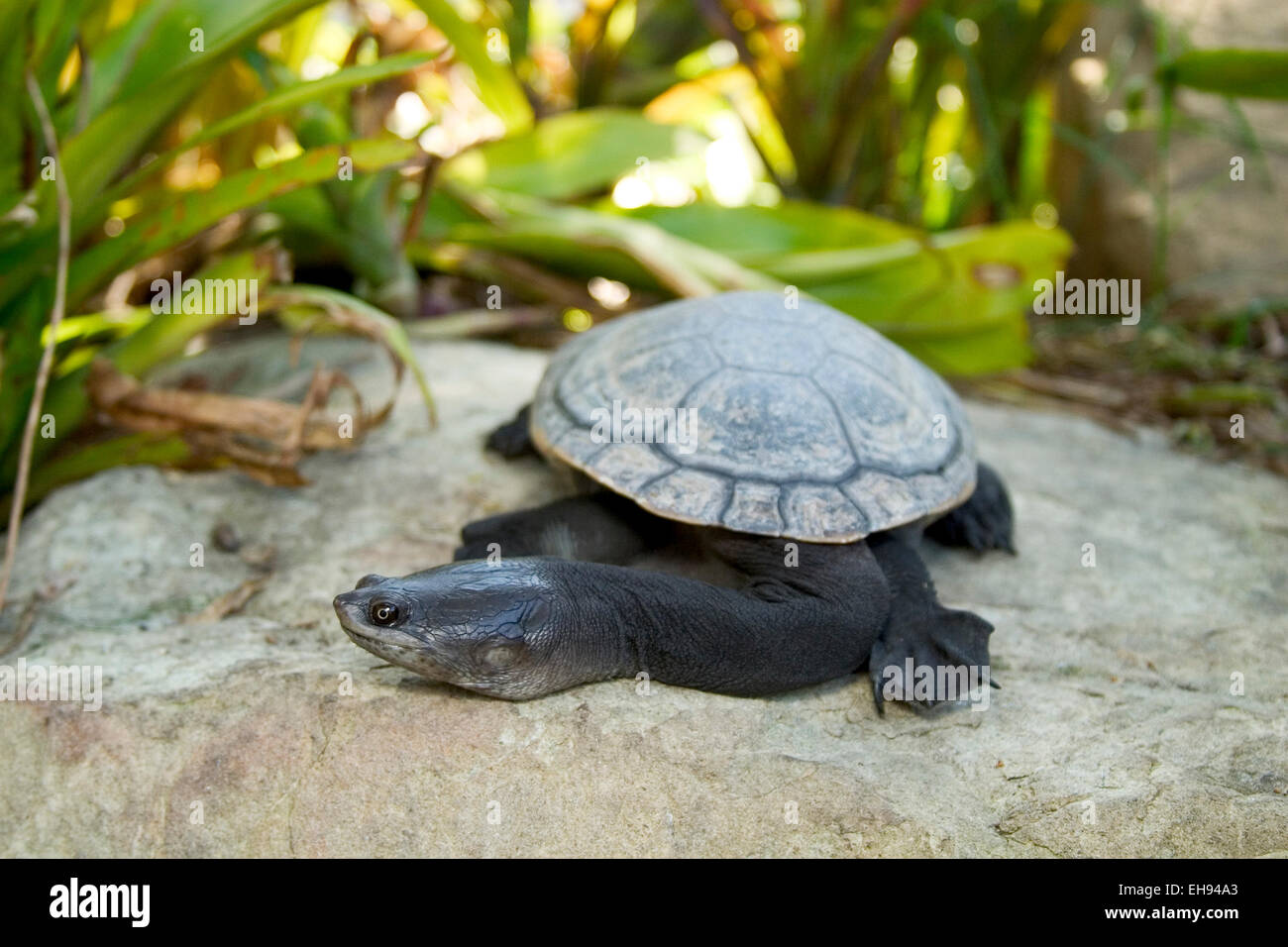 Captive Northern Snake-neck Turtle (Chelodina oblonga) Stock Photohttps://www.alamy.com/image-license-details/?v=1https://www.alamy.com/stock-photo-captive-northern-snake-neck-turtle-chelodina-oblonga-79491611.html
Captive Northern Snake-neck Turtle (Chelodina oblonga) Stock Photohttps://www.alamy.com/image-license-details/?v=1https://www.alamy.com/stock-photo-captive-northern-snake-neck-turtle-chelodina-oblonga-79491611.htmlRMEH94A3–Captive Northern Snake-neck Turtle (Chelodina oblonga)
 Black-tailed Godwit.Scientific name: Limosa limosa The Black-tailed Godwit is a rare breeding bird in the UK that has suffered from dramatic declines. Classified in the UK as Red under the Birds of Conservation Concern 4: the Red List for Birds (2015). Protected in the UK under the Wildlife and Countryside Act, 1981. Priority Species under the UK Post-2010 Biodiversity Framework. Listed as Near Threatened on the global IUCN Red List of Threatened Species.the Black-tailed Godwit breeds in wet grasslands, and winters on coastal estuaries and marshes, and at inland shallow waters. A sociable bird Stock Photohttps://www.alamy.com/image-license-details/?v=1https://www.alamy.com/black-tailed-godwitscientific-name-limosa-limosa-the-black-tailed-godwit-is-a-rare-breeding-bird-in-the-uk-that-has-suffered-from-dramatic-declines-classified-in-the-uk-as-red-under-the-birds-of-conservation-concern-4-the-red-list-for-birds-2015-protected-in-the-uk-under-the-wildlife-and-countryside-act-1981-priority-species-under-the-uk-post-2010-biodiversity-framework-listed-as-near-threatened-on-the-global-iucn-red-list-of-threatened-speciesthe-black-tailed-godwit-breeds-in-wet-grasslands-and-winters-on-coastal-estuaries-and-marshes-and-at-inland-shallow-waters-a-sociable-bird-image226777622.html
Black-tailed Godwit.Scientific name: Limosa limosa The Black-tailed Godwit is a rare breeding bird in the UK that has suffered from dramatic declines. Classified in the UK as Red under the Birds of Conservation Concern 4: the Red List for Birds (2015). Protected in the UK under the Wildlife and Countryside Act, 1981. Priority Species under the UK Post-2010 Biodiversity Framework. Listed as Near Threatened on the global IUCN Red List of Threatened Species.the Black-tailed Godwit breeds in wet grasslands, and winters on coastal estuaries and marshes, and at inland shallow waters. A sociable bird Stock Photohttps://www.alamy.com/image-license-details/?v=1https://www.alamy.com/black-tailed-godwitscientific-name-limosa-limosa-the-black-tailed-godwit-is-a-rare-breeding-bird-in-the-uk-that-has-suffered-from-dramatic-declines-classified-in-the-uk-as-red-under-the-birds-of-conservation-concern-4-the-red-list-for-birds-2015-protected-in-the-uk-under-the-wildlife-and-countryside-act-1981-priority-species-under-the-uk-post-2010-biodiversity-framework-listed-as-near-threatened-on-the-global-iucn-red-list-of-threatened-speciesthe-black-tailed-godwit-breeds-in-wet-grasslands-and-winters-on-coastal-estuaries-and-marshes-and-at-inland-shallow-waters-a-sociable-bird-image226777622.htmlRMR4XH4P–Black-tailed Godwit.Scientific name: Limosa limosa The Black-tailed Godwit is a rare breeding bird in the UK that has suffered from dramatic declines. Classified in the UK as Red under the Birds of Conservation Concern 4: the Red List for Birds (2015). Protected in the UK under the Wildlife and Countryside Act, 1981. Priority Species under the UK Post-2010 Biodiversity Framework. Listed as Near Threatened on the global IUCN Red List of Threatened Species.the Black-tailed Godwit breeds in wet grasslands, and winters on coastal estuaries and marshes, and at inland shallow waters. A sociable bird
 Himalayan vulture, Gyps himalayensis, Chopta, Uttarakhand, India. Near Threatened on the IUCN Red List. Stock Photohttps://www.alamy.com/image-license-details/?v=1https://www.alamy.com/himalayan-vulture-gyps-himalayensis-chopta-uttarakhand-india-near-threatened-on-the-iucn-red-list-image470648384.html
Himalayan vulture, Gyps himalayensis, Chopta, Uttarakhand, India. Near Threatened on the IUCN Red List. Stock Photohttps://www.alamy.com/image-license-details/?v=1https://www.alamy.com/himalayan-vulture-gyps-himalayensis-chopta-uttarakhand-india-near-threatened-on-the-iucn-red-list-image470648384.htmlRF2J9KTPT–Himalayan vulture, Gyps himalayensis, Chopta, Uttarakhand, India. Near Threatened on the IUCN Red List.
 Paris aquarium, The thornback ray in sand, is listed as Near Threatened on the IUCN Red List Stock Photohttps://www.alamy.com/image-license-details/?v=1https://www.alamy.com/paris-aquarium-the-thornback-ray-in-sand-is-listed-as-near-threatened-on-the-iucn-red-list-image566756889.html
Paris aquarium, The thornback ray in sand, is listed as Near Threatened on the IUCN Red List Stock Photohttps://www.alamy.com/image-license-details/?v=1https://www.alamy.com/paris-aquarium-the-thornback-ray-in-sand-is-listed-as-near-threatened-on-the-iucn-red-list-image566756889.htmlRF2RX205D–Paris aquarium, The thornback ray in sand, is listed as Near Threatened on the IUCN Red List
 Female Cape Rockjumper (Chaetops frenatus), Rooiels, Rooi Els, Rooi-els, Western Cape South Africa. A Near Threatened endemic Fynbos species Stock Photohttps://www.alamy.com/image-license-details/?v=1https://www.alamy.com/female-cape-rockjumper-chaetops-frenatus-rooiels-rooi-els-rooi-els-western-cape-south-africa-a-near-threatened-endemic-fynbos-species-image559184133.html
Female Cape Rockjumper (Chaetops frenatus), Rooiels, Rooi Els, Rooi-els, Western Cape South Africa. A Near Threatened endemic Fynbos species Stock Photohttps://www.alamy.com/image-license-details/?v=1https://www.alamy.com/female-cape-rockjumper-chaetops-frenatus-rooiels-rooi-els-rooi-els-western-cape-south-africa-a-near-threatened-endemic-fynbos-species-image559184133.htmlRM2RDN11W–Female Cape Rockjumper (Chaetops frenatus), Rooiels, Rooi Els, Rooi-els, Western Cape South Africa. A Near Threatened endemic Fynbos species
 Double-banded Plover - Charadrius bicinctus - pausing and standing perfectly still checking for movement from invertebrates on a beach in NZ Stock Photohttps://www.alamy.com/image-license-details/?v=1https://www.alamy.com/double-banded-plover-charadrius-bicinctus-pausing-and-standing-perfectly-still-checking-for-movement-from-invertebrates-on-a-beach-in-nz-image568158449.html
Double-banded Plover - Charadrius bicinctus - pausing and standing perfectly still checking for movement from invertebrates on a beach in NZ Stock Photohttps://www.alamy.com/image-license-details/?v=1https://www.alamy.com/double-banded-plover-charadrius-bicinctus-pausing-and-standing-perfectly-still-checking-for-movement-from-invertebrates-on-a-beach-in-nz-image568158449.htmlRM2T09RW5–Double-banded Plover - Charadrius bicinctus - pausing and standing perfectly still checking for movement from invertebrates on a beach in NZ
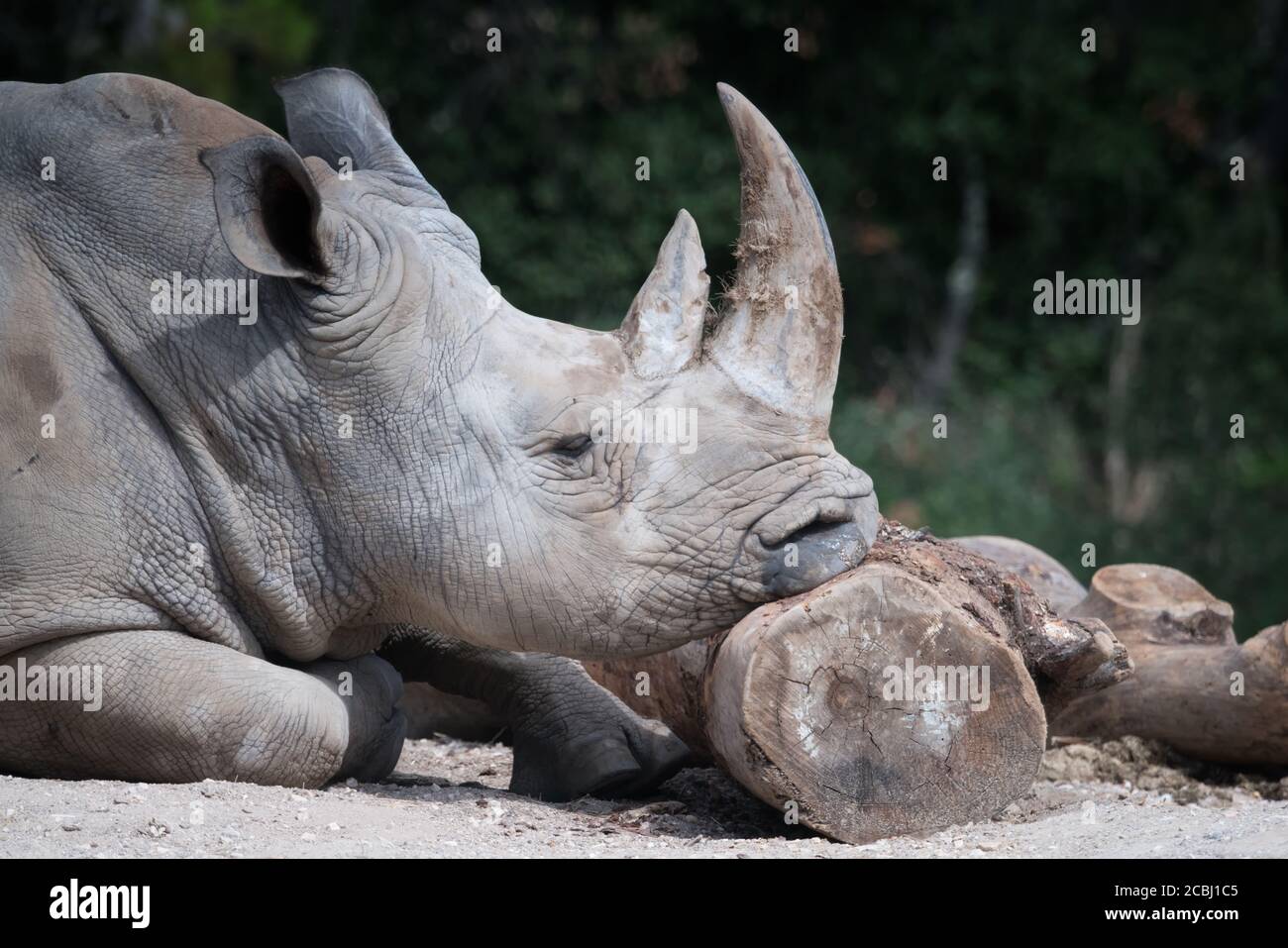 A Southern White Rhino is leans towards a trunk to take a nap. Stock Photohttps://www.alamy.com/image-license-details/?v=1https://www.alamy.com/a-southern-white-rhino-is-leans-towards-a-trunk-to-take-a-nap-image368575205.html
A Southern White Rhino is leans towards a trunk to take a nap. Stock Photohttps://www.alamy.com/image-license-details/?v=1https://www.alamy.com/a-southern-white-rhino-is-leans-towards-a-trunk-to-take-a-nap-image368575205.htmlRM2CBJ1C5–A Southern White Rhino is leans towards a trunk to take a nap.
 Male Red-footed falcon (Falco vespertinus) in flight over the acacia trees. Photographed in Hortobagy, Hungary Stock Photohttps://www.alamy.com/image-license-details/?v=1https://www.alamy.com/male-red-footed-falcon-falco-vespertinus-in-flight-over-the-acacia-trees-photographed-in-hortobagy-hungary-image255995933.html
Male Red-footed falcon (Falco vespertinus) in flight over the acacia trees. Photographed in Hortobagy, Hungary Stock Photohttps://www.alamy.com/image-license-details/?v=1https://www.alamy.com/male-red-footed-falcon-falco-vespertinus-in-flight-over-the-acacia-trees-photographed-in-hortobagy-hungary-image255995933.htmlRMTTDHBW–Male Red-footed falcon (Falco vespertinus) in flight over the acacia trees. Photographed in Hortobagy, Hungary
 221028 -- NAIROBI, Oct. 28, 2022 -- Lemurs are seen near Antananarivo, Madagascar, Oct. 21, 2022. Many species of lemurs are listed on the International Union for Conservation of Nature IUCN Red List of Threatened Species and are in danger of extinction due to habitat destruction and illegal hunting in recent years. Photo by /Xinhua MADAGASCAR-LEMUR IakoxRandrianarivelo PUBLICATIONxNOTxINxCHN Stock Photohttps://www.alamy.com/image-license-details/?v=1https://www.alamy.com/221028-nairobi-oct-28-2022-lemurs-are-seen-near-antananarivo-madagascar-oct-21-2022-many-species-of-lemurs-are-listed-on-the-international-union-for-conservation-of-nature-iucn-red-list-of-threatened-species-and-are-in-danger-of-extinction-due-to-habitat-destruction-and-illegal-hunting-in-recent-years-photo-by-xinhua-madagascar-lemur-iakoxrandrianarivelo-publicationxnotxinxchn-image565320397.html
221028 -- NAIROBI, Oct. 28, 2022 -- Lemurs are seen near Antananarivo, Madagascar, Oct. 21, 2022. Many species of lemurs are listed on the International Union for Conservation of Nature IUCN Red List of Threatened Species and are in danger of extinction due to habitat destruction and illegal hunting in recent years. Photo by /Xinhua MADAGASCAR-LEMUR IakoxRandrianarivelo PUBLICATIONxNOTxINxCHN Stock Photohttps://www.alamy.com/image-license-details/?v=1https://www.alamy.com/221028-nairobi-oct-28-2022-lemurs-are-seen-near-antananarivo-madagascar-oct-21-2022-many-species-of-lemurs-are-listed-on-the-international-union-for-conservation-of-nature-iucn-red-list-of-threatened-species-and-are-in-danger-of-extinction-due-to-habitat-destruction-and-illegal-hunting-in-recent-years-photo-by-xinhua-madagascar-lemur-iakoxrandrianarivelo-publicationxnotxinxchn-image565320397.htmlRM2RRMFX5–221028 -- NAIROBI, Oct. 28, 2022 -- Lemurs are seen near Antananarivo, Madagascar, Oct. 21, 2022. Many species of lemurs are listed on the International Union for Conservation of Nature IUCN Red List of Threatened Species and are in danger of extinction due to habitat destruction and illegal hunting in recent years. Photo by /Xinhua MADAGASCAR-LEMUR IakoxRandrianarivelo PUBLICATIONxNOTxINxCHN
 The Himalayan goral (Naemorhedus goral) is a bovid species that occur in the Himalayas from Pakistan, Nepal, Bhutan, southern Tibet, and the states of Sikkim and Arunachal Pradesh in India to western Myanmar. It is listed as Near Threatened on the IUCN Red List and CITES Appendix I because the population is thought to be declining significantly due to habitat loss and poaching for meat. Gorals are extremely difficult to spot because their camouflage is extremely effective, along with the fact that they lie motionless and can Stand at the vertical edge of a rock cliff. A Himalayan Goral and faw Stock Photohttps://www.alamy.com/image-license-details/?v=1https://www.alamy.com/the-himalayan-goral-naemorhedus-goral-is-a-bovid-species-that-occur-in-the-himalayas-from-pakistan-nepal-bhutan-southern-tibet-and-the-states-of-sikkim-and-arunachal-pradesh-in-india-to-western-myanmar-it-is-listed-as-near-threatened-on-the-iucn-red-list-and-cites-appendix-i-because-the-population-is-thought-to-be-declining-significantly-due-to-habitat-loss-and-poaching-for-meat-gorals-are-extremely-difficult-to-spot-because-their-camouflage-is-extremely-effective-along-with-the-fact-that-they-lie-motionless-and-can-stand-at-the-vertical-edge-of-a-rock-cliff-a-himalayan-goral-and-faw-image490170145.html
The Himalayan goral (Naemorhedus goral) is a bovid species that occur in the Himalayas from Pakistan, Nepal, Bhutan, southern Tibet, and the states of Sikkim and Arunachal Pradesh in India to western Myanmar. It is listed as Near Threatened on the IUCN Red List and CITES Appendix I because the population is thought to be declining significantly due to habitat loss and poaching for meat. Gorals are extremely difficult to spot because their camouflage is extremely effective, along with the fact that they lie motionless and can Stand at the vertical edge of a rock cliff. A Himalayan Goral and faw Stock Photohttps://www.alamy.com/image-license-details/?v=1https://www.alamy.com/the-himalayan-goral-naemorhedus-goral-is-a-bovid-species-that-occur-in-the-himalayas-from-pakistan-nepal-bhutan-southern-tibet-and-the-states-of-sikkim-and-arunachal-pradesh-in-india-to-western-myanmar-it-is-listed-as-near-threatened-on-the-iucn-red-list-and-cites-appendix-i-because-the-population-is-thought-to-be-declining-significantly-due-to-habitat-loss-and-poaching-for-meat-gorals-are-extremely-difficult-to-spot-because-their-camouflage-is-extremely-effective-along-with-the-fact-that-they-lie-motionless-and-can-stand-at-the-vertical-edge-of-a-rock-cliff-a-himalayan-goral-and-faw-image490170145.htmlRM2KDD50H–The Himalayan goral (Naemorhedus goral) is a bovid species that occur in the Himalayas from Pakistan, Nepal, Bhutan, southern Tibet, and the states of Sikkim and Arunachal Pradesh in India to western Myanmar. It is listed as Near Threatened on the IUCN Red List and CITES Appendix I because the population is thought to be declining significantly due to habitat loss and poaching for meat. Gorals are extremely difficult to spot because their camouflage is extremely effective, along with the fact that they lie motionless and can Stand at the vertical edge of a rock cliff. A Himalayan Goral and faw
 Peruvian Pelican (Pelecanus thagus) in Flight in the Ballestas Islands, Peru Stock Photohttps://www.alamy.com/image-license-details/?v=1https://www.alamy.com/peruvian-pelican-pelecanus-thagus-in-flight-in-the-ballestas-islands-peru-image260780987.html
Peruvian Pelican (Pelecanus thagus) in Flight in the Ballestas Islands, Peru Stock Photohttps://www.alamy.com/image-license-details/?v=1https://www.alamy.com/peruvian-pelican-pelecanus-thagus-in-flight-in-the-ballestas-islands-peru-image260780987.htmlRFW47GPK–Peruvian Pelican (Pelecanus thagus) in Flight in the Ballestas Islands, Peru
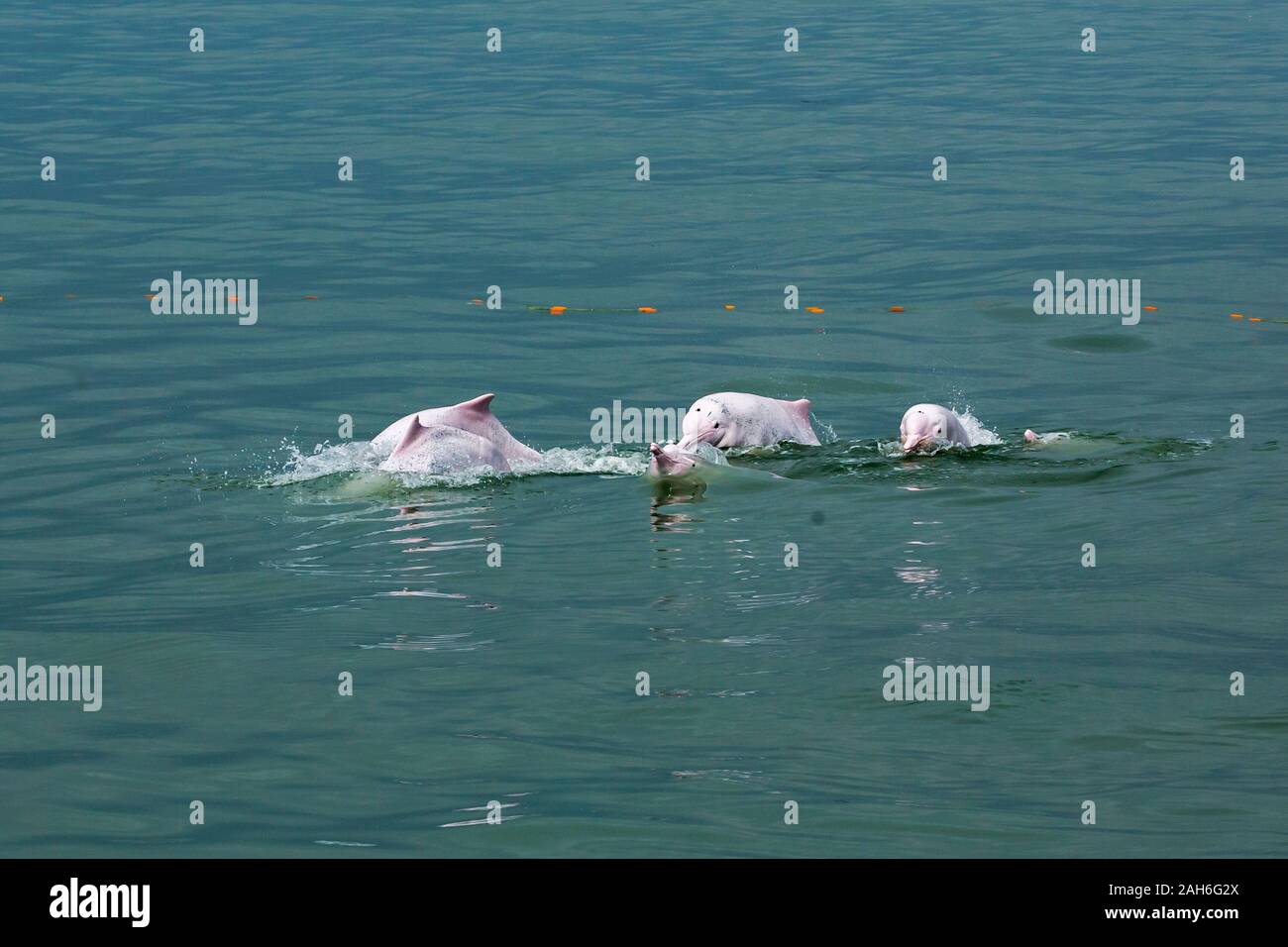 Indo-Pacific Humpback Dolphin / Chinese White Dolphin / Pink Dolphin (Sousa Chinensis) in the waters of Hong Kong, near a broken fishing net Stock Photohttps://www.alamy.com/image-license-details/?v=1https://www.alamy.com/indo-pacific-humpback-dolphin-chinese-white-dolphin-pink-dolphin-sousa-chinensis-in-the-waters-of-hong-kong-near-a-broken-fishing-net-image337590482.html
Indo-Pacific Humpback Dolphin / Chinese White Dolphin / Pink Dolphin (Sousa Chinensis) in the waters of Hong Kong, near a broken fishing net Stock Photohttps://www.alamy.com/image-license-details/?v=1https://www.alamy.com/indo-pacific-humpback-dolphin-chinese-white-dolphin-pink-dolphin-sousa-chinensis-in-the-waters-of-hong-kong-near-a-broken-fishing-net-image337590482.htmlRF2AH6G2X–Indo-Pacific Humpback Dolphin / Chinese White Dolphin / Pink Dolphin (Sousa Chinensis) in the waters of Hong Kong, near a broken fishing net
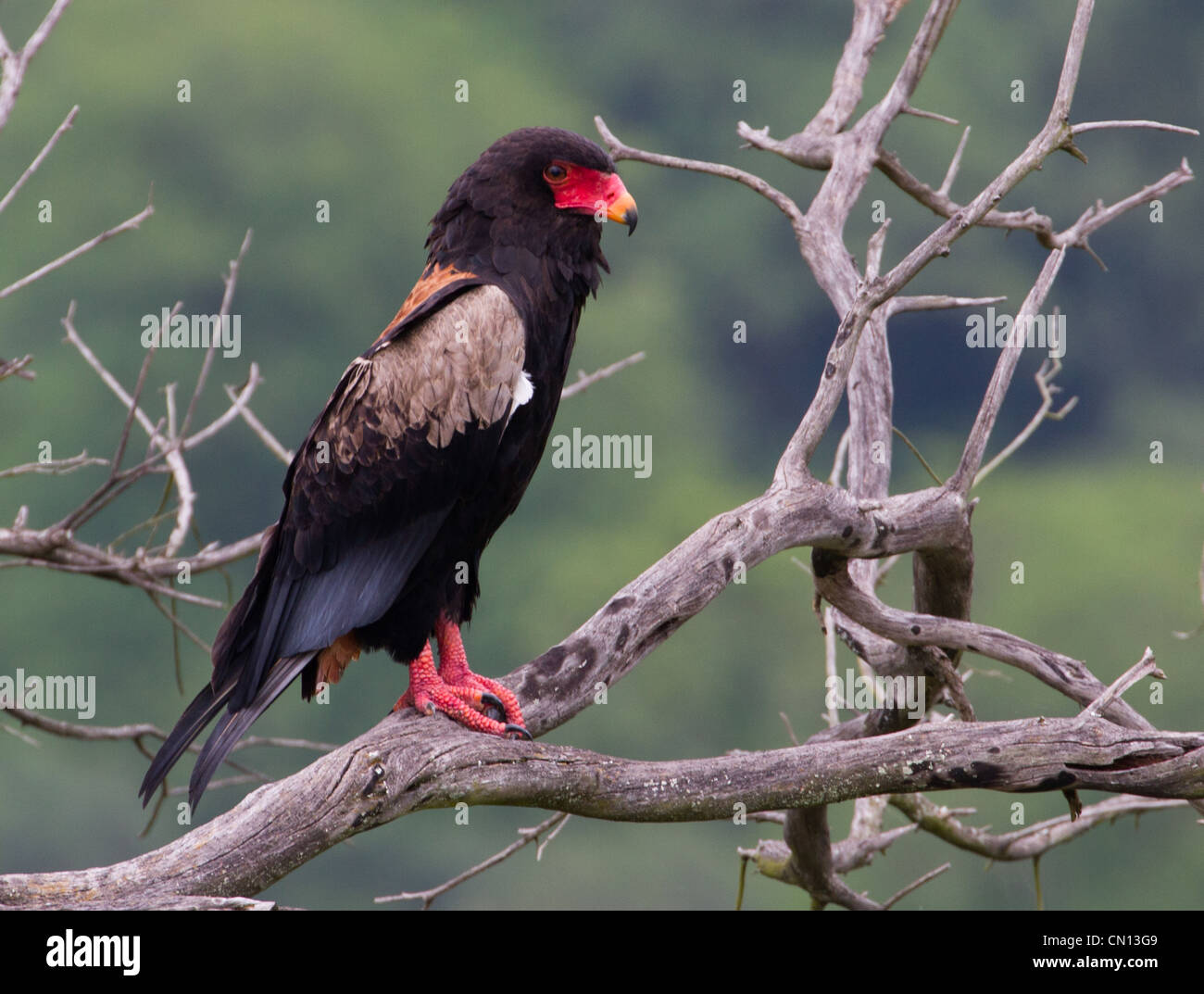 Bataleur Eagle (Terathoplus ecaudatus) perched in Queen Elizabeth National Park, Uganda Stock Photohttps://www.alamy.com/image-license-details/?v=1https://www.alamy.com/stock-photo-bataleur-eagle-terathoplus-ecaudatus-perched-in-queen-elizabeth-national-47353273.html
Bataleur Eagle (Terathoplus ecaudatus) perched in Queen Elizabeth National Park, Uganda Stock Photohttps://www.alamy.com/image-license-details/?v=1https://www.alamy.com/stock-photo-bataleur-eagle-terathoplus-ecaudatus-perched-in-queen-elizabeth-national-47353273.htmlRFCN13G9–Bataleur Eagle (Terathoplus ecaudatus) perched in Queen Elizabeth National Park, Uganda
 Shiver of Blacktip Sharks, Carcharhinus limbatus, Near Threatened, Port St. Johns, Wild Coast, Eastern Cape, Transkei, South Africa, Africa Stock Photohttps://www.alamy.com/image-license-details/?v=1https://www.alamy.com/shiver-of-blacktip-sharks-carcharhinus-limbatus-near-threatened-port-st-johns-wild-coast-eastern-cape-transkei-south-africa-africa-image447539337.html
Shiver of Blacktip Sharks, Carcharhinus limbatus, Near Threatened, Port St. Johns, Wild Coast, Eastern Cape, Transkei, South Africa, Africa Stock Photohttps://www.alamy.com/image-license-details/?v=1https://www.alamy.com/shiver-of-blacktip-sharks-carcharhinus-limbatus-near-threatened-port-st-johns-wild-coast-eastern-cape-transkei-south-africa-africa-image447539337.htmlRM2H034YN–Shiver of Blacktip Sharks, Carcharhinus limbatus, Near Threatened, Port St. Johns, Wild Coast, Eastern Cape, Transkei, South Africa, Africa
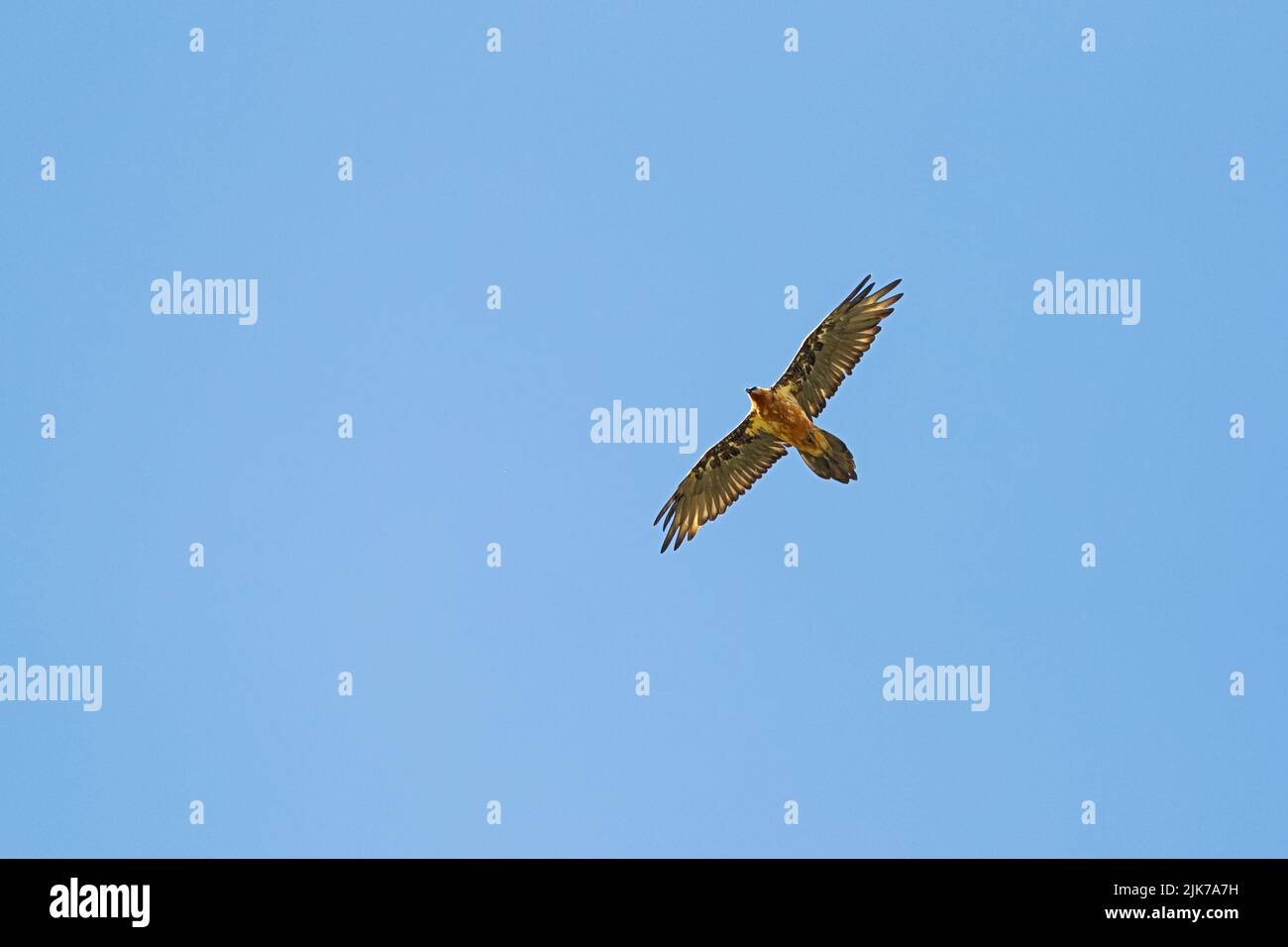 An adult Bearded Vultures or Lammergeier (Gypaetus barbatus) circeling at the blue sky above the photographer Stock Photohttps://www.alamy.com/image-license-details/?v=1https://www.alamy.com/an-adult-bearded-vultures-or-lammergeier-gypaetus-barbatus-circeling-at-the-blue-sky-above-the-photographer-image476520117.html
An adult Bearded Vultures or Lammergeier (Gypaetus barbatus) circeling at the blue sky above the photographer Stock Photohttps://www.alamy.com/image-license-details/?v=1https://www.alamy.com/an-adult-bearded-vultures-or-lammergeier-gypaetus-barbatus-circeling-at-the-blue-sky-above-the-photographer-image476520117.htmlRM2JK7A7H–An adult Bearded Vultures or Lammergeier (Gypaetus barbatus) circeling at the blue sky above the photographer
 Mannetje Rode korenbout, Male Red Chaser Stock Photohttps://www.alamy.com/image-license-details/?v=1https://www.alamy.com/mannetje-rode-korenbout-male-red-chaser-image211626882.html
Mannetje Rode korenbout, Male Red Chaser Stock Photohttps://www.alamy.com/image-license-details/?v=1https://www.alamy.com/mannetje-rode-korenbout-male-red-chaser-image211626882.htmlRMP88C6X–Mannetje Rode korenbout, Male Red Chaser
 Echinus esculentus, Print, Echinus esculentus, the European edible sea urchin or common sea urchin, is a species of marine invertebrate in the Echinidae family. It is found in coastal areas of western Europe down to a depth of 1, 200 m (3, 900 ft). It is considered 'Near threatened' in the IUCN Red List of Threatened Species Stock Photohttps://www.alamy.com/image-license-details/?v=1https://www.alamy.com/echinus-esculentus-print-echinus-esculentus-the-european-edible-sea-urchin-or-common-sea-urchin-is-a-species-of-marine-invertebrate-in-the-echinidae-family-it-is-found-in-coastal-areas-of-western-europe-down-to-a-depth-of-1-200-m-3-900-ft-it-is-considered-near-threatened-in-the-iucn-red-list-of-threatened-species-image328678797.html
Echinus esculentus, Print, Echinus esculentus, the European edible sea urchin or common sea urchin, is a species of marine invertebrate in the Echinidae family. It is found in coastal areas of western Europe down to a depth of 1, 200 m (3, 900 ft). It is considered 'Near threatened' in the IUCN Red List of Threatened Species Stock Photohttps://www.alamy.com/image-license-details/?v=1https://www.alamy.com/echinus-esculentus-print-echinus-esculentus-the-european-edible-sea-urchin-or-common-sea-urchin-is-a-species-of-marine-invertebrate-in-the-echinidae-family-it-is-found-in-coastal-areas-of-western-europe-down-to-a-depth-of-1-200-m-3-900-ft-it-is-considered-near-threatened-in-the-iucn-red-list-of-threatened-species-image328678797.htmlRM2A2MH4D–Echinus esculentus, Print, Echinus esculentus, the European edible sea urchin or common sea urchin, is a species of marine invertebrate in the Echinidae family. It is found in coastal areas of western Europe down to a depth of 1, 200 m (3, 900 ft). It is considered 'Near threatened' in the IUCN Red List of Threatened Species
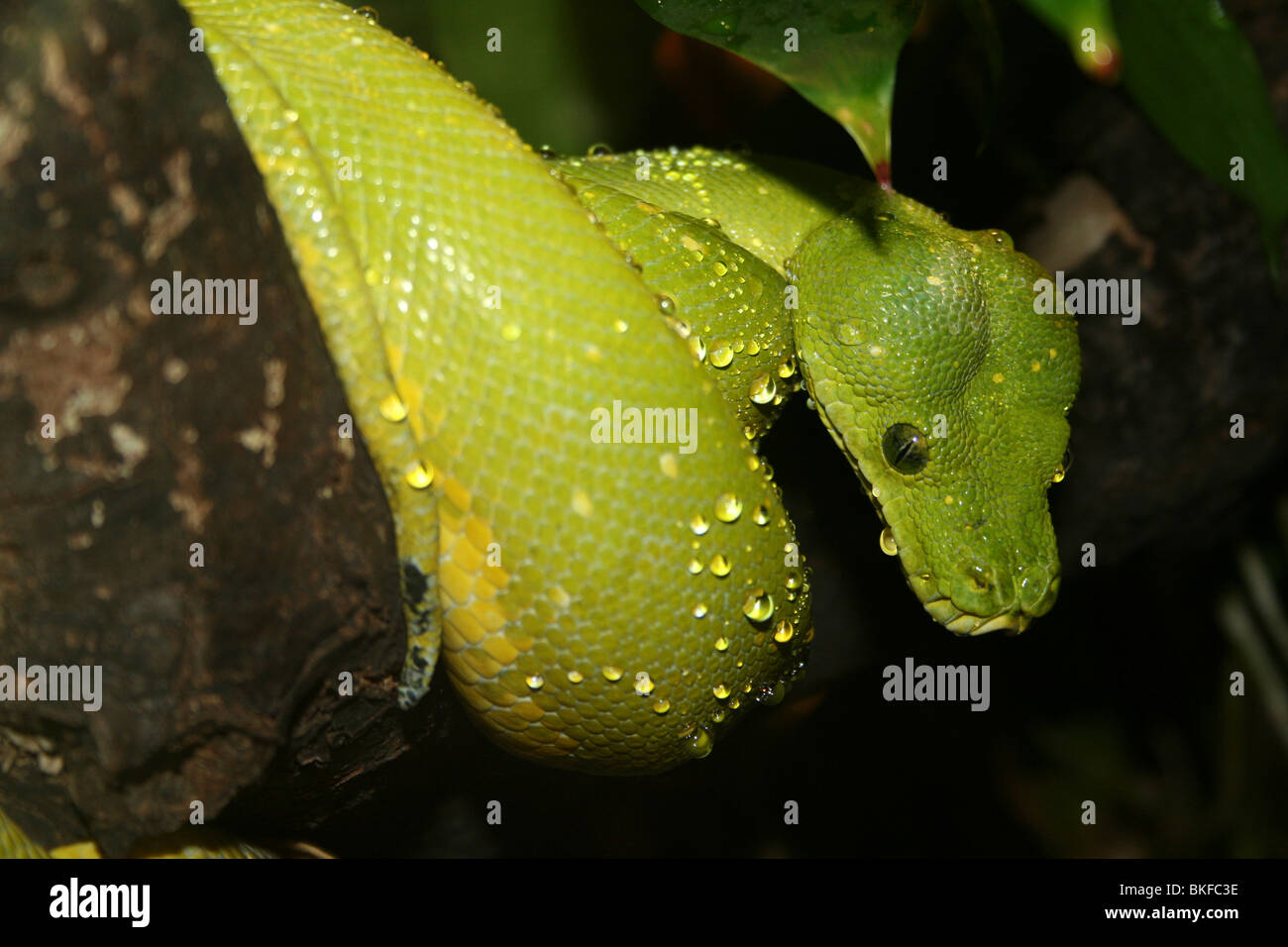 Green Python Chondropython viridis Taken at Chester Zoo, UK Stock Photohttps://www.alamy.com/image-license-details/?v=1https://www.alamy.com/stock-photo-green-python-chondropython-viridis-taken-at-chester-zoo-uk-29227618.html
Green Python Chondropython viridis Taken at Chester Zoo, UK Stock Photohttps://www.alamy.com/image-license-details/?v=1https://www.alamy.com/stock-photo-green-python-chondropython-viridis-taken-at-chester-zoo-uk-29227618.htmlRMBKFC3E–Green Python Chondropython viridis Taken at Chester Zoo, UK
 Harpy Eagle Harpia harpyja Panama Stock Photohttps://www.alamy.com/image-license-details/?v=1https://www.alamy.com/stock-photo-harpy-eagle-harpia-harpyja-panama-75516204.html
Harpy Eagle Harpia harpyja Panama Stock Photohttps://www.alamy.com/image-license-details/?v=1https://www.alamy.com/stock-photo-harpy-eagle-harpia-harpyja-panama-75516204.htmlRMEAT1K8–Harpy Eagle Harpia harpyja Panama
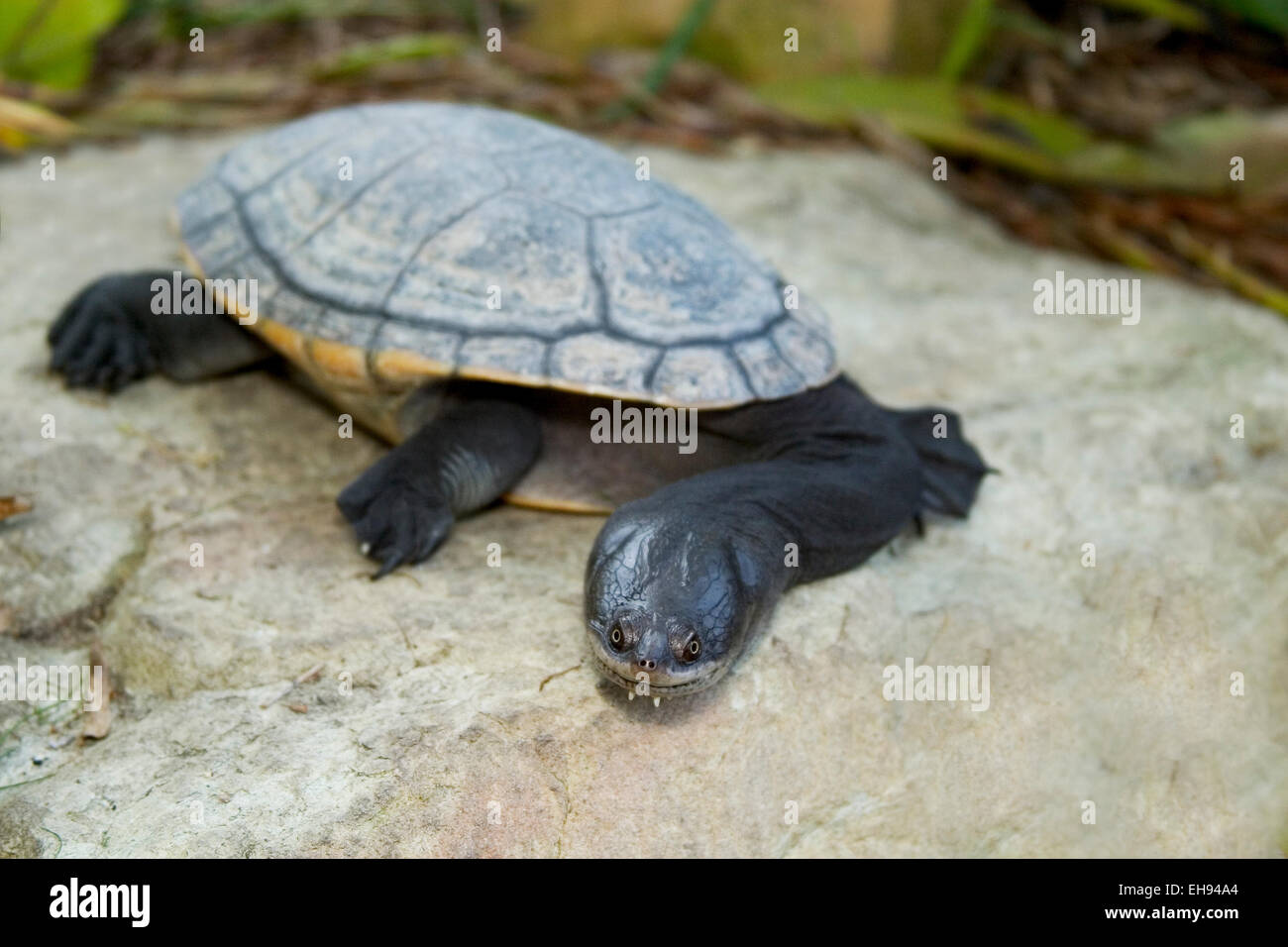 Captive Northern Snake-neck Turtle (Chelodina oblonga) Stock Photohttps://www.alamy.com/image-license-details/?v=1https://www.alamy.com/stock-photo-captive-northern-snake-neck-turtle-chelodina-oblonga-79491612.html
Captive Northern Snake-neck Turtle (Chelodina oblonga) Stock Photohttps://www.alamy.com/image-license-details/?v=1https://www.alamy.com/stock-photo-captive-northern-snake-neck-turtle-chelodina-oblonga-79491612.htmlRMEH94A4–Captive Northern Snake-neck Turtle (Chelodina oblonga)
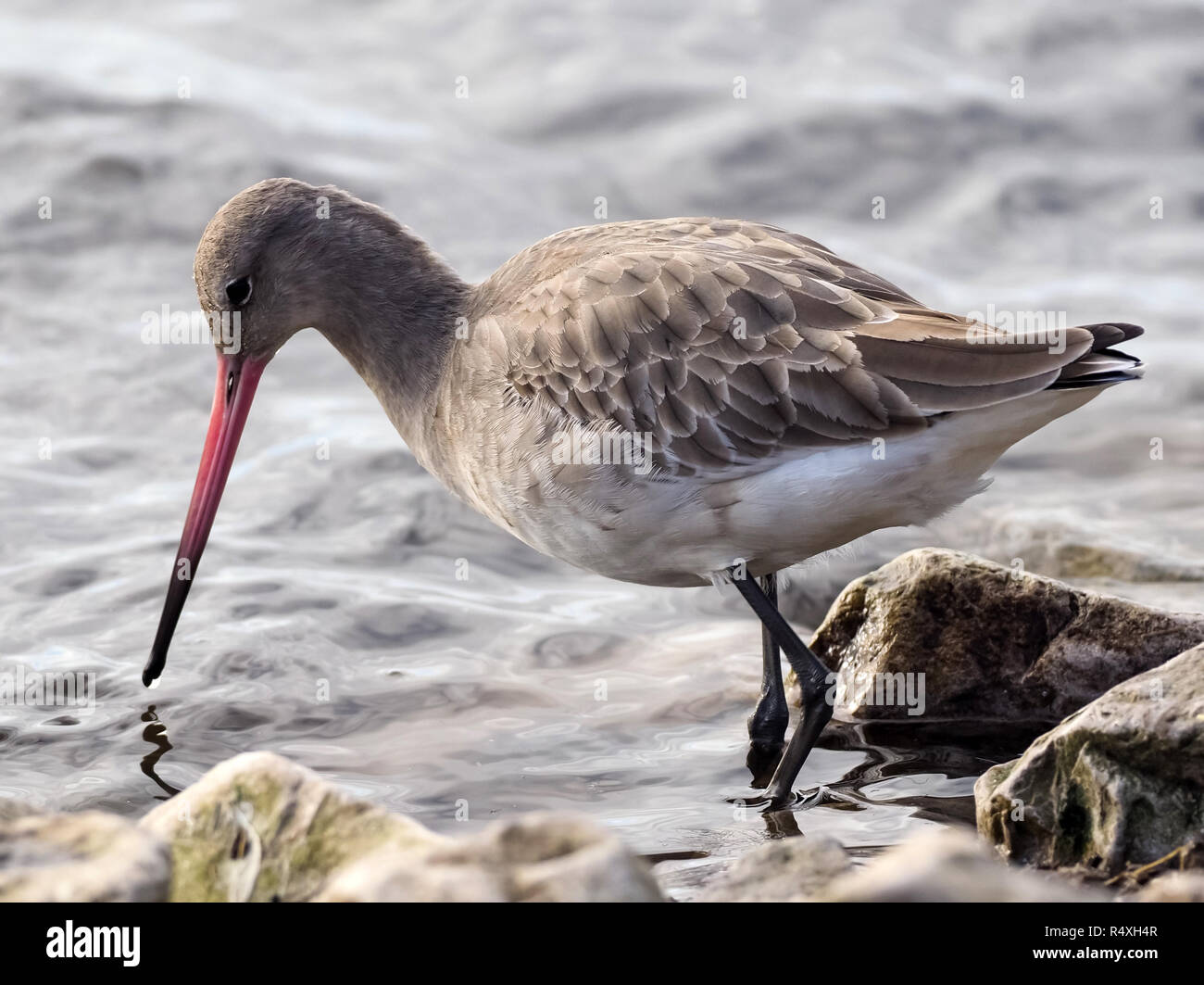 Black-tailed Godwit.Scientific name: Limosa limosa The Black-tailed Godwit is a rare breeding bird in the UK that has suffered from dramatic declines. Classified in the UK as Red under the Birds of Conservation Concern 4: the Red List for Birds (2015). Protected in the UK under the Wildlife and Countryside Act, 1981. Priority Species under the UK Post-2010 Biodiversity Framework. Listed as Near Threatened on the global IUCN Red List of Threatened Species.the Black-tailed Godwit breeds in wet grasslands, and winters on coastal estuaries and marshes, and at inland shallow waters. A sociable bird Stock Photohttps://www.alamy.com/image-license-details/?v=1https://www.alamy.com/black-tailed-godwitscientific-name-limosa-limosa-the-black-tailed-godwit-is-a-rare-breeding-bird-in-the-uk-that-has-suffered-from-dramatic-declines-classified-in-the-uk-as-red-under-the-birds-of-conservation-concern-4-the-red-list-for-birds-2015-protected-in-the-uk-under-the-wildlife-and-countryside-act-1981-priority-species-under-the-uk-post-2010-biodiversity-framework-listed-as-near-threatened-on-the-global-iucn-red-list-of-threatened-speciesthe-black-tailed-godwit-breeds-in-wet-grasslands-and-winters-on-coastal-estuaries-and-marshes-and-at-inland-shallow-waters-a-sociable-bird-image226777623.html
Black-tailed Godwit.Scientific name: Limosa limosa The Black-tailed Godwit is a rare breeding bird in the UK that has suffered from dramatic declines. Classified in the UK as Red under the Birds of Conservation Concern 4: the Red List for Birds (2015). Protected in the UK under the Wildlife and Countryside Act, 1981. Priority Species under the UK Post-2010 Biodiversity Framework. Listed as Near Threatened on the global IUCN Red List of Threatened Species.the Black-tailed Godwit breeds in wet grasslands, and winters on coastal estuaries and marshes, and at inland shallow waters. A sociable bird Stock Photohttps://www.alamy.com/image-license-details/?v=1https://www.alamy.com/black-tailed-godwitscientific-name-limosa-limosa-the-black-tailed-godwit-is-a-rare-breeding-bird-in-the-uk-that-has-suffered-from-dramatic-declines-classified-in-the-uk-as-red-under-the-birds-of-conservation-concern-4-the-red-list-for-birds-2015-protected-in-the-uk-under-the-wildlife-and-countryside-act-1981-priority-species-under-the-uk-post-2010-biodiversity-framework-listed-as-near-threatened-on-the-global-iucn-red-list-of-threatened-speciesthe-black-tailed-godwit-breeds-in-wet-grasslands-and-winters-on-coastal-estuaries-and-marshes-and-at-inland-shallow-waters-a-sociable-bird-image226777623.htmlRMR4XH4R–Black-tailed Godwit.Scientific name: Limosa limosa The Black-tailed Godwit is a rare breeding bird in the UK that has suffered from dramatic declines. Classified in the UK as Red under the Birds of Conservation Concern 4: the Red List for Birds (2015). Protected in the UK under the Wildlife and Countryside Act, 1981. Priority Species under the UK Post-2010 Biodiversity Framework. Listed as Near Threatened on the global IUCN Red List of Threatened Species.the Black-tailed Godwit breeds in wet grasslands, and winters on coastal estuaries and marshes, and at inland shallow waters. A sociable bird
 Himalayan goral, Naemorhedus goral or the gray goral, is native to the Himalayas. It is listed as Near Threatened on the IUCN Red List Stock Photohttps://www.alamy.com/image-license-details/?v=1https://www.alamy.com/himalayan-goral-naemorhedus-goral-or-the-gray-goral-is-native-to-the-himalayas-it-is-listed-as-near-threatened-on-the-iucn-red-list-image549771664.html
Himalayan goral, Naemorhedus goral or the gray goral, is native to the Himalayas. It is listed as Near Threatened on the IUCN Red List Stock Photohttps://www.alamy.com/image-license-details/?v=1https://www.alamy.com/himalayan-goral-naemorhedus-goral-or-the-gray-goral-is-native-to-the-himalayas-it-is-listed-as-near-threatened-on-the-iucn-red-list-image549771664.htmlRF2PXC7A8–Himalayan goral, Naemorhedus goral or the gray goral, is native to the Himalayas. It is listed as Near Threatened on the IUCN Red List
 Ring-tailed lemur (Lemur catti) in captivity at the Tropical Zoo in Syon Park, London. Stock Photohttps://www.alamy.com/image-license-details/?v=1https://www.alamy.com/stock-photo-ring-tailed-lemur-lemur-catti-in-captivity-at-the-tropical-zoo-in-38492321.html
Ring-tailed lemur (Lemur catti) in captivity at the Tropical Zoo in Syon Park, London. Stock Photohttps://www.alamy.com/image-license-details/?v=1https://www.alamy.com/stock-photo-ring-tailed-lemur-lemur-catti-in-captivity-at-the-tropical-zoo-in-38492321.htmlRMC6HD9N–Ring-tailed lemur (Lemur catti) in captivity at the Tropical Zoo in Syon Park, London.
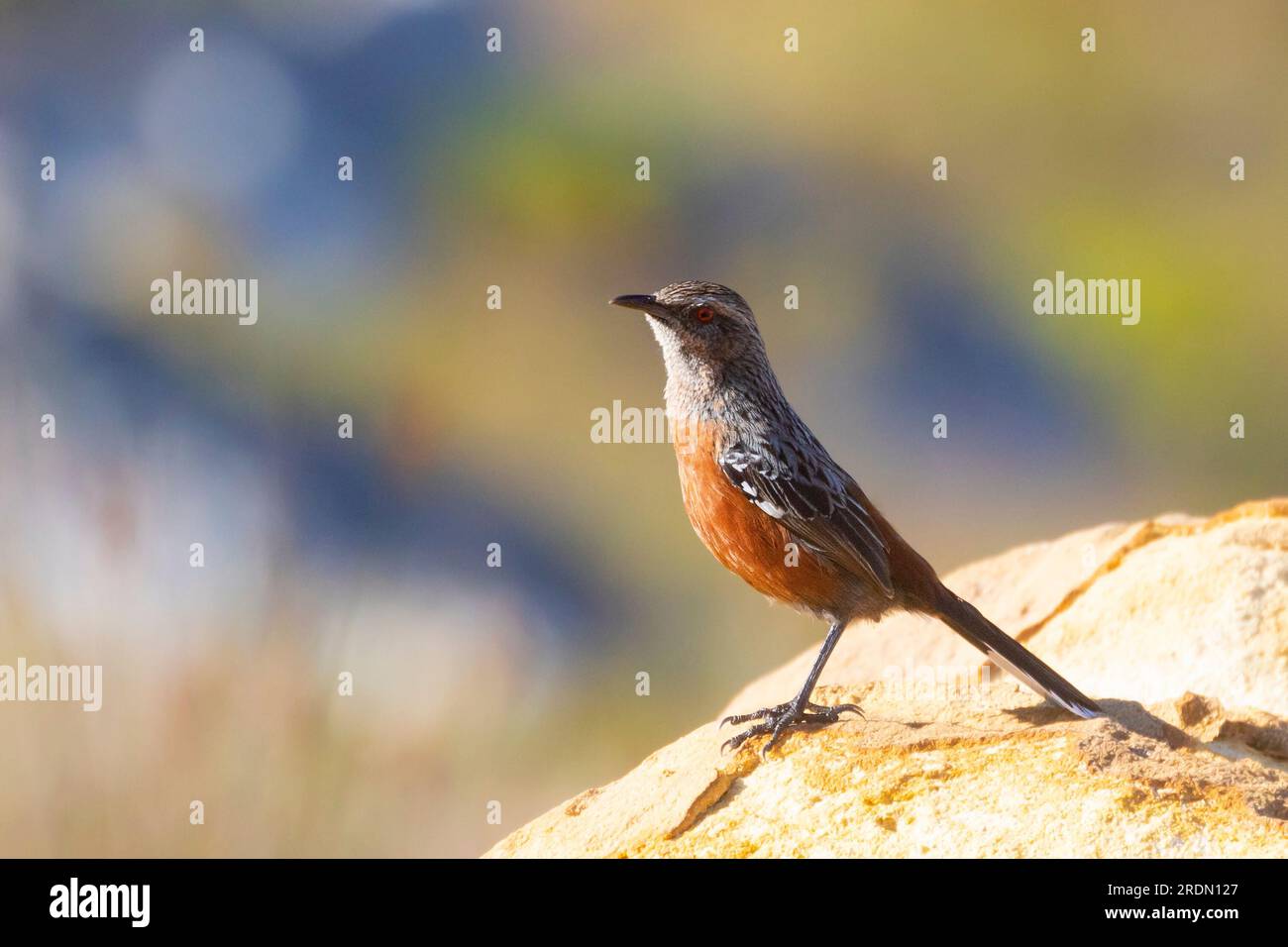 Female Cape Rockjumper (Chaetops frenatus), Rooiels, Rooi Els, Rooi-els, Western Cape South Africa. A Near Threatened endemic Fynbos species Stock Photohttps://www.alamy.com/image-license-details/?v=1https://www.alamy.com/female-cape-rockjumper-chaetops-frenatus-rooiels-rooi-els-rooi-els-western-cape-south-africa-a-near-threatened-endemic-fynbos-species-image559184143.html
Female Cape Rockjumper (Chaetops frenatus), Rooiels, Rooi Els, Rooi-els, Western Cape South Africa. A Near Threatened endemic Fynbos species Stock Photohttps://www.alamy.com/image-license-details/?v=1https://www.alamy.com/female-cape-rockjumper-chaetops-frenatus-rooiels-rooi-els-rooi-els-western-cape-south-africa-a-near-threatened-endemic-fynbos-species-image559184143.htmlRM2RDN127–Female Cape Rockjumper (Chaetops frenatus), Rooiels, Rooi Els, Rooi-els, Western Cape South Africa. A Near Threatened endemic Fynbos species
 Yellow-crowned Parakeet - Cyanoramphus auriceps - holding food in its talons to aid eating, while perched on a branch in defused sunlight. Stock Photohttps://www.alamy.com/image-license-details/?v=1https://www.alamy.com/yellow-crowned-parakeet-cyanoramphus-auriceps-holding-food-in-its-talons-to-aid-eating-while-perched-on-a-branch-in-defused-sunlight-image561485570.html
Yellow-crowned Parakeet - Cyanoramphus auriceps - holding food in its talons to aid eating, while perched on a branch in defused sunlight. Stock Photohttps://www.alamy.com/image-license-details/?v=1https://www.alamy.com/yellow-crowned-parakeet-cyanoramphus-auriceps-holding-food-in-its-talons-to-aid-eating-while-perched-on-a-branch-in-defused-sunlight-image561485570.htmlRM2RHDTG2–Yellow-crowned Parakeet - Cyanoramphus auriceps - holding food in its talons to aid eating, while perched on a branch in defused sunlight.
 Maned wolves are living in the grasslands of South America (Brazil, Paraguay, Argentina, Bolivia, Peru and rarely Uruguay). The maned wolf is the tallest of the wild canids with a weight of 23kg and stands 90cm tall at the shoulder, has a head-body length of 100 cm with the tail adding another 45 cm. Stock Photohttps://www.alamy.com/image-license-details/?v=1https://www.alamy.com/stock-photo-maned-wolves-are-living-in-the-grasslands-of-south-america-brazil-137462901.html
Maned wolves are living in the grasslands of South America (Brazil, Paraguay, Argentina, Bolivia, Peru and rarely Uruguay). The maned wolf is the tallest of the wild canids with a weight of 23kg and stands 90cm tall at the shoulder, has a head-body length of 100 cm with the tail adding another 45 cm. Stock Photohttps://www.alamy.com/image-license-details/?v=1https://www.alamy.com/stock-photo-maned-wolves-are-living-in-the-grasslands-of-south-america-brazil-137462901.htmlRMHYHY99–Maned wolves are living in the grasslands of South America (Brazil, Paraguay, Argentina, Bolivia, Peru and rarely Uruguay). The maned wolf is the tallest of the wild canids with a weight of 23kg and stands 90cm tall at the shoulder, has a head-body length of 100 cm with the tail adding another 45 cm.
 Female Red-footed falcon (Falco vespertinus) in flight over the acacia trees. Photographed in Hortobagy, Hungary Stock Photohttps://www.alamy.com/image-license-details/?v=1https://www.alamy.com/female-red-footed-falcon-falco-vespertinus-in-flight-over-the-acacia-trees-photographed-in-hortobagy-hungary-image255996047.html
Female Red-footed falcon (Falco vespertinus) in flight over the acacia trees. Photographed in Hortobagy, Hungary Stock Photohttps://www.alamy.com/image-license-details/?v=1https://www.alamy.com/female-red-footed-falcon-falco-vespertinus-in-flight-over-the-acacia-trees-photographed-in-hortobagy-hungary-image255996047.htmlRMTTDHFY–Female Red-footed falcon (Falco vespertinus) in flight over the acacia trees. Photographed in Hortobagy, Hungary